Cathedral MUSIC Cathedral MUSIC

ISSUE 2/06
P3103 CM cover FINAL 27/10/06 14:11 Page 2
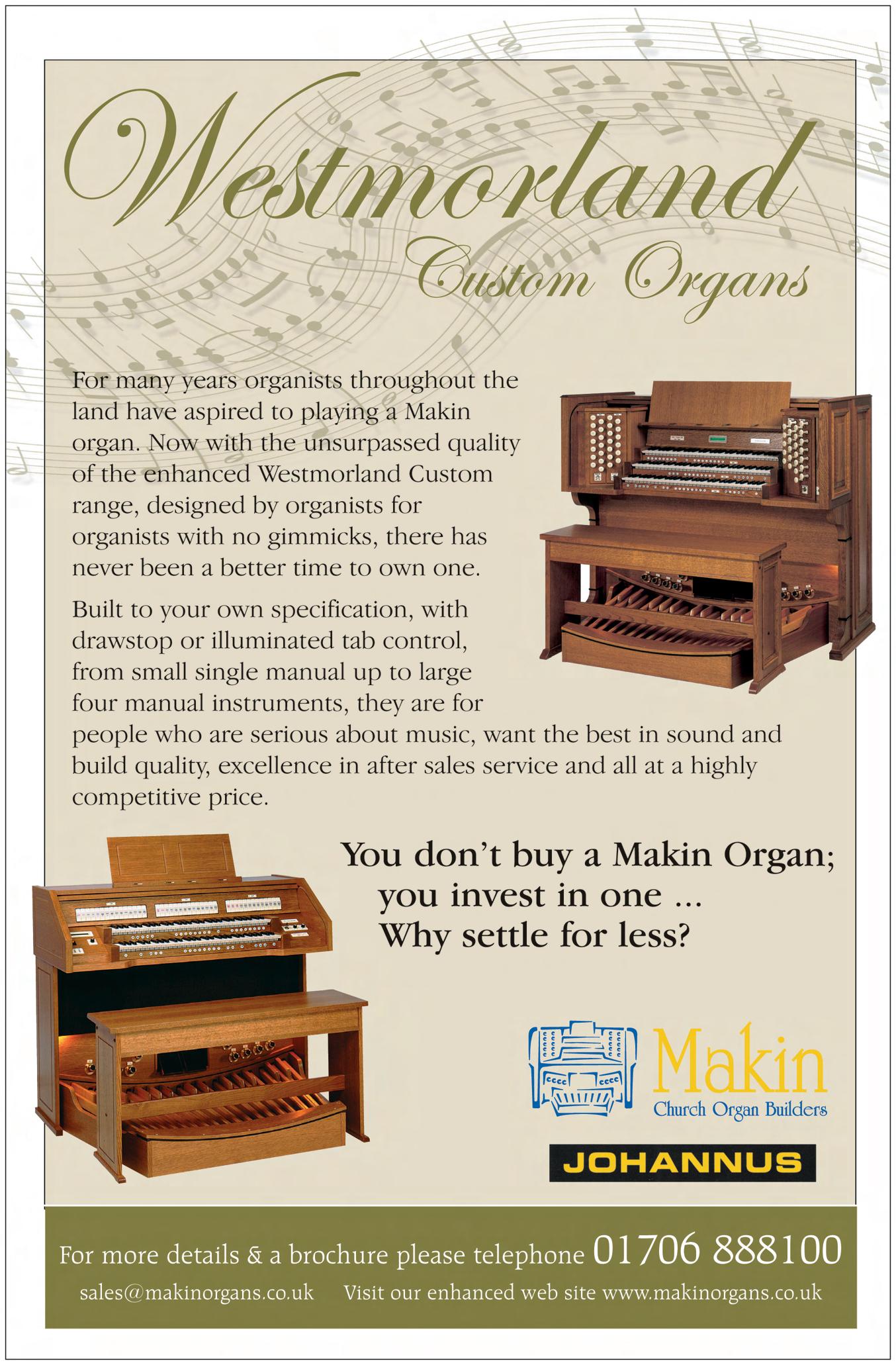
P3103 CM OCTOBER 06 27/10/06 13:59 Page 2
Cathedral Music
CATHEDRAL MUSIC is produced twice a year, in May and November
ISSN 1363-6960 NOVEMBER 2006
Editor
Andrew Palmer
21 Belle Vue Terrace Ripon North Yorkshire HG4 2QS ajpalmer@lineone.net
Assistant Editor Roger Tucker
Editorial Advisers
David Flood & Matthew Owens
Production Manager Graham Hermon FCM e-mail FCM@netcomuk.co.uk
Website www.fcm.org.uk
The views expressed in articles are those of the contributor and do not necessarily represent any official policy of Friends of Cathedral Music. Likewise, advertisements are printed in good faith. Their inclusion does not imply endorsement by FCM. All communications regarding advertising should be addressed to:-
Roger Tucker
16 Rodenhurst Road LONDON SW4 8AR Tel:0208 674 4916 cathedralmusic@supanet.com
inQuire Editor Richard Osmond
10 Hazel Grove, Badger Farm, Winchester, Hants SO22 4PQ Tel/Fax:01962 850818
Every effort has been made to determine copyright on illustrations used. We apologise to any individuals we may have inadvertently missed. The Editor would be glad to correct any omissions.
Designed and produced by Mypec
The Old Pottery, Fulneck, Pudsey, Leeds, West Yorks LS28 8NT Tel: 0113 255 6866 info@mypec.co.uk www.mypec.co.uk
Cover Photographs
Front Cover Truro Cathedral at dusk.
Photo: Alex Scheele Photography www.scheeledesign.co.uk
Cathedral MUSIC Cathedral MUSIC
The Magazine of the Friends of Cathedral Music
Back Cover Westminster Abbey, where the first broadcast of Choral Evensong came from 80 years ago Photograph © Graham Hermon.
CMComment 4 Andrew Palmer Cathedral Music in the South-West 5 Robert Sharpe discusses the challenges and rewards of music at Truro Cathedral Scott Farrell 10 60 Seconds in Music Profile Spreading their Wings 12 Scott Farrell discusses his role at Newcastle Cathedral Thank God for the BBC’s longest running show! 16 Producer Stephen Shipley on 80 years of broadcasting Choral Evensong inQuire 22 Richard Osmond Cranmer’s Martyrdom 24 The Rt Revd Richard Chartres, Bishop of London Daniel Hyde 28 60 Seconds in Music Profile The Influence of a 19th century Choir School 30 David Bland Chants & yet more Chant 36 Peter Kirk updates readers on his chants projects Lay Clerks’ Tale 39 Chris Gardner takes us to The Bridge Hotel, Newcastle upon Tyne Dr Harry Bramma – an appreciation 40 Timothy Storey Peterborough Cathedral After the Fire 44 Andrew Reid – Director of Music Festivals Report 2006 48 Roger Tucker Notes & Queries 51 Your questions answered Letters 52 Your views Book Reviews 54 The latest books CD Reviews 55 The latest recordings Cathedral Music 3
P3103 CM OCTOBER 06 27/10/06 13:59 Page 3
Payment of a donation of £3 to the distributor of this magazine is invited to cover the cost of its production and distribution
‘ CM Comment Andrew Palmer’
faith is still the established faith of this country. We should be on our guard against political correctness interfering with the religious preference of a majority of Britons. The BBC does have to reflect the diverse culture of the UK but we are beginning to see signs that this can be at the cost of our glorious heritage. We must not be embarrassed about proclaiming our values, both religious and musical. For now, though, let’s rejoice in Choral Evensong and wish it many happy returns and another 80 years. Now I have to tell you that after 80 years the programme is moving to a new slot, 4pm on Sundays, which starts in February.
‘Goings on’ at the Minster
need to ensure that the charity we are so proud to support makes it to its centenary. We can help by recruiting more members and increasing the amount of money we give. Additionally we need to find some corporate supporters, which is the purpose of our special event at Parliament in December, sponsored by an MP and great supporter of the tradition, Robert Key. Thanks on behalf of FCM to all members for supporting the charity.
The English Chorister
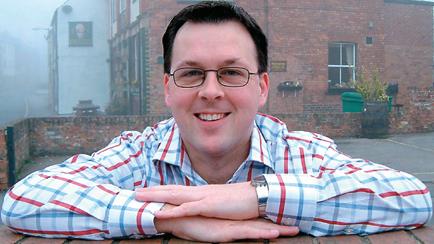
80 and not out
This year has two milestones for lovers of the English choral tradition: one for broadcasting; the other for FCM. A great BBC institution, Choral Evensong, has survived as a minority programme for a staggering 80 years. And what is more, FCM helped to defend it against a cutback. There was a proposal in the 1970s to reduce it to once a month, which would have defeated the object of a weekly opportunity to step inside a rather special place. As a result of widespread protest, in which FCM members played a prominent part, the BBC changed its mind and restored the regular Wednesday slot and even gave us a bonus for a year or two of a second Evensong broadcast on Fridays. As Stephen Shipley points out in his article on page 16, it’s a minor miracle that the programme has survived in an age when budgets are closely monitored and the BBC’s brief is to reflect the ecumenical and multi-faith nature of Britain’s changing religious landscape. He is right to raise these issues but we should remember that the Anglican
Whilst on the subject of broadcasting, one of the few positives to come out of the recent series of programmes about York Minster, shown on BBC 2, was the fact that one of the Minster’s ‘biggest crowd pullers’ was Choral Evensong, which attracts 30,000 visitors a year and therefore these people are exposed to the beauty of cathedral music. It was particularly perverse of the producers to play up the ignorance and iconoclasm of several very inexperienced girl choristers whose attitude in my view was not typical of cathedral choristers. They even put one boy chorister up to yawning inelegantly right towards the camera. There was no doubt that this programme aimed to suggest that children are bored by having to sing in cathedrals.
Golden delights
The other milestone is of course the FCM’s 50th anniversary. Much praise has been heaped on our Founder and first chairman, Ronald Sibthorp. However, we should note that steering us through most of the 50 years following on from his Chairmanship, we have been blessed with Christopher Dearnley, Alan Thurlow and now Peter Toyne. We owe them our thanks for bringing different attributes to the role of chairman. To mark the FCMs Golden Jubilee a total of a £250,000 in grants has been given to choral music foundations this year. However, the threats continue and we
Former St John’s College, Cambridge, Choir School Headmaster and CATHEDRAL MUSIC Editorial Adviser, Alan Mould has written The English Chorister: A History. His book examines the way singers were recruited and educated showing the changes in approach over the centuries, particularly after the Reformation. A flyer is enclosed with this edition and there is a generous 33% discount for readers. I can recommend this book for your consideration.
Cathedral Music 4
‘We must not be embarrassed about proclaiming our values, both religious and musical. For now, though, let’s rejoice in Choral Evensong and wish it many happy returns and another 80 years. ’
P3103 CM OCTOBER 06 27/10/06 14:00 Page 4
‘However, the threats continue and we need to ensure that the charity we are so proud to support makes it to its centenary. We can help by recruiting more members and increasing the amount of money we give. ’
Cathedral Music in the South-West
Fifty years on from the founding of FCM by Ronald Sibthorp whilst Succentor at Truro Cathedral, the current Organist and Director of Music Robert Sharpe discusses the challenges and rewards of music at Truro.
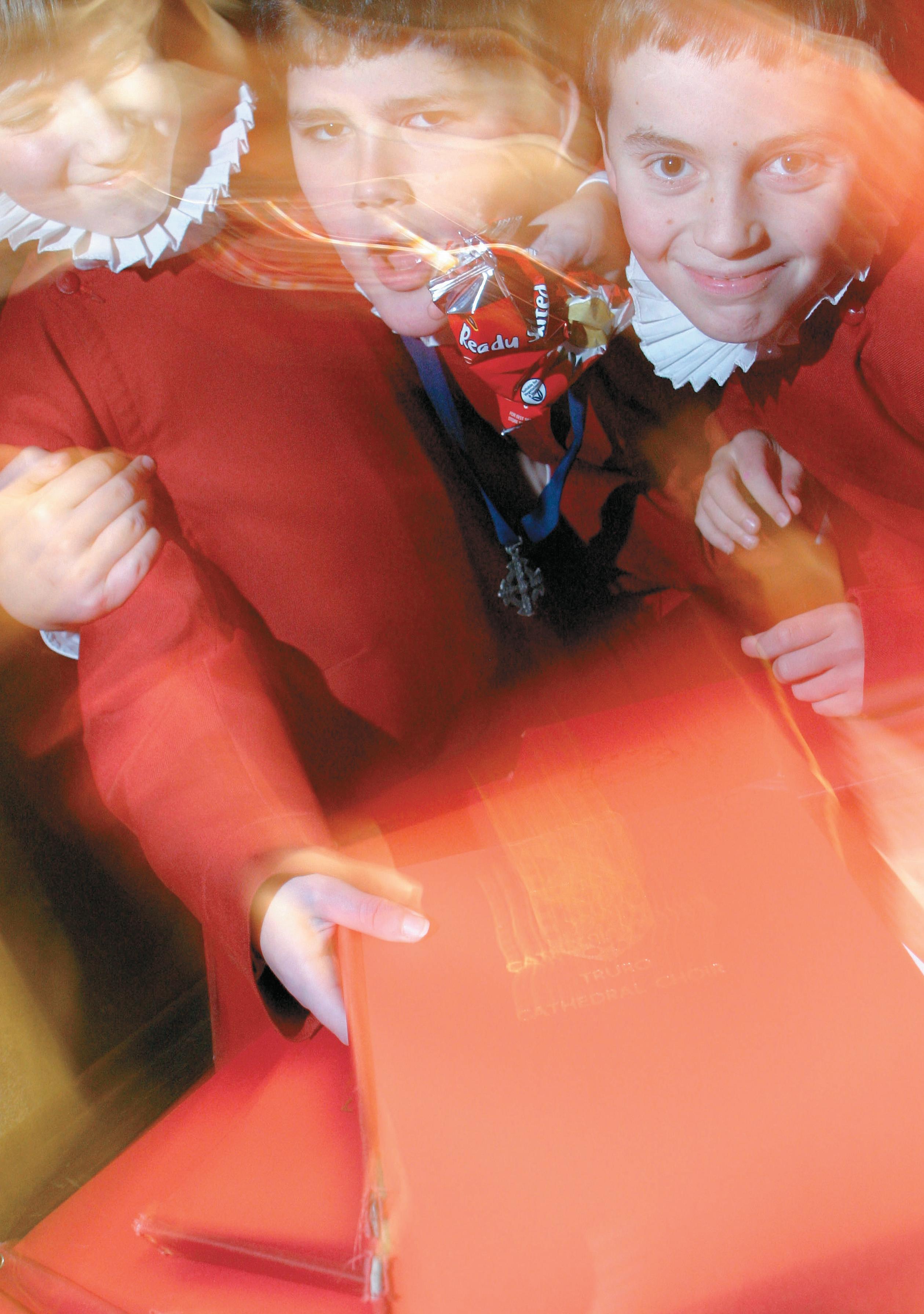
Truro Cathedral is widely considered to be the masterpiece of its architect, John Loughborough Pearson and was consecrated in 1887, the same year that ‘Father’ Henry Willis completed a 4-manual organ of 45-speaking stops. This organ has gained a reputation as being one of the finest of its maker, not least because it has not been excessively altered like so many of his other cathedral organs and to this day it contains no pipes not put there at the start. Many do not realise that the nave of the cathedral was only one bay long when the organ was finished and the building consecrated; it was not completed until 1903. The west towers followed in 1910 and would have looked strikingly clean in comparison with the rest of the building: a vision recently recreated since their cleaning and repair eighteen months ago.
The building has an acoustic which is superb for choral singing and for organ music. The organ’s majestic effect is partly due to its lofty position in a vaulted chamber typical of Pearson and also to Willis’s tremendous chorus reeds which are enhanced by the building. The quiet stops are also exquisite and anything can be used with anything else to make an enormous range of colour for those willing to explore. Sir John Dykes Bower, organist for three years in the 1930s, referred to the instrument as the ‘Little Giant’: a description I have always enjoyed! From the start therefore, a fine organ and fine acoustic enabled a choral tradition to be established.
Cathedral
5 ➤
Music
P3103 CM OCTOBER 06 27/10/06 14:00 Page 5
Bishop Edward White Benson, the first bishop and also dean (the separate office of dean was not created until the 1960s) had grand ideas for the cathedral and provision was made at the start for ten lay vicars (a conscious revival of this old-foundation nomenclature rather than lay clerks) and for boy choristers to be educated at a cathedral school next to the main cathedral church. The lay vicars were only required at the three Sunday services with Evensong on four out of five weekdays being sung by the choristers alone. Bishop Benson created a Festival of Nine Lessons and Carols in 1880 when the cathedral was a temporary wooden hut and this original form of the service (later adopted and modified by a college in Cambridge…) is still sung to a capacity congregation at 7.00pm on Christmas Eve each year, and since 2002, added on the 23rd December as well.
The cathedral has always maintained a catholic tradition and on class one festivals, the lay vicars were required to join the choristers for Solemn Eucharist and Solemn Evensong with both services being outside normal working hours to allow the men to be present. Thus Solemn Evensong was at 7.00pm and Solemn Eucharist at 7.15am! The late Evensong was discontinued many years ago, but the 7.15am full choir Solemn Eucharists (with boiled eggs and toast for everyone afterwards) remained a feature of Truro’s liturgy on Epiphany, Lady Day, Ascension and All Saints until two years ago when they were finally changed to 5.30pm in line with other weekday services and the choral scholars’ sleep patterns.
At the start of the 1980s, the cathedral school was closed having become financially unviable and at the same time the choristers were moved to the newly-established Polwhele House School just outside the city. This splendid school in beautiful grounds has been the cathedral school in effect since then and is a member of the Choir Schools Association. The boys may board on a weekly basis or come in each day. In
either case, everyone goes home at weekends; Truro has never had a tradition of Saturday Evensong. On Sundays, the choristers are brought in by their parents for the two services.
The pattern for the lay vicars remained as it was founded until the early 1980s when Dean Shearlock assumed office and very quickly realised that the sung Matins service on Sunday mornings was no longer required as so few people attended. The upside of this decision was the agreement that the lay vicars would attend for Evensong on Wednesdays instead, thus allowing for two Evensongs and sung Eucharist each week with the full choir. The biggest change since then was instituted by my distinguished predecessor, Andrew Nethsingha, in 1995 when the choral scholarship scheme was started.
At this point, negotiations were made for the men also to sing at Tuesday Evensong with Friday following a year or two later and Monday in 1999. This latter addition was the point at which the regular round of six sung services each week became the full choir of twelve men and eighteen boys. Services sung by the men alone and boys alone happen from time to time, particularly if a feast day falls on a Thursday when the boys are busy at school. The choral scholarships have enabled a steady stream of talented young singers to sing in the choir for a year either before or after university and in recent times, a number of choral scholars have remained in the choir when lay vicar vacancies have arisen.
The choir has been busy with tour and recording projects since 1995 and has had many successful trips to other countries as well as ‘at home’ tours. Five CD recordings have been made over the last four years, and these have all helped to promote Truro’s music to a far wider audience than is able to come to services on a regular basis. We are fortunate that chorister recruitment is relatively strong each year, and we have a high standard of applicant for both the choral
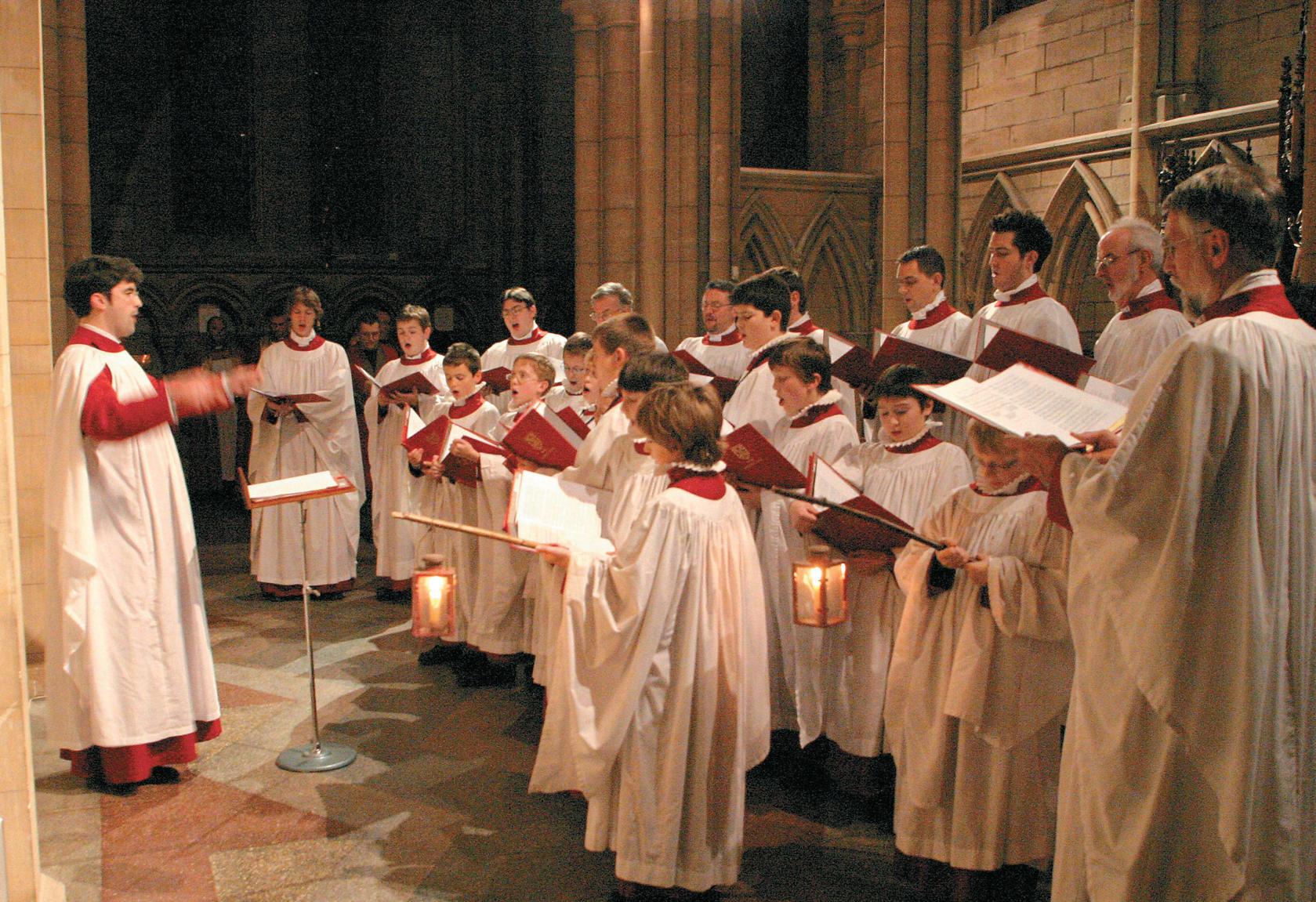
Cathedral Music 6
P3103 CM OCTOBER 06 27/10/06 14:00 Page 6
All photos: Mike Newman www.ocean-image.co.uk
scholarships and the organ scholarship. However, money is a problem and many readers will have seen the choir featured on the television series, A Seaside Parish.
The choral and organ awards were set up with funding from a trust and a house provided by Chapter, and further grants followed. However, more recently, the cost of this has been met by the cathedral, which also maintain the scholarships for the choristers at Polwhele House. The cathedral’s finances are very tight indeed now, especially in view of the fact that it is such a recent foundation. Three years ago, Chapter made the brave and controversial decision to bring in a new style of Chief Executive to sort things out. Many very clever and successful financial decisions were made, which resulted in a considerable improvement in the deficit with no threat to the music.
However, by the time of the filming of A Seaside Parish, the situation was looking bleaker because of a big fall in tourism revenue to Cornwall and the fact that the choir had survived unscathed in a climate of cutting and pruning. During the interregnum following the early retirement of Dean Michael Moxon, the Chief Executive hatched a plan to begin Truro Cathedral Music, in effect a group of people who wanted to support the musical future of the cathedral. A successful launch concert was held (with a large audience, not the one seen on television which was in fact the rehearsal!) and since then members and patrons of TCM have added to the funds for the choir.

There is still some way to go, but, following the appointment of Dean Christopher Hardwick in September 2005, Chapter has decided that it is their wish to maintain our musical tradition without cuts of any sort. There is some way to go in funding terms, but we are now branching out TCM to include schemes for individuals and businesses to support a chorister or a choral scholar for a number of years. FCM’s recent grant of £30,000

Cathedral Music 7 ➤
P3103 CM OCTOBER 06 27/10/06 14:00 Page 7
‘We are fortunate that chorister recruitment is relatively strong each year, and we have a high standard of applicant for both the choral scholarships and the organ scholarship.’
helps to create an endowment for a choral scholar. Rather than seek to create a big endowment fund (although that is a secondary aspect of our plans), we are encouraging people to ‘own’ the choir by contributing from £20 per month, gift aided if they are able. A pool of just 100 such people will give an annual income of between £25,000 and £30,000: around half of what we need each year to cover the shortfall between ringfenced income and actual costs. In addition, we are building a group of people to sponsor the cost of a chorister for five years (£5,500 per year). This scheme will need constant monitoring and new recruits as time goes on, but the plan is to achieve our annual total in this way, together with other grants and support we may achieve from trusts and private individuals.

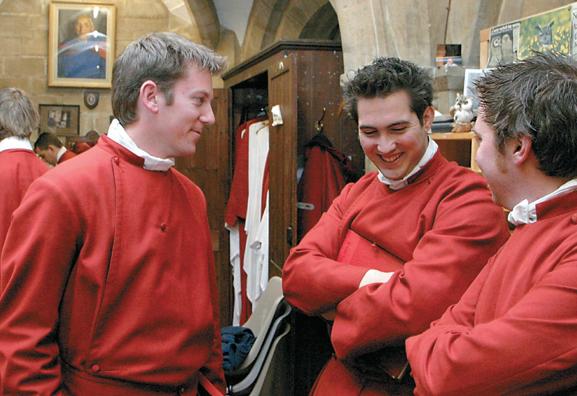
Very interestingly, it quickly became obvious when A Seaside Parish was being shown, that despite being about twelve months out of date, most of the interest from the public was in huge support of the choir with well over £20,000 of donations from individuals. This has resulted in the film crew’s wish to return to Truro and do a follow-up series showing how we have moved on. It will be exciting to see how our plans progress; there are new people in several of the key roles shown in the earlier filming and an immense support from Chapter. I feel strongly that this way of encouraging people who are able to ‘own’ the music of a cathedral is more likely to succeed than a big appeal in a far-off county.
The cathedral has become known over the past six years or so for its pioneering outreach work which has now been taken up by a number of other cathedrals. Attracting funding for the choir is helped immensely by this, as is widening the audience of those able to share what we do. Each term, five or six boys travel with me or Christopher Gray, the cathedral’s brilliant and energetic assistant organist, and Jo Mason, the Headmaster of Polwhele House to three local primary schools on consecutive Monday afternoons. We help to encourage the school choirs, often in tiny village schools, and then they all come to the cathedral on a Thursday evening for an Informal Concert at which each school sings on its own, the choristers sing to them and everyone joins together for a big sing at the end. Many of the parents who attend have never been in the cathedral before, and it is always a real joy to see the children’s faces as they hear the big echo at the end of the descants the choristers sing in the combined pieces.
As a result of the funding available for outreach projects, there is now a County Junior Choir which meets in the practice room in the cathedral’s crypt (a good central location in Truro) each Saturday and has its own enterprising schedule of concerts and events. It is run jointly by Christopher Gray, and Nigel Haywood, who works with many young people in music-making in the diocese.
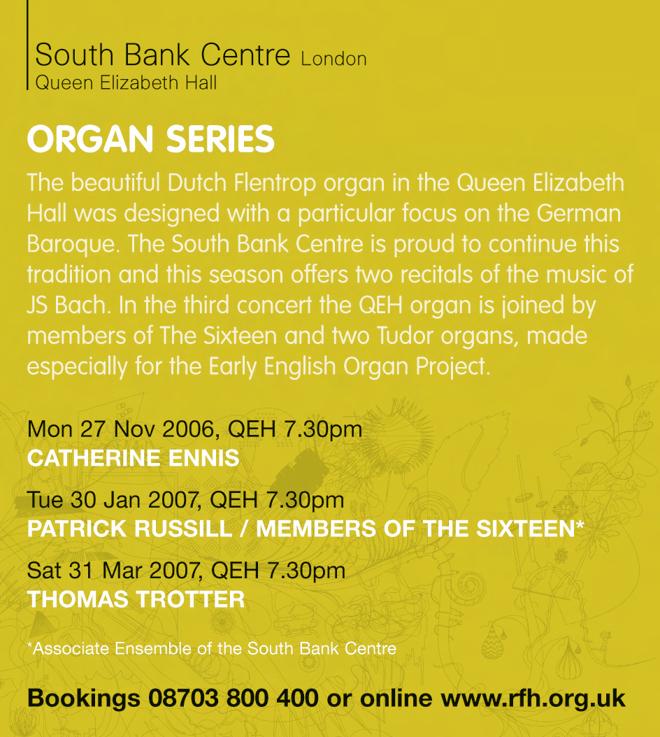
Despite the financial challenges of our music, the rewards of
working in this special place remain considerable. The choir is immensely committed, men and boys (and chorister parents!) alike, and because the full choir sings together almost all the time, there is a tremendous team feeling and pride in the job. The cathedral’s liturgy, under the leadership of our Precentor, Canon Perran Gay, is without parallel for its quality and magnificent ceremonial and it is a real pleasure to work as part of this. In particular, on all class one and class two festivals, evensong gives way to a Solemn Eucharist (with Solemn Evensong and Procession on the eve) which enables us to explore settings of the Mass which may be a greater challenge elsewhere. In Ordinary Time, we sing both Kyrie and Gloria on Sundays which enables us, unusually for the Anglican tradition, to enjoy works like Vaughan Williams’ Mass and Kodaly’s Missa brevis to the full, whilst having the option to use plainsong for some sections of the Ordinary if appropriate.
As we move forward into this exciting time of development, do please support us if you are able and visit us for a service if you are in the area, perhaps on holiday or visiting friends. You will be welcome!
More information about the choir and about Truro Cathedral Music can be found by visiting the cathedral’s website: www.trurocathedral.org.uk.

Cathedral Music 8
P3103 CM OCTOBER 06 27/10/06 14:00 Page 8
Choral scholars before a concert Full choir in practice room before Festival of Nine Lessons & CarolsChoristers before rehearsal starts




Cathedral Music 9
‘The cathedral’s liturgy, under the leadership of our Precentor, Canon Perran Gay, is without parallel for its quality and magnificent ceremonial and it is a real pleasure to work as part of this.’
Choristers concert rehearsal
Christopher Gray, Assistant Director of Music
P3103 CM OCTOBER 06 27/10/06 14:00 Page 9
Robert Sharpe
60Seconds in Music Profile
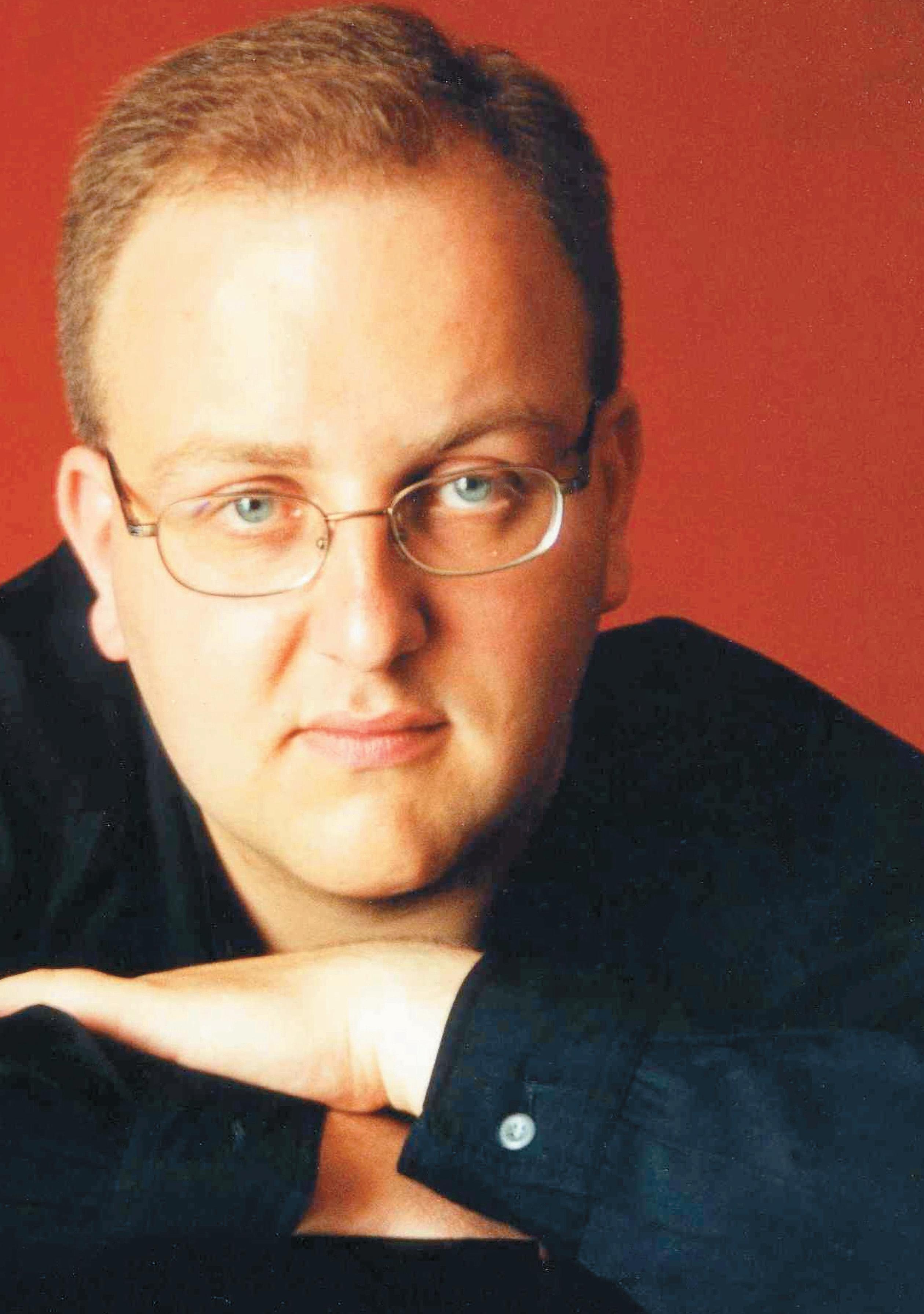
Age: 35
Education details:
Dover Grammar School for Boys 1982 – 1989
Royal Holloway and Bedford New College
(Organ Scholar) 1989 – 1992
University of London Institute of Education 1992 – 1993
Career details to date:
St Paul’s Knightsbridge 1992
St Edmundsbury Cathedral 1993 – 1998
Ely Cathedral 1999 – 2002
Newcastle Cathedral 2002
Cathedral Music 10
Scott Farrell
P3103 CM OCTOBER 06 27/10/06 14:00 Page 10
What is the most challenging aspect of your job in Newcastle? Recruitment of choristers and ‘keeping it on the rails.’
What pieces have you been inspired to take up recently and why?
Toccata, Adagio and Fugue on BACH by Arthur Wills as it is dedicated to me!
Have you been listening to recordings of them and, if so, is it just one interpretation or many, and which players?
Unfortunately I can’t as I will make the first recording of it!
What or whom made you take up the organ?
It was a recording of Arthur Wills at the organ of Ely Cathedral playing the Franck Final. Those reeds were quite unbelievable in their vulgarity and instantly appealing to an eleven year old!
Which organists do you admire the most?
Jeremy Filsell (who I was fortunate to study with for three years), Peter Hurford (he was my first musical hero!) and Paul Trepte (who somehow manages to play stunningly well without doing any practice… seemingly!).
What was the last CD you bought? Inspiration – Canterbury Cathedral Choir. Features some little known repertoire…well worth getting hold of a copy.
What was the last recording you were working on?
A disc with my cathedral choir of Masses by Langlais, Vierne and Duruflé on Regent and released in October.
What is your a) favourite organ to play?
Ely Cathedral… I loved this organ in both its Will’s and postWill’s forms (although it is now easier to handle), and those pedal reeds are out of this world!
b) favourite building?
Ely Cathedral, there is just nowhere else like it.
c) favourite anthem?
This of course changes all the time I’m rather into Stanford For lo,I raise up; there are some wonderful heart-rending moments in the midst of all the drama.
d) favourite set of canticles?
Really tough… Stanford in A or Howells St Paul’s
e) Your favourite psalm and accompanying chants?
Psalm 42 and 43 with chants by Lionel Pike, my wonderful mentor at Royal Holloway.
f) favourite organ piece?
Duruflé Prelude and Fugue on the name of Alain which strangely I don’t play; so many people play it so well, there is no need for a further interpretation.
g) favourite composer?
For organ music…Vierne, church music… Bairstow… ‘REAL’ music… Beethoven (today!).
What pieces are you including in an organ recital you are performing?
A fabulous arrangement of Mars by Arthur Wills.
Any forthcoming appearances of note?
Hull City Hall.
Have you played for an event or recital that stands out as a great moment?
I’m sure that I should say some service or other but, egotistically, giving the bank holiday recital at Liverpool Anglican… now there’s an organ!
How do you cope with nerves?
I’m not sure I do cope with them very well! I tend to talk to people right up until the last minute then I just sit down and play!
What are your hobbies?
Reading and going to the cinema when I get a chance and eating out. Many would say, spending money (whilst at Ely I was given a sign by the Treptes which stated ‘I’m living life to the credit limit’). I am also fascinated by architecture, especially of cathedrals.
Do you play any other instruments?
Well I attempt the piano… was a terrible violinist too!
What was the last book you read?
Smoke and Shadows by Tanya Huff (I have to confess to being rather an avid reader of horror!).
What are your favourite radio and television programmes?
I love Wake up to Wogan and The Bill.
What Newspapers and magazines do you read?
Other than the usual professional journals; I always read Empire (film reviews).
If you could have dinner with two people, one from the 21st century and the other from the past who would you include?
William Shatner (aside from the Star Trek connection he is having a new lease of life as being quite a funny guy) and Alan de Walsingham, who designed the Octagon and Lantern of Ely Cathedral after the collapse of the Norman central tower.
What should be the role of the FCM in the 21st century?
Supporting and promoting in a creative way all forms of cathedral music.
Discography
Glory Revealed
Newcastle Cathedral Choir directed by Scott Farrell. Regent Records REGCD188
The Complete New English Hymnal Volume Twenty
Newcastle Cathedral Choir directed by Scott Farrell. Priory Records PRCD 720
Les Grandes Messes de Paris
Newcastle Cathedral Choir directed by Scott Farrell. Regent Records REGCD246
The Gift – A Christmas present from Newcastle Cathedral. Newcastle Cathedral Choir and Newcastle Cathedral Consort of Voices directed by Scott Farrell. Regent Records REGCD253
Cathedral Music 11
P3103 CM OCTOBER 06 27/10/06 14:00 Page 11
Spreading theirWings
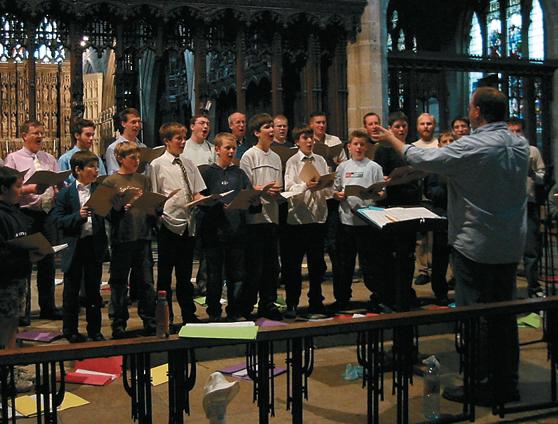
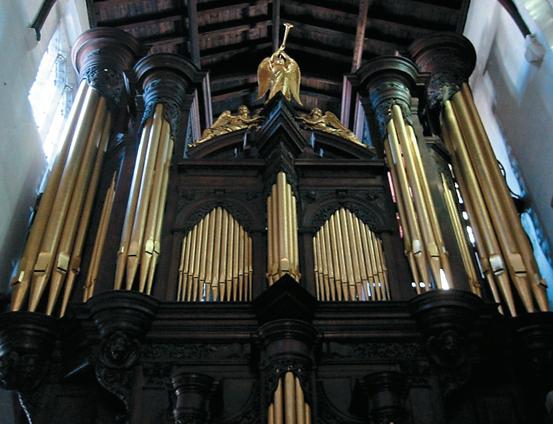
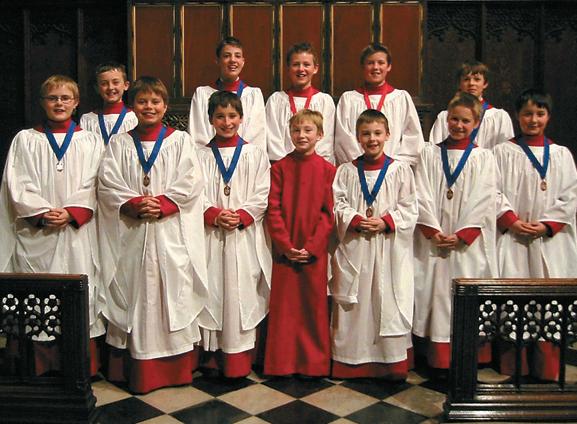
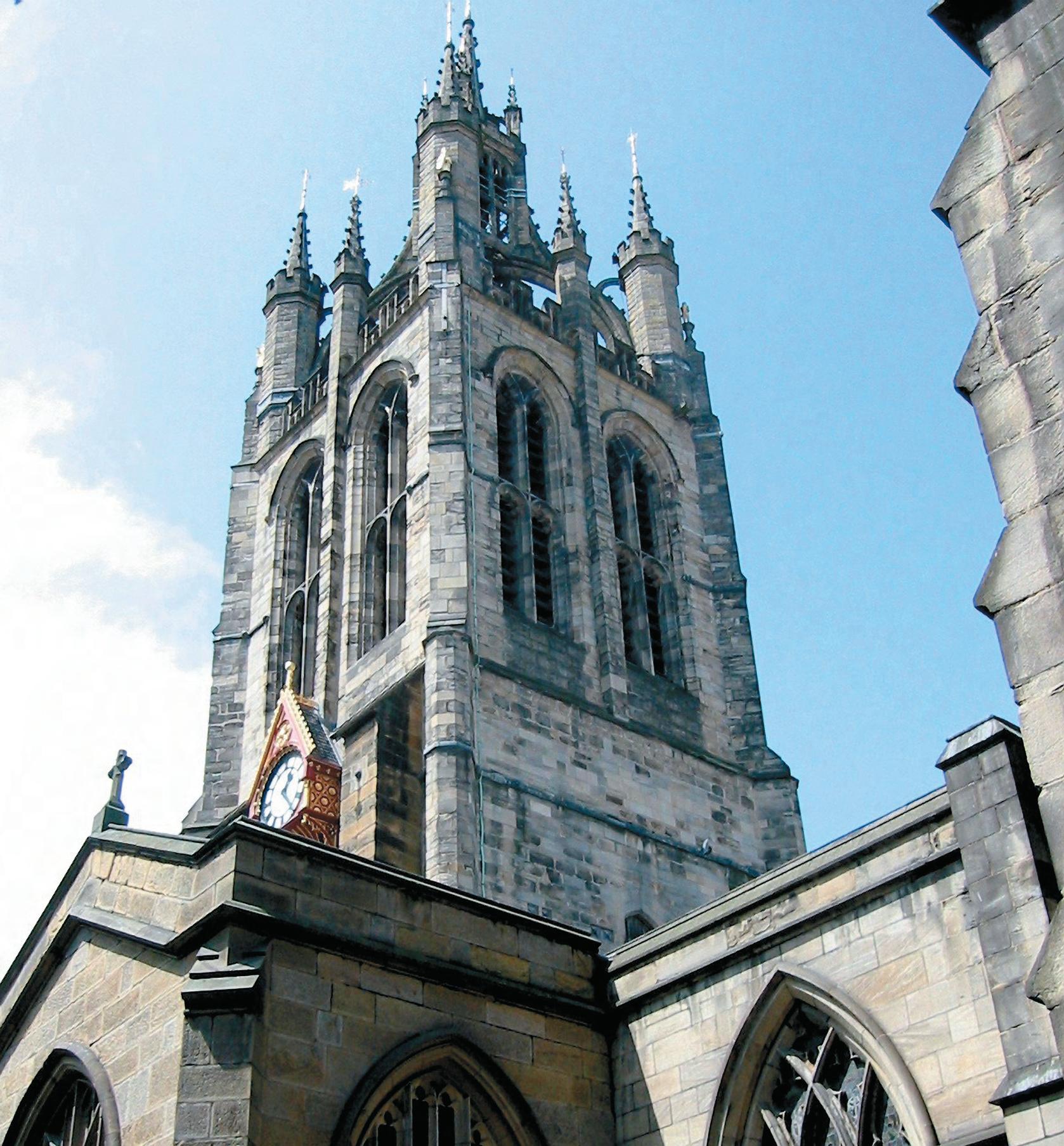
Cathedral Music 12
P3103 CM OCTOBER 06 27/10/06 14:00 Page 12
There has been a church on the site of the present cathedral for over 900 years, the original being built in 1091. This church was destroyed by fire in 1216 and the present building dates largely from the 14th century with the distinctive tower and lantern spire being built in 1448. The interior of the church was badly damaged by Scottish invaders during their brief occupation of the city in 1640, and, during a nine-week siege in 1644, Scottish invaders threatened to demolish the Lantern tower but were deterred when Scottish prisoners were actually placed in it. Originally the parish church of the town of Newcastle upon Tyne, St Nicholas became a cathedral in 1882 when the new diocese of Newcastle was created out of the northern part of the Diocese of Durham by Queen Victoria.
The distinctive lantern was the main navigation point for ships using the River Tyne and at a height of 197 feet is still a very visible landmark on the Newcastle skyline along with St James’s Park (perhaps considered by many as the ‘real’ cathedral of Newcastle!)
The Cathedral as it is now is very much the creation of the Victorians in terms of its fixtures and fittings. A rood screen and monastic quire with stalls for choir and canons was created and a rather fine reredos was added, thereby creating an ambulatory round the east end of the cathedral. The now obscured great east window is rather poignantly dedicated to the memory of Dr Thomas Ions, a former organist and was paid for by public subscription. I wonder how often that happens now!
The heart of the current organ dates from the new instrument built by T. C Lewis and Co. in 1881 for the soon to be upgraded Parish Church. Successive rebuilds have ensured that the Lewis roots are quite well hidden, although one can almost hear the ring of the wonderful Lewis at Southwark Cathedral in some of the ranks and the instrument certainly does not deserve the rather poor reputation that it currently enjoys! Ye that have ears to hear…!
So what of the choir? The first historical record of the choir dates from 1503, when Princess Margaret, daughter of Henry VII and engaged to marry James IV of Scotland, passed through Newcastle on her way north. As she crossed the bridge over the Tyne there were a number of children in surplices: ‘who sang melodious hymns, accompanying themselves with instruments of many sorts’. There is mention of a choir of boys and men in 1562, suggesting that St Nicholas’ regarded itself as being the major church in one of the kingdom’s most important cities, ranking fourth behind London, Bristol and York. Indeed there were moves during the sixteenth century to elevate St Nicholas’s status to a cathedral and the music sung during the services may well have reflected that attitude.
It is not known what happened to the choral foundation of
1562 but it is more than likely that it had been disbanded during the wave of Puritanism that had swept the country. A church school was opened in 1705 and it is possible that there may have been a choir of ‘Charity Children’ from the school; however in 1841 there is mention of a mixed choir. A surpliced choir of men and boys was reintroduced in 1880, presumably in readiness for elevation to cathedral status.
Until 1977 the cathedral maintained a choir school, but unfortunately this was forced to close as finances became increasingly tight during Russell Missin’s day. Russell maintained a schedule of daily services (Saturday being the ‘dumb day’) as long as possible but had to make the decision to reduce the workload down to what we currently operate Evensong with full choir on Tuesday, men’s voices on Thursday, full on Friday and then Eucharist and evensong on Sunday. Russell was succeeded by Timothy Hone in 1987 and then by myself in 2002.
When I arrived, the Music Department consisted of the cathedral choir of men and boys with a part-time assistant organist and a vacancy for an organ scholar. The back row is officially made up of six lay clerks and six choral scholars, although the distribution tends to vary. If repertoire demands it (such as a big piece of Tavener or Arvo Pärt) the number of men can be increased. Over the last four years we have been very fortunate in recruiting some very fine young singers who seem happy to give of their time for not much financial reward; one hopes that they feel rewarded in other ways!

The boys come from a variety of schools, both state and private and are a great bunch of characters! Rather like my friend and mentor, Paul Trepte (Organist of Ely), I look for the sparkle in the eye… that potential for naughtiness! Channelled in the right way this can make for a very exciting and expressive treble line. I have always been concerned by the number of choristers at Newcastle and I guess that I am not alone amongst my colleagues in this. At Ely there were 22, and at Bury St Edmunds (where I served my first cathedral appointment) regularly well over 20, but here I inherited 14 and the number has rarely deviated far from this. I have learned to be less concerned from a musical point of view at least. The current treble line of 13 happily matches up to 18 men without sounding brash or shouty; in fact a large number of men singing with a smallish group of boys seems to enhance the boys’ sound and most certainly ‘ups their game’. This is the complete opposite of some choirs, where the men are outnumbered by a factor of 2:1 and I know that they frequently feel out sung and indeed sung out! Having said all that, boys’ recruitment is one of the real danger areas for us at Newcastle, more of which anon.
The choir has a real family ethos and this is something that I have nurtured with regular ‘curry nights’ and the like for the men and outings for the boys, (including one for my birthday where I pay to take them out for lunch and to the cinema!). I

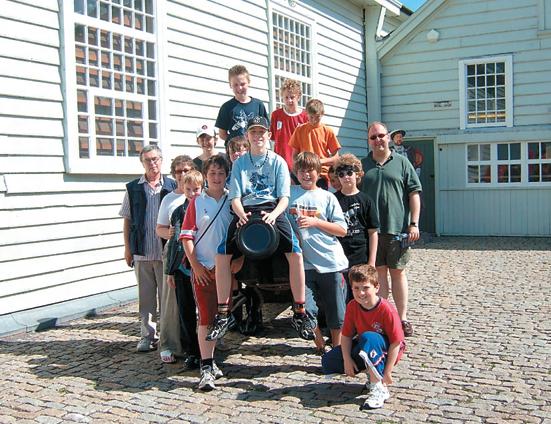
Cathedral Music 13
➤ P3103 CM OCTOBER 06 27/10/06 14:00 Page 13
Scott Farrell discusses his role at Newcastle running a parish church cathedral music department.
have certainly found that this sort of ‘bribery’ helps tremendously, giving one a number of brownie points which get used up rather quickly when you put an extra rehearsal into the schedule or add in a recording session or three in an already busy term!
Obviously upholding the tradition of daily worship is at the forefront of our musical agenda. I have never prepared for the ‘big occasion’ at the expense of the Opus dei. It is our determination and commitment to our daily services which makes us what we are, not the pomp and ceremony of carol services and thanksgivings. An important element of this is, of course, psalmody. This can be a struggle for a choir such as ours, only singing four evensongs per week. The Common Worship Lectionary is used, meaning that we would normally sing between 10 and 20 verses per service. Having much enjoyed playing the psalms for the day at Ely, I am sad that my choristers are not being exposed to that habit, however the pragmatist within realises that we just do not have enough rehearsal time really to do justice to the monthly round of psalmody, as we lack that inherent sense of rhythm that one gets from the daily chanting.
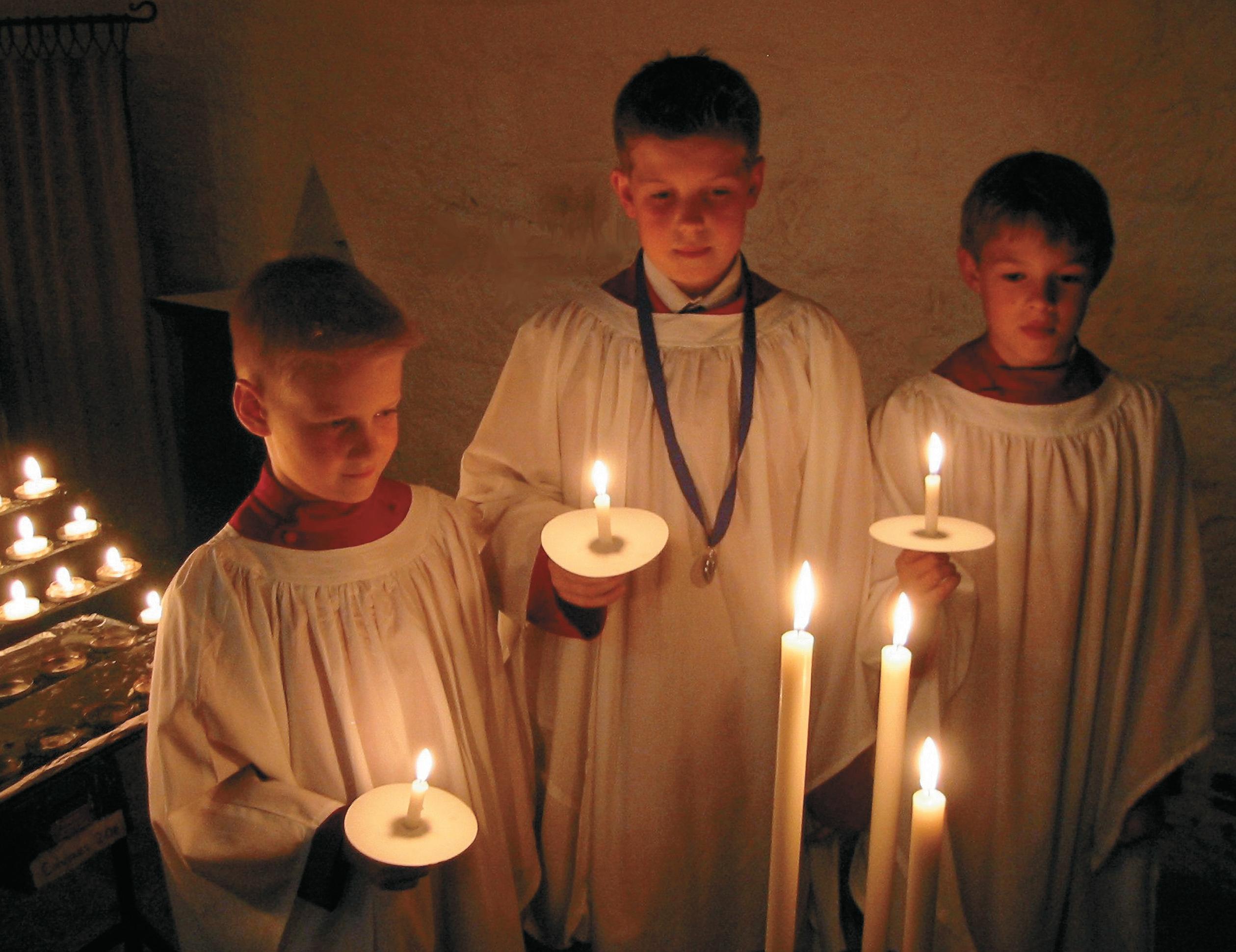
After six months in post I decided that it was time to make a statement to remind people that we existed and persuaded the Chapter to finance a CD recording. This we did in July 2003, recording repertoire from Advent through to Candlemas in the balmy northern nights! It was a risk which has been rewarded by good reviews and Newcastle Cathedral Choir is once more in the public consciousness. We have
followed this with a disc for Priory Records in their New English Hymnal series and we have just recorded a second disc with Regent Records, which is available now, this time of Vierne, Langlais and Duruflé.
We started to spread our wings following that first recording and have given concerts with Wayne Marshall and David Briggs, Carlo Curley and Julian Lloyd Webber. The real breakthrough came when two weeks before a performance of Bach’s St Matthew Passion, to be given by the Northern Sinfonia with Sir Roger Norrington, we were asked if we could provide the ripieno choir. This was a daunting decision to make because I was aware that if I said ‘no’, we might not be asked again, however if I said ‘yes’ and we were not up to scratch I could guarantee that we wouldn’t be asked again. Thankfully all went well, Sir Roger was very pleased and this was the beginning of a good relationship culminating in two concerts with the Northern Sinfonia at Christmas last year and a recent broadcast on Radio 3 of Britten’s St Nicolas which included four of our choristers and our Cathedral Consort. We are now looking at a joint education project with the Young Sinfonia in which members of the Sinfonia and I will coach and prepare the students for one or two Viennese Masses per year, performed within the liturgy.
Two other major events in the life of the Choir were an invitation to take part in the International Victoria Arts Festival on Gozo, the second of the Maltese Islands and a return to the airwaves to broadcast Choral Evensong after a 40-year silence. The trip to Malta in 2004 was only the second foreign tour that
Cathedral Music 14
P3103 CM OCTOBER 06 27/10/06 14:00 Page 14
‘ It is our determination and commitment to our daily services which makes us what we are, not the pomp and ceremony of carol services and thanksgivings. ’
the Choir had embarked on and it was much enjoyed and certainly gave us a taste for touring. We are planning to go to Norway next year and I know that a return to Malta would be a very popular decision. The broadcast was a very exciting occasion and I was thrilled by the overwhelming response from the listeners. The silence from the BBC however was less thrilling, but you will be pleased to hear that we are back ‘on air’ in December on St Nicholas’s Day.
All of these projects and excitements have been very powerful carrots for the boys and we find that once a boy has joined he is very keen to stay. Do remember that they do not have to come: there are no 50% school fee scholarships here. The boys in return for their work do get ‘pocket money’ and when they retire they receive a more sizable gift. That being said I am constantly amazed by the enormous commitment demonstrated by the choristers and their long-suffering families. It is the families who have to make the biggest sacrifice during a chorister’s career and it is increasingly the parents who say “no” to the commitment not the boys themselves. This is driving me to think of new ways that we can make choristership appealing. I have been offering music workshops to the local schools and have been met with much enthusiasm. We hope that these will prove to be more than just a good public relations exercise but at the end of the day it often comes down to money. Recently, I have put forward to Chapter a proposal for the introduction of chorister scholarships across a number of the independent schools from which we draw boys. This will need a serious injection of capital to bring to fruition even if the schools are excited by and committed to this project. I am certainly hopeful that this is a potential way of safeguarding our heritage here in Newcastle. We need to evolve and if safeguarding needs us to change our language to the one which speaks, (ie money) then that is what we must do. I am telling no secrets when I say that this cathedral is running at a loss of five figures, the same five figures as the music budget! Whilst there has been no suggestion of cutting the music provision we must all recognise that there are very serious problems ahead unless we can find help. We must do more than maintain what we have already; we need to widen access to our heritage.
As a step towards that I founded both the Lantern Singers and the Cathedral Consort in October 2003. The Lantern Singers is a group of boys and girls from the age of six upwards which meet on Saturday mornings, primarily having fun learning to sing and perform in public once a term. I have had a great time widening my repertoire to include such greats as the Blaydon Races and the Bad Baron. The Cathedral Consort is a slightly more ‘high-brow’ affair and like its near relation at Durham Cathedral, draws on students from the University mixed with (and this is where we differ) sixth form students and former choristers. The Consort does rely quite heavily on the cathedral lay clerks to provide the backbone of the alto, tenor and bass lines and it is obviously an extra commitment for them, coming in on a Monday twice a month. That being said, it has proved to be quite a success and we now sing on two Mondays per month (one full choir and one upper voices) and at least one full choir Sunday per term.
What of the future?
In my opinion, it is the smaller ‘parish’ cathedrals where the great tradition of cathedral music can flourish, evolve and be nurtured for the 21st century and beyond so long as the funds are there. Perhaps the reason for this is that they are not tied to an ancient pattern of services and traditions. We are,
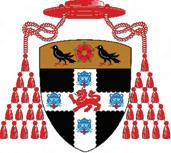
however, creating our own tradition and it is a very exciting prospect when cathedrals such as Newcastle, Sheffield, Blackburn, Chelmsford and others realise it. We will almost certainly not re-found a choir school or have the main choir sing Evensong every day, but what we do have are days when there is no musical provision that we could happily fill with other choirs or other music without harming what we already provide. Am I talking about the introduction of a girls’ choir? Maybe. There is a danger with the introduction of parallel girls’ choirs, when they have tried to offer to the girls that same wonderful experience, that the boys have had for hundreds of years. In the worst cases this marvellous tradition that we so covet is taken away from the boys, but it is not given to the girls either. The tradition gets watered down and becomes debased. I urge caution to any other foundations looking to start a girls’ choir; make sure that they have a specific role and that it is not just for the sake of political correctness. I can assure you that it will be well thought out here in Newcastle and will be an exciting addition to our music department, whilst not taking away from what we have – both/and, not either/or.
It is time for me to draw to a close and so return to the question: what of our future in Newcastle? We must underpin what we have and widen our horizons. I do feel that at the moment we are like the house whose foundations were built on sand and that everything is held together with bits of good-will!
I am hoping to build a music foundation here standing secure on firm and deep foundations. A foundation that will look after our Lantern Singers, our Consort and our girl choristers to be, our organ and other musical instruments, our music library, and above all, our prized choir of men and boys.
CHRIST CHURCH CATHEDRAL SCHOOL OXFORD
Cathedral Choristers

Choral Scholarships
worth up to £8000 in boarding fees
Does your son have a good voice and show an interest in music?
If so,why not come and visit us?
While your son sings to the Cathedral Organist, you can take a look round this historic school.
Cathedral Music 15
For further details please contact: Miss Diane Price, Admissions’ Secretary, on 01865 242561 email: registrar@cccs.org.uk; www.cccs.org.uk 3 Brewer Street, Oxford OX1 1QW P3103 CM OCTOBER 06 27/10/06 14:00 Page 15
for the Thank God
BBC’s longest running show!
Producer Stephen Shipley on 80 years of broadcasting Choral Evensong
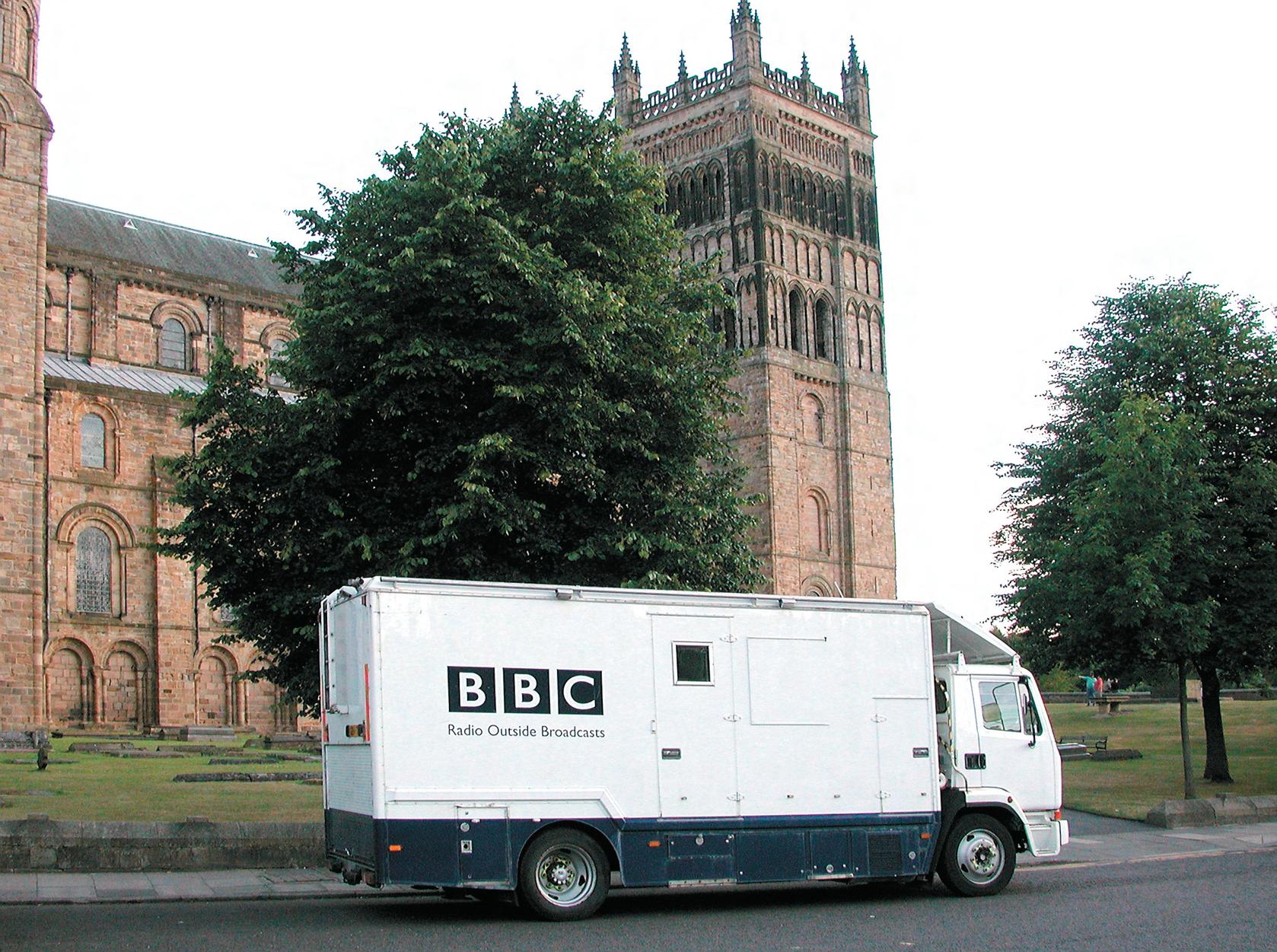
Five years ago, on November 21st 2001, the anniversary of the death of Henry Purcell (and also incidentally my birthday!), the Media page of the London Evening Standard had the headline: ‘I’m just a boy who can’t say ‘No’. Confessions of a Porn Addict. My sniff and tell hell.’ Apparently Toby Young’s new book was the second highest selling paperback then available on the Amazon website. It was a fairly raunchy article as you can imagine. But probably because of that, more people than usual read the Media page that day, which was rather fortunate because squeezed at the bottom of the page was another headline: ‘Thank God for the BBC’s longest running show’. And what is it? – not Desert
Island Discs, not The Archers, not The Week in Westminster, but Choral Evensong. ‘Nearly as old as God himself,’ said the article and ‘like God, it’s never taken a holiday or been off the air!’
Well, the article wasn’t quite correct, because actually the longest-running programme is The Week’s Good Cause, but Choral Evensong is the longest running outside broadcast in history. So, as only the fifth Series Producer of it (following Henry Walford Davies, George Thalben-Ball, Barry Rose and James Whitbourn), I think I can be allowed a little pride…
In many ways, it’s a minor miracle Choral Evensong has survived, especially in an age when budgets are being ever more closely monitored and the BBC’s brief is rightly to reflect
Cathedral Music 16
P3103 CM OCTOBER 06 27/10/06 14:00 Page 16
BBC van outside Durham Cathedral. All photos; Michael Barry ©
the ecumenical and multi-faith nature of Britain’s changing religious landscape. In October, it celebrated its 80th birthday, and like the very first transmission on Thursday 7th October 1926, it returned to Westminster Abbey. On that first occasion, it seems that only the back rows of the choir stalls were allowed to grace the airwaves: Byrd Fauxbourdons and Boyce O sing unto the Lord . For the anniversary broadcast (on 11th October), the repertoire includes music by William Smith, Purcell, Stanford and Walton and was sung by the full choir!
To fill in the rest of the history of the programme: after ten years regularly at Westminster Abbey, Choral Evensong broadcasts moved to St Paul’s as well, and then, in September 1938, the first relay came from York Minster during Sir Edward Bairstow’s time as Master of Music. For a time the three foundations alternated but the then Director of Religious Programmes, a certain Dr Frederick Iremonger (appointed by Lord Reith after an interview and bible reading audition!) became unhappy with the standard at York and told Sir Edward so. According to Francis Jackson’s biography of Bairstow, he was very offended but he had to take note, otherwise he would have lost the broadcasts. And in a sense, that’s still the case. Radio 3 gives us the money to broadcast from the cathedrals and college chapels of the land with the proviso that the musical standard within the worship is kept as high as possible. After all, we may be following a recorded concert from the Proms, say, by the Berlin Philharmonic conducted by Simon Rattle. If the music in the service sounds untidy, under rehearsed or over ambitious, Radio 3 will quite rightly want to know the reason. That’s why we have to keep an ear continually to what’s going on in the country’s choral establishments – and why we may need to steer clear of certain places until things improve…
Choral Evensong stayed on the National Programme (which became the Home Service and then Radio 4) until 1970 when it moved to Radio 3. There was a brief blip that year when for three months there was only one broadcast a month. Two thousand five hundred letters of complaint were received, and the weekly Wednesday afternoon slot was restored. The first stereo transmission was from Gloucester Cathedral in 1971, and there was a period of six years from 1981-1987 when we broadcast evensong twice a week. Quite frankly it didn’t really work because the second transmission was more often than not recorded, and it caused particularly cathedrals, with their daily sung services, a problem. You’d do a live broadcast on a sunny June afternoon and then the following day, record one, say, for the third week in Advent, asking for a very different repertoire and feel to a service which would be transmitted in the penitential season approaching Christmas. And the prayers of course could not be at all specific. More recently, there was a period when the Wednesday broadcast was repeated after midnight on a Thursday night. The audience was very small but we did get a surprising amount of appreciative correspondence. Nowadays the popularity of the Listen Again facility on the Radio 3 website means that the weekly broadcast can be heard at any time for seven days after transmission. Indeed, we’re informed that Choral Evensong vies with Andy Kershaw’s Sunday night programme for the most ‘hits’ each week, such is its popularity!
Since the 80th anniversary celebrations there's been another major schedule change announced by Radio 3. From next February, Choral Evensong will move from 4pm on Wednesday afternoon to Sunday afternoon at the same time. It's a prime weekend slot and there will be a much larger
audience. Certainly the response to the occasional Sunday afternoon broadcast in the past has been very positive, although it's inevitable that cathedrals will have to plan carefully for a live broadcast on a day when there will always be choral services in the morning.
Readers of this magazine certainly don’t need to be told what the special appeal of Choral Evensong is. To quote the website, there’s ‘an atmosphere of great stillness when people are uplifted by the sheer beauty of choral singing. The heritage of the English choral tradition is unique and it’s greatly valued. Throughout weekly broadcasts, hundreds of thousands can share this unparalleled experience’. In fact the number of listeners regularly approaches a quarter of a million.
But there are occasions when I get those words thrown back at me. The first time we broadcast a jazz service, Choral Vespers with the Big Buzzard Boogie Band from Clifton Cathedral in 2002, one listener e-mailed me quoting that description from the website and adding angrily, ‘So what in the name of the Father, Son and Holy Ghost were you up to broadcasting what you did today?’ What he’d heard was some of the music composed by Duke Ellington in the last years of his life, exploring the spiritual side of his extraordinary gifts. Between 1965 and 1973, Ellington wrote three massive works that combined elements of jazz, classical music, choral music, spirituals, gospel, blues and dance. He called them his ‘Sacred Concerts’ and they were performed in churches and cathedrals around the world. Ellington said it was the most important music he’d ever written, and for this broadcast, we’d incorporated a number of those pieces in a liturgical context. We had nine calls to the Duty Office at Broadcasting House London during that transmission. Five were strongly in favour. They thought the programme was ‘excellent, absolutely wonderful, thoroughly enjoyed it, wished to express huge gratitude.’ And the others said they ‘didn’t tune in to listen to a pop concert’; they were concerned the programme had lost its way; it wasn’t up to its usual standard. And one left ➤
Cathedral Music 17
P3103 CM OCTOBER 06 27/10/06 14:00 Page 17
‘...an atmosphere of great stillness when people are uplifted by the sheer beauty of choral singing. The heritage of the English choral tradition is unique and it’s greatly valued. Throughout weekly broadcasts, hundreds of thousands can share this unparalleled experience...’
a message hoping that the ghost of Lord Reith would haunt me for the rest of my days! The interesting thing though was that of the four clergy who contacted us, it was the younger ones who were uncomfortable. One retired archdeacon was full of praise and congratulations!
That broadcast was of course an exception, although we did relay in June of this year another jazz service, a ‘Blues Evensong’ from the University Church in Oxford, brilliantly conceived and composed by the renowned singer, Roderick Williams. That too attracted a certain amount of feedback including a rather abrupt message on the website which said starkly: ‘It was rubbish. I can’t believe I listened to that happy clappy nonsense; it was awful. It was neither jazz nor blues. It was crap!’ Thankfully, there was also a lot more affirming response but it proves what strong views people hold about our broadcasts and how readily they are prepared to express them, particularly on the Radio 3 message boards.
And sometimes those critical comments are directed towards the amount of first performances we include in Choral Evensong, despite the fact that the BBC’s policy is to promote and encourage new music whenever it can. Indeed, how important it is to demonstrate that the tradition of composing for the Church’s liturgies is still alive. That has been well established in the regular broadcasts from the annual Festival of Music within the Liturgy at Edington Priory, and in the last few years we’ve also visited the London Festival of Contemporary Church Music in St Pancras Church for some
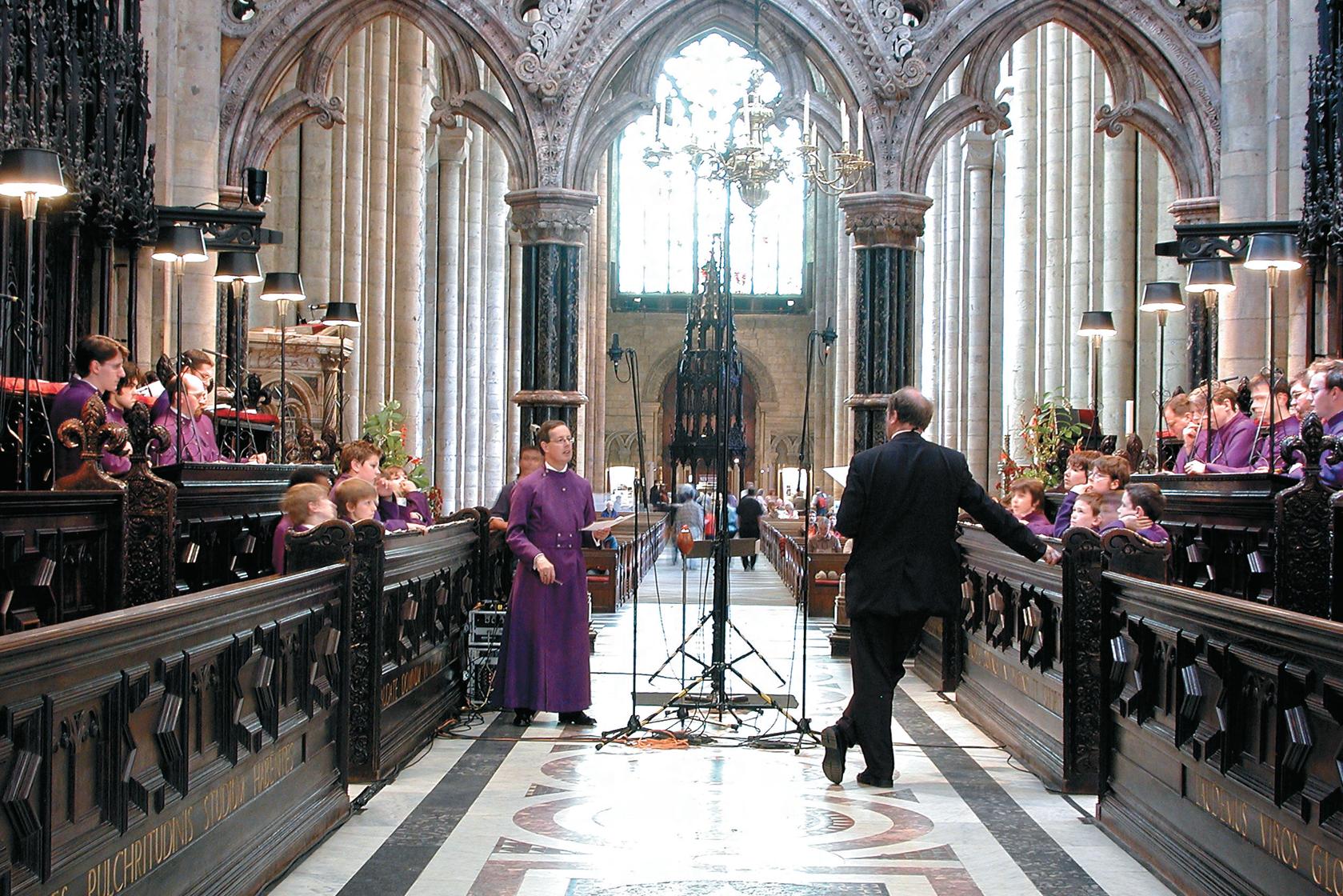
excellent services where the music was sung with real flair and precision and the worship was led with care and sensitivity. Yes, occasionally it has to be said that the complexity of some modern music does not enhance the worship, especially if the spoken parts of the liturgy have not been carefully prepared. But a challenging anthem, which may be criticised for just being a piece to show off the virtuosity of the choir, can be integrated into the worship so much more effectively if the prayers that follow it pick up both its mood and its text. Sadly, there are occasions when we go to venues for the Wednesday afternoon broadcasts only to find that the presiding clergy have not thought enough about the prayers or the way they introduce an anthem or an obscure bible reading. Although the speech may only be a small proportion of the whole transmission, it should still receive the same amount of attention as the music. When it does, there’s no doubt the sense of worship is deepened, – and that is so much appreciated by the listeners.
And this raises the age-old issue of the quality of the working relationship between church musicians and clergy. Far be it for me to comment extensively on this, but I do know from my years as a Cathedral Precentor how important it is for there to be a creative and equal partnership between those who plan worship. It alarms me when, arriving at a cathedral or college chapel, I’m told that there has been little if any consultation between those who are about to lead worship which will be shared by a quarter of a million people. There may even be
Cathedral Music 18
P3103 CM OCTOBER 06 27/10/06 14:00 Page 18
Durham Cathedral choir preparing for a broadcast
resentment expressed. Too often clergy can feel threatened by the amount of praise and appreciation heaped upon the musicians but they can also feel neglected when those musicians are not prepared to make time to work alongside them and discuss with them their ideas. Much tension and unease could be avoided if there was more communication not only in the preparation of a broadcast but also in the day-to-day life of a place of worship.
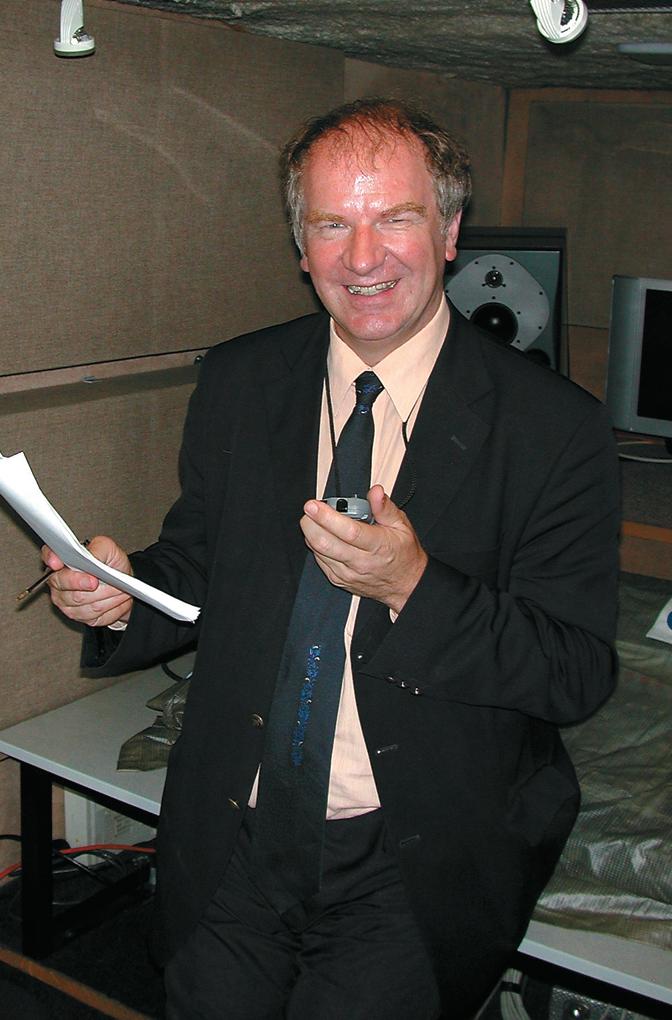
And it’s those places of worship with their different characters, musical styles and architectural ambience that give the weekly broadcast of Choral Evensong such variety. Over the years we’ve visited nearly eighty different cathedrals, abbeys, monasteries, churches and college chapels in this country. Indeed the large number means that it’s impossible to return to many places within twelve months, let alone broadcast both their boy and girl choristers in turn (although some cathedrals choose to field both together which can provoke some interesting comment!). We do though try to achieve both a geographical spread and a balance between cathedral and collegiate choirs. Every year we’ve also aimed to go abroad on one or two occasions – most recently to St George’s Cathedral, Cape Town where Archbishop Tutu gave a memorable homily in an Advent Evensong, and last Easter to St Thomas’s Church, Fifth Avenue, New York to sample the glories of the worship there under its inspiring new Director of Music, John Scott. A week before the 80th anniversary Westminster Abbey Evensong, we broadcast a service of Choral Vespers from Montserrat ➤
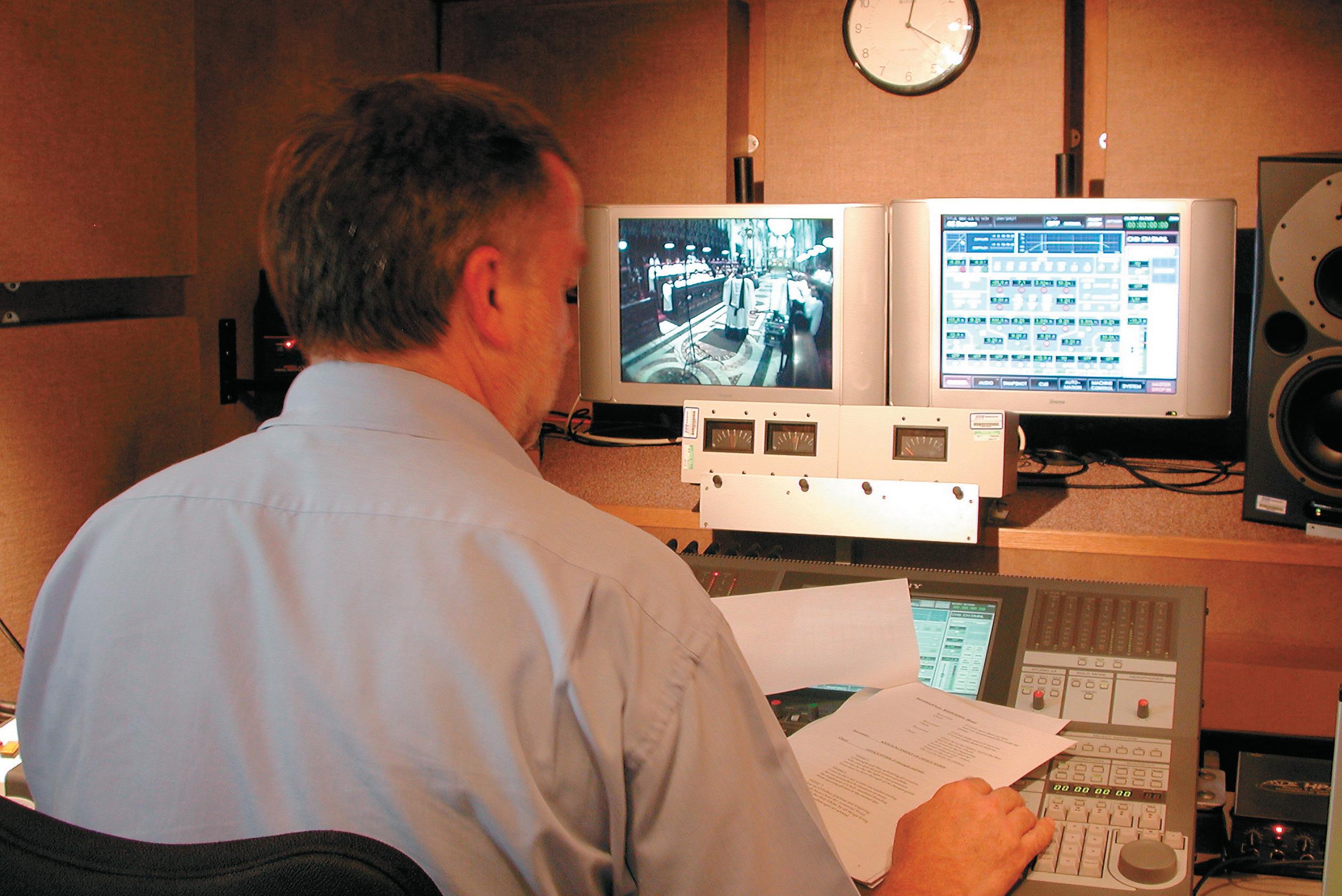
Cathedral Music 19
Phil Booth inside BBC van
P3103 CM OCTOBER 06 27/10/06 14:00 Page 19
Stephen Shipley
Abbey in Spain with the Pilgrim Consort, a group of young singers who first sang together on a pilgrimage to Santiago de Compostela. That was recorded for the Feast of St Francis of Assisi, and next year I hope to return to Russia for another Orthodox Vespers to follow those we’ve broadcast from the Kazan Cathedral in St Petersburg during the city’s 300th anniversary in 2003 and Moscow’s Danilov Monastery on the Feast of the Exaltation of the Precious and Life-Giving Cross in 2005. But I suppose the most momentous overseas Choral Evensong transmission was on 11th September 2002, exactly a year after the terrible events of 9/11, when we broadcast live from Trinity Church, Wall Street, the nearest church to Ground Zero – at 11 00am East Coast time.
Whatever the novelty of going abroad though – or broadcasting a service with full symphony orchestra, a consort of viols or jazz quartet (all of which have provoked both hearty praise and strong criticism) – the essence of Choral Evensong must always be its spiritual dimension. It must sit within the tradition of regular worship which goes on day by day in so many cathedrals, churches and chapels all over the country. And it should have the flexibility to live and breathe and change according to what’s happening in the world for which it prays.
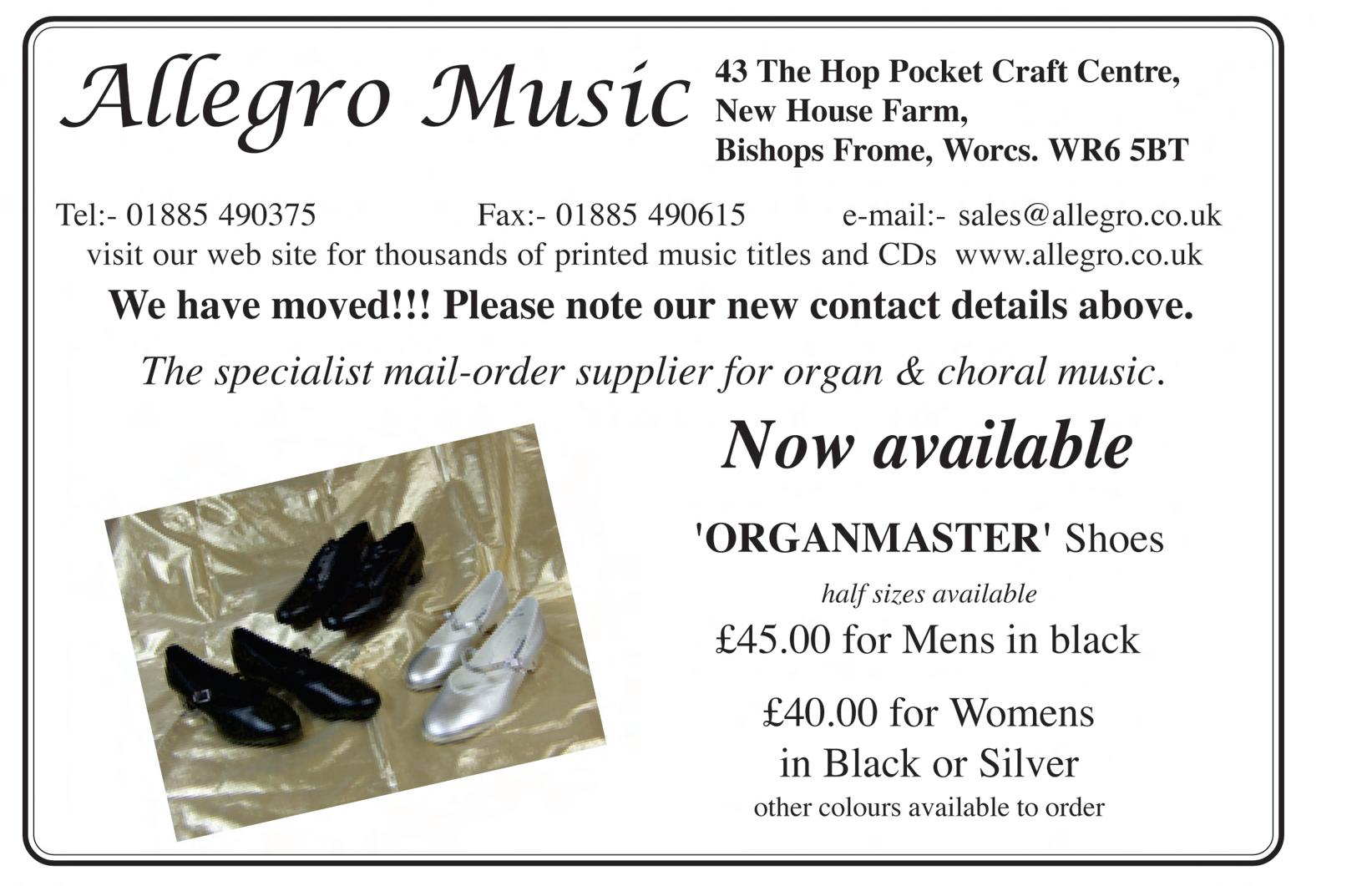
I quoted at the beginning from one article published on the occasion of the 75th anniversary. Here to finish with is a more serious comment from The Times:
‘I turned on Choral Evensong by accident one afternoon a year or so ago and I’ve been listening ever since. The music is beautiful, but the special quality of Evensong lies in other places too, in the paradoxical contrast between the sinewy
intricacy of 16th century language, and the simplicity of the thoughts it expresses: prayers for courage, for grace, for protection from the dark, for a good death. These are things to which our minds have particularly turned lately in the aftermath of recent terrible events, but they were there all the time in the psalms and collects of Evensong. For almost 500 years the same words have been repeated by people in times of trouble or of triumph. The presence of that cloud of unseen witnesses lends an intangible quality to Choral Evensong. You could call it calm or spirituality. You could call it holiness. But it’s very precious.’
Stephen Shipley
After reading music at Durham, where he was Organ Scholar at University College, Stephen joined the BBC producing music programmes for Radio 3 and documentaries for Radio 4. He then trained for ordination at Westcott House, Cambridge, serving a curacy at St Margaret’s Church, Ipswich, followed by five years as Precentor of Ely Cathedral. He now lives with his family in Buxton in the Peak District where he is licensed as a priest in the Diocese of Derby as well as producing and presenting programmes for BBC Religion and Ethics. He is particularly responsible for arranging a number of radio pilgrimages and looking after the Choral Evensong strand on Radio 3. His two sons have been choristers at Ely and Lichfield Cathedrals (one is now a choral scholar at Wells Cathedral) and for the last thirty years he has conducted the Tunstall Choir, which visits a different cathedral every summer for a week’s singing.
Cathedral Music 20
P3103 CM OCTOBER 06 27/10/06 14:00 Page 20
TRINITY COLLEGE’S CHORAL TRIO

Ali Hill and Sarah Mynott, both ex-choristers from Salisbury Cathedral Choir, and Katy Butler travelled back to Salisbury with David Hill, (Ali’s Dad and Director of Music at St John’s, Cambridge) and gave a marvellous performance of trios, duets and solos by Purcell, Handel, Mozart, Howells, Britten and Walton raising a significant amount of money to buy instruments for the Cathedral School’s music department. The three girls were all choral scholars at Trinity College. Sarah Mynott, whose brother Jack is currently a chorister at Salisbury, said “Ali, Katy and I had a fantastic time, from discussing the programme and rehearsing in various places (including my garden in Salisbury!), to performing in front of such a friendly and supportive audience at St. Martin’s. It was great not only to sing duets and trios with two such amazing musicians, but also to be accompanied by Ali’s father. For Ali and me it was extra special to be singing together in Salisbury having left the cathedral choir nine and seven years ago respectively. Seeing lots of current choristers sitting in the front two pews reminded us both of our happy time there. I still say that being a chorister was the best thing I ever did!”
News from Choirs and Places where they sing
CHRISTMAS SPARKLE AT HEREFORD CATHEDRAL
The 4,000-pipe Willis organ at Hereford Cathedral will be heard at one lunchtime concert for 2006 when Peter Dyke, the cathedral’s assistant organist, plays a selection of popular Christmas and Advent music on Saturday 2 December at 1.15 pm.

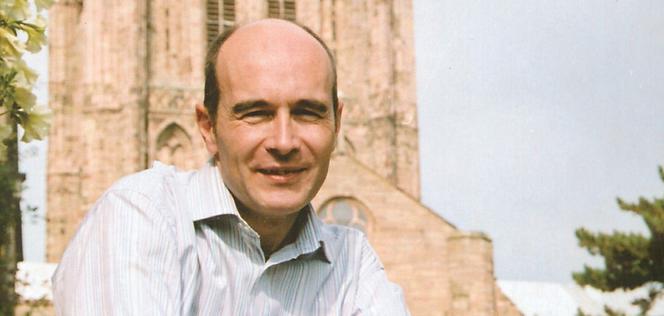
“There is some wonderful music written for that time of year,” said Peter. “I think this special concert of invigorating and exciting pieces will help people get into the Christmas spirit as well as blowing some of the dust out of the pipework!”
“I am still working on the programme but I know that there will be something for all tastes and ages. It is fair to say that there will be tunes everyone recognises.”
Admission to the 45-minute long concert is free, with a retiring collection for Hereford Cathedral Perpetual Trust, and visitors are invited to come and go as time allows. Unique access will also be given to Peter in the organ loft through the use of a large screen video projection at the front of the nave, a feature that has proved to be very popular with concertgoers of all ages.
“Who knows,” says Peter, “what additional surprises will await the audience. Last year tinsel adorned the console – who knows what Santa’s helpers might have done this year!”
Cathedral Music 21
NEWSBITE P3103 CM OCTOBER 06 27/10/06 14:00 Page 21
inQuire
Sweet Singing in the (DAB) Choir?
For many of our members the weekly Choral Evensong on Radio 3 is not just a lifeline but their only regular access to cathedral music. Apparently, some of those who invested in a DAB radio in the expectation of permanently enhanced reception are finding that all is not what they hoped for as the ‘bit rate’ at which Radio 3 is transmitted has been permanently reduced from 192 to 160kbps (whatever they are) despite earlier assurances that this would not happen. In the view of one of my correspondent the higher rate was itself only just acceptable, other European classical stations regularly transmitting at 256 kbps. The BBC says that thanks to new encoding equipment, the change has not affected broadcast sound quality. This is hotly contested by my correspondent who encounters distortion. However, as we go to press, news comes of signs of relenting on the part of the experts and my correspondents got back in touch to tell me so. This news is particularly welcome as it comes just as the BBC rightly celebrated 80 years of Choral Evensong with a commemorative broadcast from Westminster Abbey (11th October) and hard on the heels of Aled Jones and Barry Rose recalling the historyand hairy moments - of this long running programme. We complain when things go wrong, So it is good to thank the BBC for being a very real corporate Friend of Cathedral Music.
Early in September, and thus of historical interest by the time this reaches readers, was the AGM of the Church Music Society, at which they discussed plans for the proposed Watkins Shaw ‘Festschrift’. The Organists’ Benevolent League is

Richard Osmond rounds up the news from DRs
considering how best to mark the centenary of their founding in 1909 by Sir Frederick Bridge, then organist of Westminster Abbey. Ideas under consideration include a special service and the commissioning of a piece of music for organ.
Taking the Long View
Your columnist has recently had the privilege of reading in proof The English Chorister, by Alan Mould, the former writer of this column and one time headmaster of St John’s College Choir School. There should be a separate flyer about the special offer to members with this issue, so suffice it to say that it is well worth reading and should be out in time for Christmas. It was surprising to realise the wealth of detail going back to the sixth century which was there to be garnered and presented. We hope that a review will appear in a future issue of CATHEDRAL MUSIC. There are a number of fascinating insights to be gleaned and the text is lucid and enjoyable. The present cathedral music scene is admirably set in context and the efforts of those of the present generation to safeguard a precious – and precarious – heritage is sympathetically discussed.
Recent Appointments
As reported in the recent issue of Cathedral Voice Kerry Beaumont has been appointed to Coventry Cathedral. News also comes from across the Irish Sea of a new Assistant Director of Music for St Fin Barre’s Cathedral, Cork. James Taylor who studied at Huddersfield University, before postgraduate studies at McGill University, Montreal. He spent a year as Assistant Director of Music at Wellington Cathedral and has an
impressive record of recitals in New Zealand, Europe and the USA. Our Irish correspondent reports that Mr Taylor is fast becoming a major musical figure in Cork and Dublin. Watch this space!
Carlisle
The choir sang celebration Evensong on 2nd May in honour of the 80th birthday of former organist Andrew Sievewright. Earlier in the year, two very successful Open Afternoons gave over 60 children from 12 schools a taste of the choir. As result of this and other school visits there are now 12 members of the newly formed girls’ choir, and they have started regular rehearsals. They took part in the service to mark the ‘Be a Chorister’ day in June and the girl probationers proudly wore their new cassocks for the first time.
The boys and men will be visiting Hungary in October (at about the time that we go to press) and will sing vespers in a Basilica as well as taking part in a concert with a Hungarian choir conducted by former Carlisle lay clerk Richard Solyom. The tour lasts four days and has been financed by a number of fund-raising events, including a sponsored sing around the Archdeaconry of Carlisle on 24th June, singing in 10 different churches en route.
Guildford
Guildford is one of those fortunate places with its own choir newsletter. The highlight this year so far has been the Royal Maundy service in April. The home team were joined by the Chapel Royal choir for a taxing programme of music for this impressive annual ceremony. Music included Wash me Throughly Ley; O
Cathedral Music 22
inQuire inQuire inQuire inQuire inQuire inQuire P3103 CM OCTOBER 06 27/10/06 14:00 Page 22
Sacrum Convivium Tallis; Christus Factus est Bruckner; Ubi Caritas
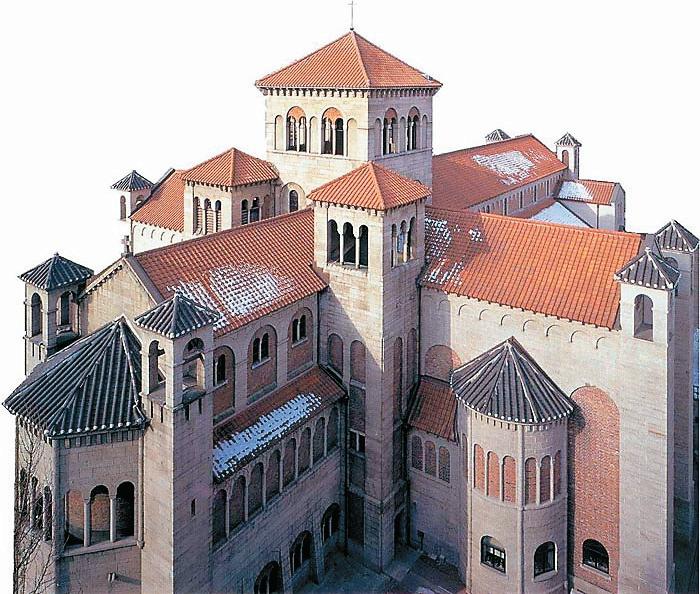
Duruflé and Lord, for thy Tender Mercy’s sake Farrant, some of these pieces having been composed for the Feast of Maundy Thursday. For good measure there was also Glorious and powerful God Gibbons and the almost inevitable Zadok, the Priest . It is clear from the racy accounts of the day that the choir enjoyed themselves and that the boys made new friends with the Chapel Royal choristers and (to judge by his journalistic style) that Stephen Farr has a good alternative career lined up as a satirical writer with Private Eye, if he’s not sent to the Tower first!
Canterbury
Dr David Flood is kind enough to describe the FCM celebration Gathering as one of the highlights of the year. It is good to know that he received so many appreciative comments from members. Another
highlight was the dedication by the Archbishop of a new altar for St Anselm’s Chapel, a gift from the Diocese and people of Aosta in Northern Italy (Anselm being a native of Aosta).
Day-to-day activities have included a film crew’s presence, to make a sequence of eight television programmes covering the life of the cathedral. Transmission begins around Christmas time and continues into 2007.
The choir has toured Belgium and the Netherlands performing to packed audiences and has made some significant recordings – Richard Rodney Bennett’s Missa Brevis, commissioned by the Friends of Canterbury Cathedral 15 years ago and recorded in the composer’s 70th year. Alan Ridout’s Litany was also included. The choir also gave the first performance of King , by former chorister Stephen Barlow. It is clear that the choir really enjoyed their involvement in this thrilling work and revelled in performing a work around
the life of Thomas à Becket in the space for which it was written.
Chichester
We understand that Chichester choir may be visiting Chartres at about the time that we go to press to join in the millennium celebrations for St Fulbert. They also look forward to a liturgical performance of Fauré’s Requiem on All Souls’ Day (2nd November) and Christmas concerts with the Band of the Royal Marines in the week of 4th December.
ANNOUNCEMENT
From next year inQuire will be moving to Cathedral Voice. To ensure your contribution features in inQuire, please continue to send your information to;
Richard Osmond
10 Hazel Grove, Badger Farm, Winchester, Hants, SO22 4PQ.
Tel/Fax: 01962 850818
HARRISON & HARRISON are FRIENDSOF CATHEDRAL MUSIC
SEOUL ANGLICAN CATHEDRAL, SOUTH KOREA
2 manuals 20 stops, tracker action
The cathedral was built in 1926, and the two-manual organ was installed in 1985. The nave, which was extended in 1994, is considerably longer than was envisaged when we built the organ. With only 20 stops, it is a relatively small instrument for a building of this size. During the summer we moved it from the north transept to the new west gallery, which gives it every advantage; and the pipes have been revoiced, on slightly higher wind pressure, for the new acoustic conditions.
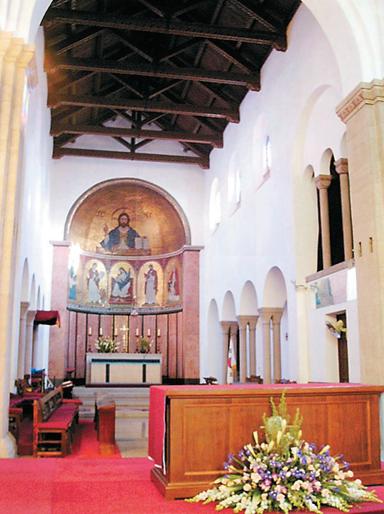
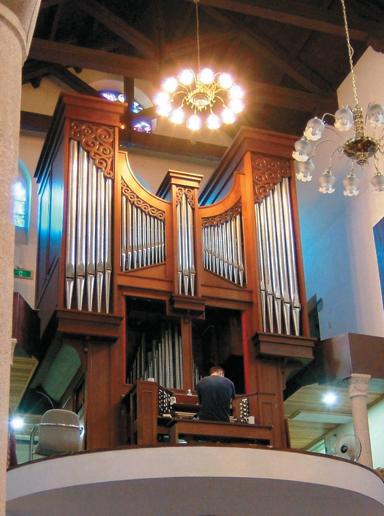
HARRISON & HARRISON
ST JOHN’S ROAD, MEADOWFIELD, DURHAM DH7 8YH
Telephone 0191 378 2222 Fax 0191 378 3388 e-mail h.h@btinternet.com www.harrison-organs.co.uk
Cathedral Music 23
The centre photo shows the organ in course of installation.
Other photos by courtesy of Seoul Cathedral.
inQuire in
P3103 CM OCTOBER 06 27/10/06 14:01 Page 23
Quire
Martyrdom. Bishop of London
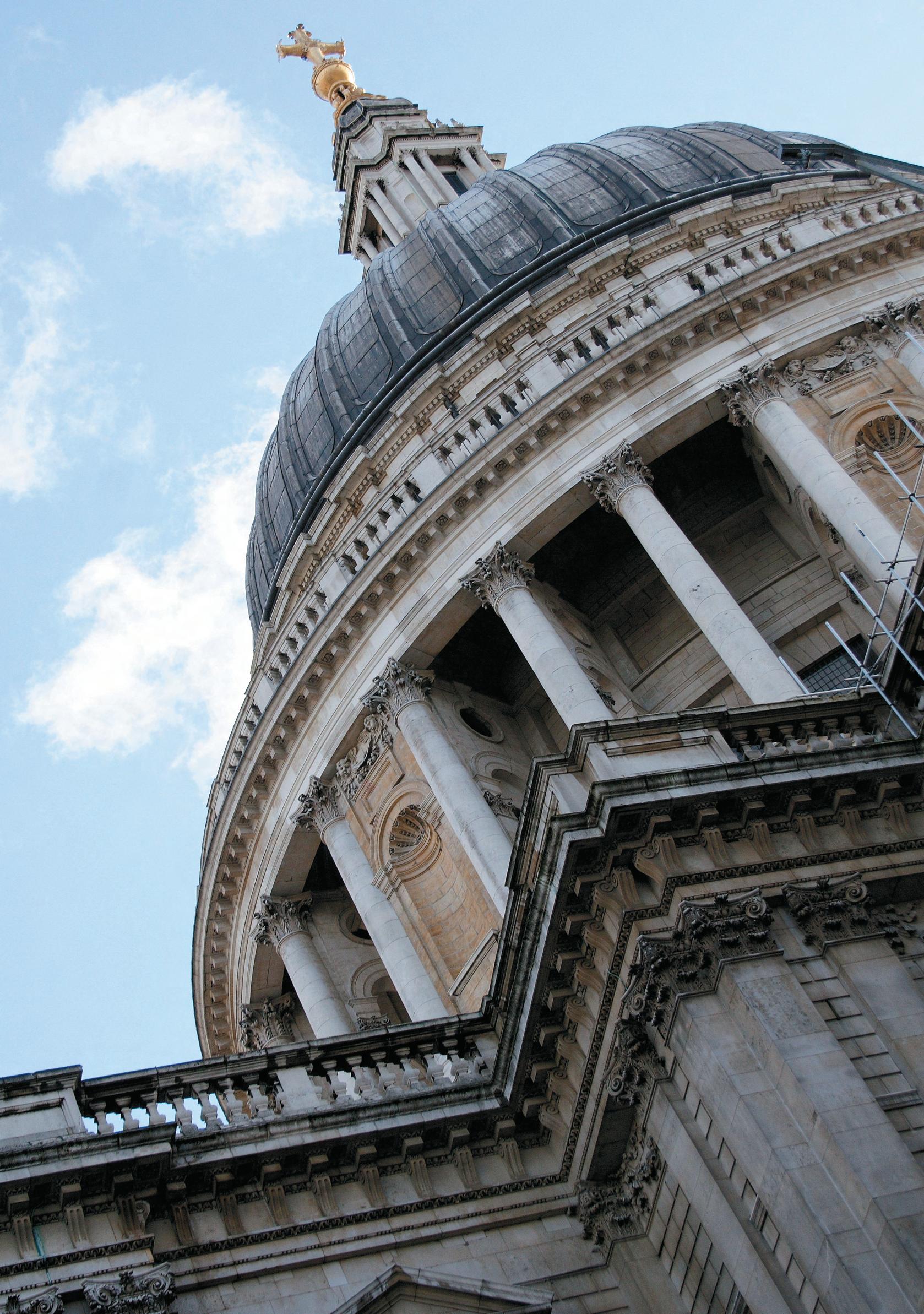
This talk was delivered by the Rt Revd Richard Chartres, Bishop of London, at the Prayer Book Society’s dinner at Jesus College, Cambridge on 21st January 2006.

Cathedral Music 24
Cranmer’s
St Paul’s Cathedral. Photo: Graham Hermon P3103 CM OCTOBER 06 27/10/06 14:01 Page 24
What a privilege it is to be permitted to dine in this hall in the College which Thomas Cranmer joined as a boy of 14 in 1503 and where he spent more than a quarter century. We are all in the debt of the Master and Fellows of Jesus for having responded so handsomely to the desire of The Trustees of the Prayer Book Society to begin the commemoration of the 450th anniversary of Cranmer’s Martyrdom here in the college which he loved.
I can see that for some people the notion of a dinner to celebrate a martyrdom might appear odd. Indeed I have been scrutinising the menu rather anxiously, mindful of Cranmer’s own regulations of the early 1540s. To combat gluttony, the Archbishop specified what the various ranks of the ecclesiastical hierarchy were permitted to eat at dinner. Bishops for example were not allowed to have more than two partridges or four blackbirds in a pie.
When Cranmer entered Jesus, the College was even younger than he was. The last two nuns of St Radegund had been evicted by the Bishop of Ely only in 1496. Cambridge was full of the noise of building works and new structures rising as a result of some spectacularly successful fund-raising.
It was also a period of intellectual excitement. In 1511 when Cranmer proceeded to his BA degree, Erasmus arrived for his first extended stay in Cambridge.
By 1515, Cranmer was a Fellow of Jesus but then he married Joan [Black or Brown] and had to resign. It was quite proper for him to marry of course as a layman but he had to quit the college and take the lowlier position of “common reader” at Buckingham College – better known to us as Magdalene.
Joan alas died in childbirth. If she had not, the history of England might have been very different. Cranmer was reelected and here at Jesus from 1518 to 1526 [when he graduated as Doctor of Divinity] he applied himself to the study of the scriptures.
The researches of Professor Diarmaid MacCulloch conjure up a picture of a relatively conservative academic living here in his thirties with little evidence of the great role he was to play after being selected as a junior member of an embassy in Spain in 1527. As a result of this embassy, he had his first fateful meeting with King Henry VIII. The
academic became a leading actor in the affairs which preoccupied the whole of Europe.
You will not want me on this occasion to rehearse the whole story, which has been brilliantly told by Professor MacCulloch in his magisterial and moving biography. As preparation for the commemoration this year it would be hard to improve on MacCulloch’s chapter entitled ‘Condemned’.
Cranmer was finally sent to the flames on March 21st 1556. One of the most fascinating pieces of evidence for his final days is contained in the itemised bills from the bailiffs of Oxford for the provision of meals for the former Archbishop and to pay for the faggots for his pyre. Queen Mary’s government refused to settle the bill in full and it remained unpaid until the matter was referred to Archbishop Parker in 1566 and he and a group of Elizabethan bishops finally settled the account.
The drama involved first the intervention of a Catholic sister to the Archbishop and Cranmer’s recantation. There was an apocalyptic atmosphere as the various parties sought to stage-manage the demise of the Archbishop for propaganda purposes. People were perturbed by the appearance of a comet over the skies of Southern England in early March.
But as Cranmer faced his last day on earth, March 21st, a mysterious message from another sister, a Protestant, arrived and Cranmer himself contrived to wreck the propaganda coup that had been planned. We survivors of the twentieth century and its show trials can perhaps understand the state of mind which induced the isolated Archbishop to recant but at the very end in the University Church where he was expected to make a public show of contrition, he renounced the documents he had been forced to sign under pressure and proclaimed his continuing belief in the Eucharistic doctrine contained in the Prayer Book.
There was commotion in the church and as Cranmer was dragged out of the pulpit and taken into the street on the way to be burned, people could hear the Spanish Friar who had been his interrogator, Juan de Villagarcia, in a dazed state repeating over and over again non fecisti (you didn’t do it). We all remember how he held out his right hand that had signed the recantations so that it would be burned first. After his death, in the ashes of the fire, his heart was discovered unburnt and rather feebly his detractors could only suggest that the condition of his heart was due to some form of heart disease.
This anniversary is a good opportunity to tell Cranmer’s story and the story of The Prayer Book to a new generation who are not always well served by the way history is taught in our schools. Inspecting my daughter’s GCSE history syllabus, I discovered a focus on Twiggy and the Vietnam War with a
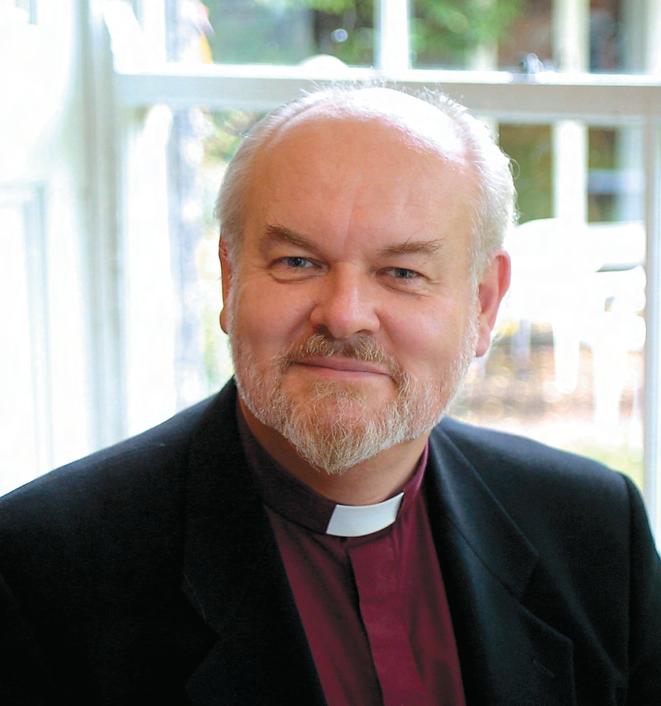
Cathedral Music 25 ➤
‘We all remember how he held out his right hand that had signed the recantations so that it would be burned first.’
P3103 CM OCTOBER 06 27/10/06 14:01 Page 25
Bishop of London
lurch into ancient times represented by the Wall Street crash. There has never been a generation better informed about ‘now’ with so little sense of how we came to be here. Every child in this country ought to have the opportunity of meeting Cranmer and considering his legacy.
Belatedly it may be that public authority has come to see that knowledge of our nation’s story, its title deeds and foundation documents is vital if we are to weather the turbulent times which are most assuredly coming upon us. I read that a project called Icons has been launched with government funding. One million pounds has been set aside for this two year exercise entitled Icons: A Portrait of England in which the public will be invited to nominate the things they cherish most about England.
Lack of clarity about our story and our common values could easily expose us to the kind of volatile and fearful panic which is so often the prelude to a descent into hasty and illiberal legislation.
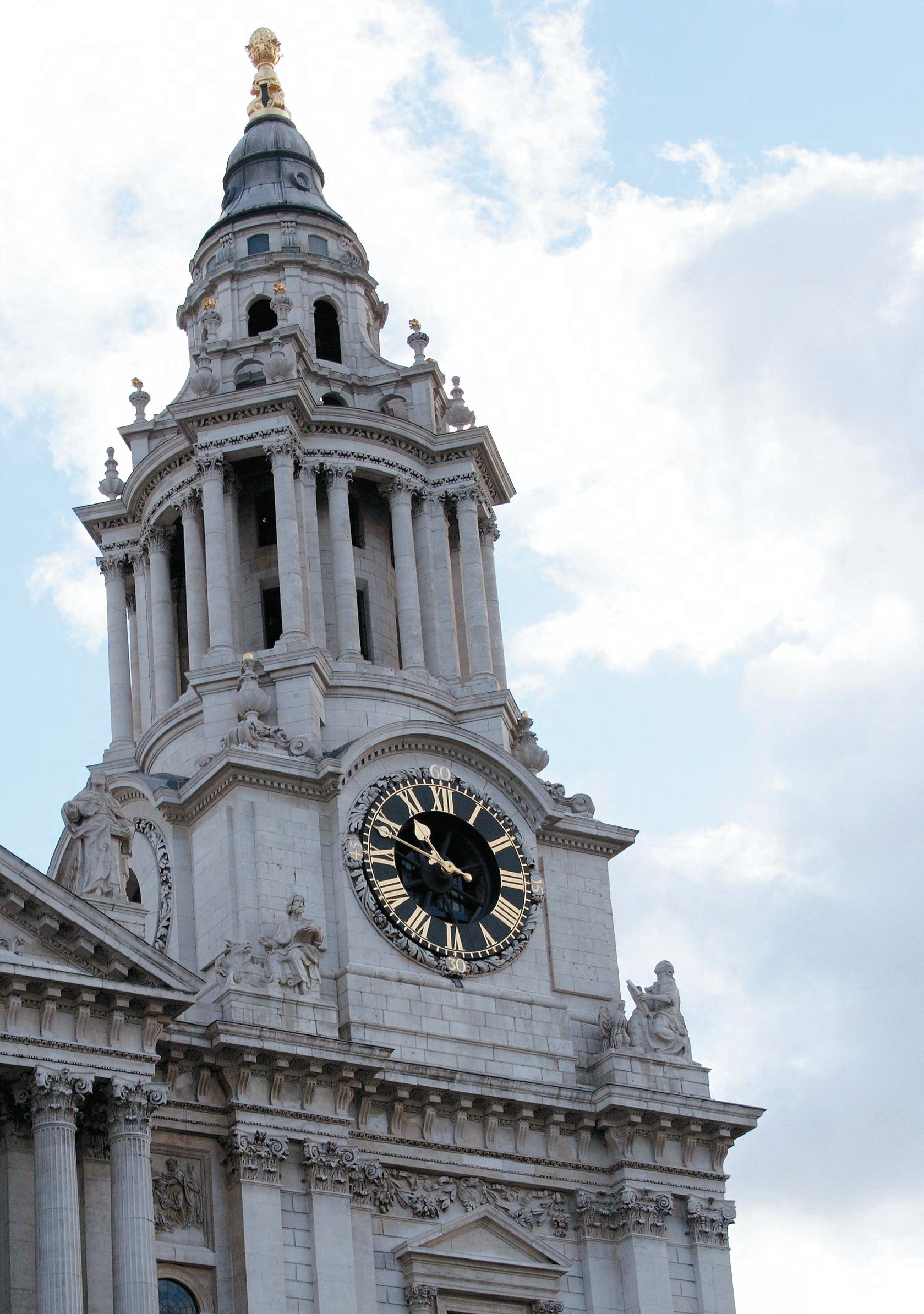
Members of the Church of England are not Cranmerians in the sense that Lutherans and Calvinists look to some master theologian for their inspiration. Much that we cherish, including the Choral Evensong in which we participated in the College Chapel, would not necessarily be approved by the Archbishop but we honour him and celebrate his contribution to the spiritual life of this and every nation which worships in English.
English was being shaped to encompass the highest themes in the sixteenth century. It could have developed in two ways. One way would have led to the pompous and convoluted style favoured by some humanist scholars with an excessive dependence on the classical languages.
The other path favoured by men like Sir John Cheke, Cranmer’s friend, would have seen a consistent preference for Anglo-Saxon derivations over Latin and Greek. He proposed for example that instead of resurrection we should speak of ‘gainrising’; crucified would have been ‘crossed’ and proselyte – ‘freshman’.
The Prayer Book played a key role in deciding what was good English. We can thank God that it was composed by Thomas Cranmer who had an ear for formal prose: for its sonorities and structure.
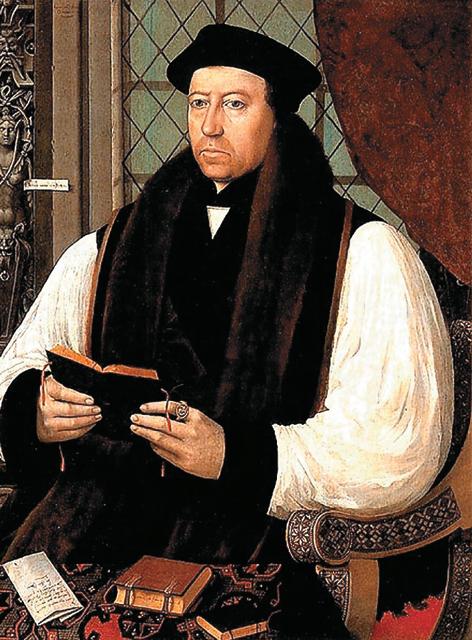
Cathedral Music 26
St Paul’s Cathedral. Photo: Graham Hermon
P3103 CM OCTOBER 06 27/10/06 14:01 Page 26
Thomas Cranmer
The influence of the prayer book system upon many generations, in its very language and the dispositions which it inculcates, has played a major role, instilling in English culture the virtues of restraint and balance.
But there is much more; just before Christmas, I went to take the sacrament to someone who was putting up a brave fight against cancer and who has since died. I used the Prayer Book Communion Service which he had not heard for many years. The power of the liturgy, its ‘in your face quality’ did not alienate him at such a grave moment but liberated him to face the deep and simple questions that somehow elude us in the coded speech of more modern times. The liturgy enabled him to ‘lift up his heart’ and left him more joyful and positive.
In particular it was such a relief not to lurch into the indicative mood of “the Lord is here” that proprietorial sentence which so jars on the ears of those who have a lively sense in prayer of the immensity in our midst.
The proper mood in worship is adorative and implorative. True a generation that has been outrageously flattered and has a very good opinion of itself until reminded by affliction of its own creaturely existence has found the liturgy of the Prayer Book insufficiently affirming. But that is precisely why it is vital that the BCP is not relegated to some liturgical museum because it preserves, in its DNA, things that are virtually unsayable now but which will with the revolution of the times come into focus once again.
The Prayer Book system embodies the ethos of our Church which is founded on scripture, interpreted by tradition which is not only articulated by the catholic creeds (which are perhaps more commonly used in the prayer book liturgies than in any other liturgical regime) but which is also expressed by the spirit-filled continuity of life in the church and the ways in which we have sought together to respond to the demands of successive generations.
Tradition for us is not ‘traditionalism’, the obstinate adherence to mores of the day before yesterday but the spirit-filled continuity of the church’s life and her response to contemporary challenge, always under the supreme judgment and inspiration of scripture.
Cranmer himself was a renovator rather than an innovator and composed our Prayer Book from scripture and the deposits laid down in the course of the history of the Church. He understood that God said: “Behold I make all things new” and that He did not say: “Behold I make all new things”.
The Prayer Book offers a simple and moderate system for a whole life from baptism to last rites and seeks in its rubrics and ceremonies to embrace the whole person and not merely the cerebellum.
Now is all this at an end? Is the Prayer Book a dead book, a museum piece? I think we certainly need to tell the story with more confidence as a system which transforms lives and translates doctrines and ethics into living ethos. We are certainly counter-cultural at present as we are taught to desire instant satisfaction of our most superficial cravings and to be entertained enough to keep us from the deathly boredom of our own company. The formation offered by the Prayer Book is lifelong and demands and expects a great deal from those who use it. While we live we must help new generations who grow sick of perpetual carnival with no ensuing Lent to appreciate that there is in the Prayer Book system a sure, though not flashy, way to Transfiguration and to Heaven beyond
MUSIC at LEEDS PARISH CHURCH
A very warm welcome awaits you! [for service times see the Website, call 0113 267 7571 or email lpc@simonlindley.org.uk]
Boy Choristers,Choral Scholars and Lay Clerks at all services and events except 3 & 10 March,6 April
SUNDAY 3 DECEMBER – 6.30 PM
Traditional Advent Carol Service
*WEDNESDAY 6 DECEMBER – 7.00 PM
Carols for a Choral Future Gala Christmas Concert in aid of the Choral Foundation Appeal Leeds Parish Church Combined Choirs Yorkshire Imperial Band David Houlder,organ
SUNDAY 17 DECEMBER – 3.00 PM
Festival of Nine Lessons & Carols
SUNDAY 14 JANUARY – 6.30 PM
Traditional Epiphany Carol Service
SATURDAY 3 MARCH – 3.00 PM
The Elgar Chorale of Worcester Dr Donald Hunt,director
SATURDAY 10 MARCH – 4.00 PM
Yorkshire Cathedrals’Girls’Choirs’Festival Choral Evensong David Houlder,director
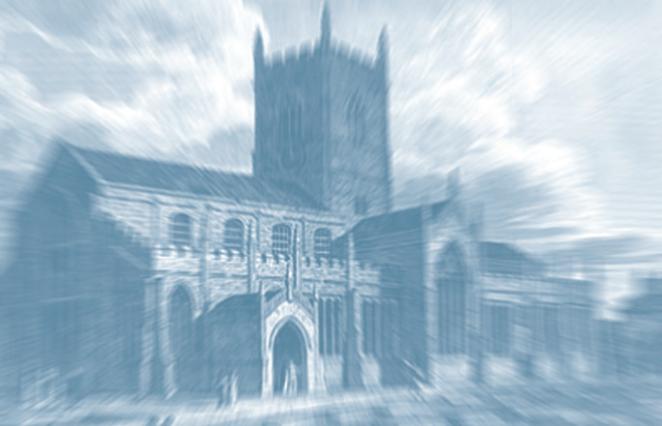
MONDAY 2 APRIL – 1.15 PM at Leeds Town Hall Stainer The Crucifixion

*GOOD FRIDAY 6 APRIL – 7.00 PM

Elgar The Dream of Gerontius St Peter’s Singers Yorkshire Chamber Players
*Booking from 0113 224 3801 Free admission on all other occasions
www.leedsparishchurch.org.uk
Cathedral Music 27
P3103 CM OCTOBER 06 27/10/06 14:01 Page 27
60Seconds in Music Profile
Age: 26
Education details:
Durham Cathedral Chorister, Oakham School and King’s College Cambridge.
Career details to date:
Assistant Organist, Perth Cathedral, Western Australia, 1998-1999
Organ Scholar, Durham Cathedral, 1999 – 2000
Organ Scholar, King’s College Cambridge, 2000 – 2003
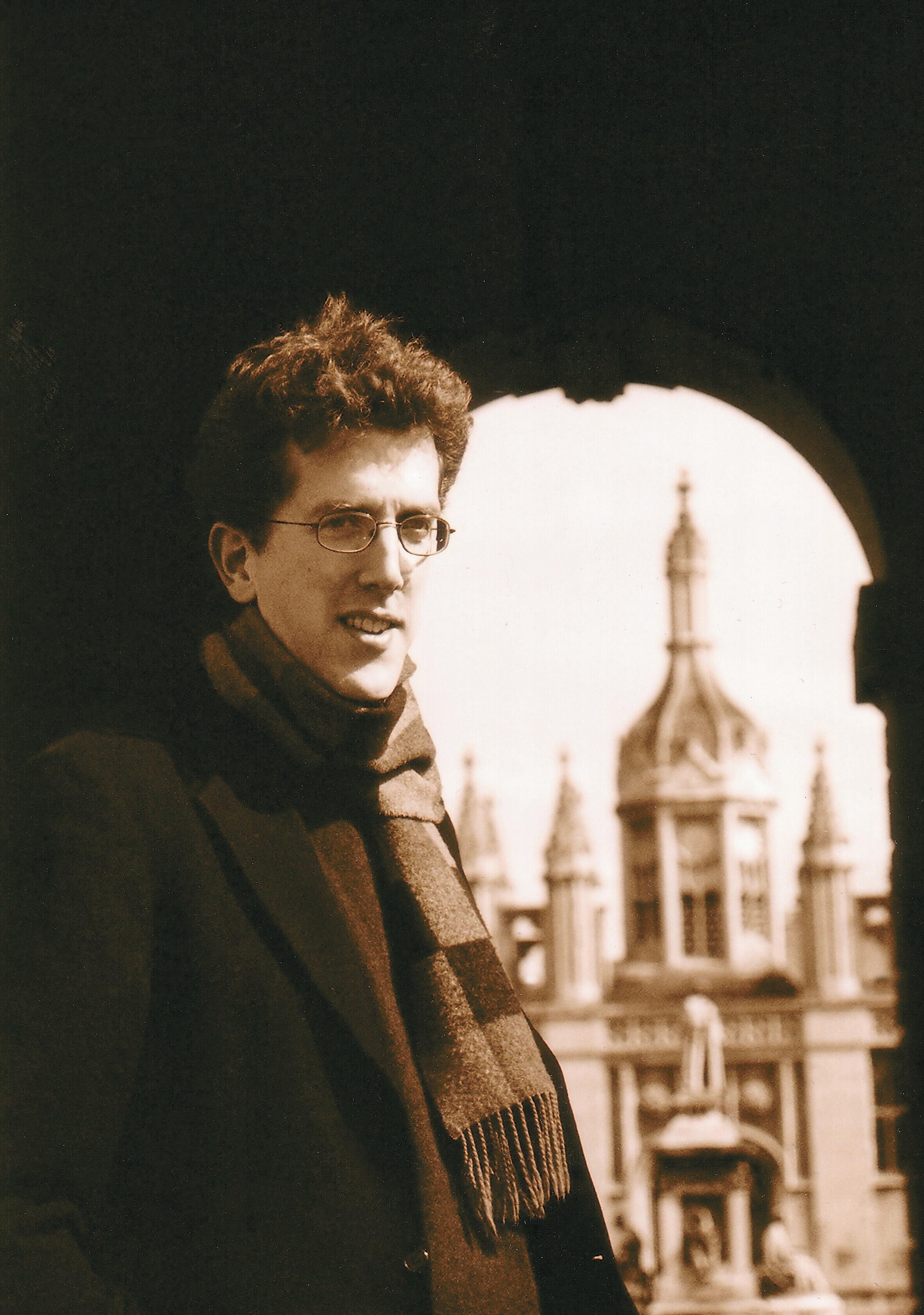
Director of Chapel Music, Jesus College, Cambridge, 2004
What does your role as Director of Chapel Music at Jesus College, Cambridge, entail?
My main duties involve the recruitment and training of the choristers, choral and organ scholars who make up the Chapel and Mixed Choirs. I teach harmony and counterpoint in the music faculty, and am also involved in various fundraising initiatives for the College.
Cathedral Music 28
Daniel Hyde
P3103 CM OCTOBER 06 27/10/06 14:01 Page 28
Photo: Salima Virji
What pieces have you been inspired to take up recently and why?
I am currently filling some of the gaps in my repertoire. Everyone seems to be going crazy about Mendelssohn this year, so I’ve taken the opportunity to finish learning the Six Sonatas I’m about to start working on the complete Buxtehude for a series of recitals in 2007. I don’t get much time to play these days, so when I do, there has to be a clear project in my sights.
Have you been listening to recordings of them and if so is it just one interpretation or many and which players?
As a rule, I force myself to learn the music before delving into any recordings. There’s got to be some original thought in there somewhere, and I like to discover that before listening to other people’s ideas.
What or whom made you take up the organ?
As a chorister, I was always fascinated by the kaleidoscopic range of sounds and sheer power of the instrument. When my voice broke nearly a year before I was due to leave the choir, my move to the organ loft was quite a natural progression.
Which organists do you admire the most?
Where do I start? Well, anyone and everyone who plays musically, and with a wealth of experience outside the organ loft. James Lancelot, Stephen Cleobury, Dame Gillian Weir and Nicolas Kynaston have all been extremely influential in my development.
What was the last CD you bought?
Sir Simon Rattle’s recording of the Sibelius Symphonies with the Berlin Philharmonic.
What was the last recording you were working on?
A disc of Christmas organ music in King’s College Chapel.
What is your a) favourite organ to play?
I had the opportunity to play in St Bavo in Haarlem a few years ago. I could have stayed all night!
b) favourite building? Durham Cathedral.
c) favourite anthem
There are so many to choose from. Anything by Byrd, Elgar or Tallis.
d) favourite set of canticles
Weelkes for Trebles would have to rate quite highly, along with Howells’ Gloucester.
e) favourite psalm and accompanying chants? Psalm 132, chants in D flat by J. F. Bridge.
f) favourite organ piece
The Six Sonatas of J S Bach
g) favourite composer Brahms
What pieces are you including in an organ recital you are performing? I’ve been through a transcriptions phase recently, and have enjoyed working on Wagner’s Mastersingers Overture and Preludeand Liebestod from Tristan
Any forthcoming appearances of note?
I recently made my Proms debut on the organ at the Albert Hall. The conducting seems to be taking off at the moment, and I’m looking forward to conducting a Messiah with the Britten Sinfonia next month, and a B minor Mass in King’s College Chapel in January. I’m in the process of fixing up a recital trip to the USA (visa permitting).
Have you played for an event or recital that stands out as a great moment?
My two stabs at the Festival of Nine Lessons and Carols stick in my memory. I also remember the fear and eventual satisfaction of playing organ solos to a packed Sydney Opera House.
Has any particular recording inspired you?
I remember the first time I heard St John’s College Choir under George Guest when I was given his recording of the Fauré and Duruflé Requiems. There’s something about the sound that’s impossible to put into words.
How do you cope with nerves, especially as a former King’s organ scholar who’s experienced the famous Carol Service?
I’ve come to realise that nerves can be turned to one’s advantage when performing. Amongst the numerous things I learnt at King’s, I soon realised that thorough preparation and meticulous planning are both invaluable for boosting one’s confidence and controlling nerves.
What are your hobbies?
Reading, opera, food and wine. Whilst I would probably not venture out to a game, I was recently hooked on the World Cup matches shown on TV.
Do you play any other instruments?
I love playing the piano in the privacy of my own home, and have been known to play the viola.
What was the last book you read? Saturday by Ian McEwan.
What are your favourite radio and television programmes?
I’ve recently discovered both The West Wing and 24. Radio 4 tends to be on most of the time in our house, and you can’t beat the Today programme for a good argument first thing in the morning.
What Newspapers and magazines do you read?
The Spectator, International Record Review, The Guardian or The Daily Telegraph. I have been known to sneak a look at my wife’s copies of Grazia and OK
If you could have dinner with two people, one from the 21st century and the other from the past, who would you include?
I’d like to find out what David Beckham is about, and I’d be fascinated to meet Churchill.
What should be the role of the FCM in the 21st century?
I would like to see the FCM playing a key role in the numerous development campaigns currently being launched by cathedrals up and down the country. Fundraising is crucial to the future preservation of this unique musical heritage, and anyone who has had the good fortune to appreciate cathedral musichas an obligation to get out there and do something for its preservation and development.
Cathedral Music 29
P3103 CM OCTOBER 06 27/10/06 14:01 Page 29
The Influence of a19 th Century CHOIR SCHOOL
by David Bland
Asignificant point in the development of the nineteenth century choral tradition was reached on 29th September 1856 with the founding of St Michael’s College, Tenbury, two miles south of the small Worcestershire market town of Tenbury Wells. This autumn the College celebrated its 150th Anniversary and although its original purpose as a ‘model’ choir school had ended with its closure due to economic reasons in July 1985, its very influential work still continues today, though in a different form to what its Founder intended.
Born in 1825 into a titled and diplomatic family, Frederick Ouseley was privately educated as a Victorian gentleman and succeeded to the baronetcy on his father’s death in 1844. At that time, Ouseley was aged nineteen and a student at Oxford University. After completing his degree in 1846, he spent the next three years preparing for ordination, while at the same time studying for his Bachelor of Music degree, something that was thought unbecoming for a gentleman of his rank and independent means. Ouseley was ordained as deacon in 1849 to a title at St Paul’s, Knightsbridge, transferring to the new daughter church of St Barnabas, Pimlico after its dedication in June 1850. This church soon became a centre for the unrest caused by the Popish Riots of 1850-51. Ouseley was a person of nervous disposition, and his mind being in a state of turmoil, he resigned his curacy and set off on a tour of Europe with friends. Prior to his departure and concerned about the
welfare of the boy choristers at St Barnabas, he arranged for them to continue their education at Lovehill House, a country house at Langley Marish near Slough, creating a small chapel and teaching area in rooms above the stables, so that the choristers could continue their singing of daily choral services. During his tour of Europe, which lasted almost a year, Ouseley listened to and played over one hundred organs, making detailed notes of organ specifications. He was also captivated by the wonderful sounds of some of the best boys’ choirs in Europe.
On his return to England, he was clear in his own mind as to what direction his future career should take. His vision was to establish a ‘model’ choir school for the maintenance of the choral service. Between 1853 and 1855, he considered various sites for his proposed college, before settling on a site southwest of Tenbury Wells in an area known as the Oldwood. It may have been more than coincidental that his friend and former tutor, Wayland Joyce, had become Rector of the nearby parish of Burford. As the plans developed for his college, Ouseley was also studying for his Doctor of Music degree, which was awarded in 1854. Early in 1855, he succeeded to the post of Professor of Music at Oxford University, after the death of Sir Henry Bishop and a month later, he was ordained as Priest in Hereford Cathedral and installed as Precentor of the Cathedral two days later.
With the dedication of his college to St Michael and All

Cathedral Music 30
P3103 CM OCTOBER 06 27/10/06 14:01 Page 30
Photo supplied by Michael Hart
Angels on 29th September 1856, Ouseley’s vision and his vocation for the rest of his life had become a reality. At the Opening Service, most of his choristers had arrived from Langley Marish to form the basis for his St Michael’s Choir. Dr George Elvey, Organist of St George’s Chapel, Windsor played the organ and a contingent of choristers from the Chapel Royal supplemented the choir. Among them was the young Arthur Sullivan, who sang a solo. The celebrations over, Ouseley was able to begin to put his intentions and ideals into practice in the organisation of his college, the main one being that the services in church should take precedence over everything else, both from a musical and devotional perspective. He was insistent on everything being done in a proper manner and to the highest standards. This not only involved the music, but also the manner of those taking the services and the attitude and deportment of those taking part. For a young chorister at St Michael’s, this involved very strict standards of punctuality, discipline and routine in everything connected with worship and gave them a very good training for later life. As Joyce, Ouseley’s biographer commented: ‘It was not a cut and dried musical performance for the congregation to listen to, but was an actual offering of prayer and praise to God’.
Alongside the spiritual and musical aims of Ouseley’s college was the provision of good accommodation and a high standard of education for his choristers. It is very evident that these high standards which he introduced in the mid-nineteenth century have become an essential part of the present-day music of our great cathedrals and collegiate chapels. As one would expect, whenever a boy or girl becomes a chorister today, even in the lowliest parish church, high standards of punctuality, effort and commitment are required in order to produce music that will inspire those who desire to worship and strengthen their
faith in God. Over the years, many were inspired by Ouseley’s gift of the college and church to donate gifts themselves, and he never ceased to be touched by their generosity.
Within eighteen months, Ouseley had gone to London and persuaded a 17-year-old ex-chorister and trainee organist from St Paul’s Cathedral to join him as organist at Tenbury. He was none other than the young John Stainer, later to become organist of Magdalen College, Oxford and St Paul’s Cathedral, and who succeeded Ouseley as Professor of Music at Oxford after his death. Perhaps it is appropriate at this point to pay tribute to the work of Maria Hackett in her influential efforts to improve the education and living conditions of cathedral and college choristers throughout the country from 1811 until her death in 1874. Her efforts both pre-dated and greatly supplemented Ouseley’s work and one important example of her work was that she paid for Stainer to have organ lessons at St Paul’s after his voice had broken.
At St Michael’s it was necessary for both Ouseley and the choirmaster, John Hampton, to sing with the choir and it was usually a requirement, sometimes to the detriment of the educational side, for any headmaster or assistant master to be able to sing, which often caused a conflict of interest.
Throughout the college’s existence, this was always a problem as on the one hand, the college sought to employ wellqualified teachers, but was unable to pay them the salaries they could expect, but on the other hand, it was necessary for staff to have a good singing voices. Within a few years of the opening of the college, Ouseley realised that as most of the choristers and probationers paid little or no fees, he would have to increase the number of boys attending the college in order to supplement his own resources, which had so far provided most of the income. The college was therefore
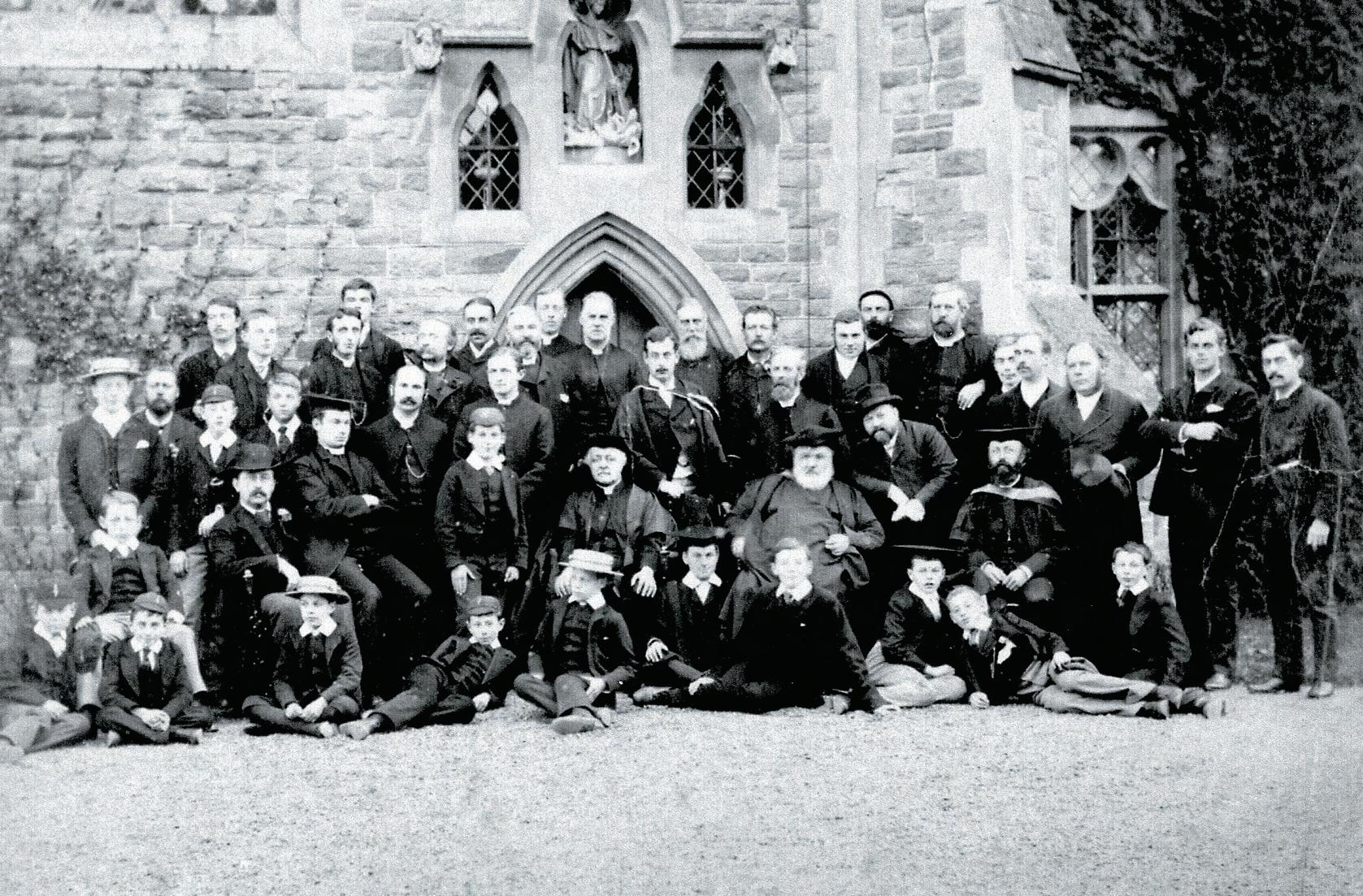
Cathedral Music 31 ➤
Commemoration Photo - early 1880’s at commemoration. Ouseley in centre behind boy with boater.
P3103 CM OCTOBER 06 27/10/06 14:01 Page 31
opened to more boys who were not choristers or probationers, who were called commoners and paid full fees.
Throughout the rest of his life, Ouseley was able to carry out his duties as Warden of the College and Vicar of the Parish. His periods ‘in residence’ as Precentor of Hereford Cathedral were undertaken during July and August every year. Other duties were undertaken at Oxford for his Music Professorship, and he was a Proctor in Convocation of the Diocese of Hereford for over twenty years. Also, he continued to travel all over the country, giving lectures to universities and the Musical Association, advising on organ-building and searching out prospective choristers for his choir at Tenbury. Over the years, the college became a nationally recognised institution, with prominent clergy, deans and bishops preaching at the annual Commemoration Services. Other visitors to the college included the Reverend J B Dykes (Hymn writer), the author Lewis Carroll, the Reverend Francis Kilvert (the famous diarist), and James Turle, Organist of Westminster Abbey. The work of the college was obviously well-known to Elgar whose part-song My love dwells in a northern land (1889) was written for the Tenbury Musical Society and inscribed to its conductor the Revd John Hampton, who succeeded Ouseley as Warden in 1889. More recently, visitors to the college have included Benjamin Britten and the poet Sir John Betjeman.

In 1872, Ouseley attended a conference on cathedrals and the lectures were later published by J S Howson, Dean of Chester as editor of Essays on Cathedrals by various writers. They proved a great influence in the search for higher standards of worship, education of choristers and other aspects of cathedral life. Ouseley’s contribution was an important lecture on The Education of Choristers in Cathedrals. He looked at all aspects of a chorister’s life, emphasising the need for better
education, greater care of choristers’ health and the need for regular exercise and games. He recommended that education should not be just academic and musical, though these aspects should be of the highest standard, but should incorporate moral and devotional training. He criticised the ‘proverbial carelessness of young lay clerks’ and made a number of recommendations concerning the conduct of rehearsals and where they should be held. He also felt that all choristers should be admitted to a choir, using an appropriate form of service. He also advised that each service should start and finish with a short vestry prayer in order to create an atmosphere of reverence, but strongly warned against possible irreverence in the conduct of services.
Even before Ouseley’s death in 1889, the College had to survive several periods of financial crisis. This financial frailty continued throughout its existence. Appeals were only partially successful and the time of deep economic recession in the 1970s and early 1980s proved the deathknell for many small preparatory and independent schools. St Michael’s finally closed its doors at the end of the summer term in July 1985. At that time, Brian Harvey, an old boy and brother of the composer Jonathan Harvey and a current Ouseley Trustee, spoke of the perennial problems the college had faced:
The “essence of the problem was that Ouseley’s original conception was not really practicable. He very admirably chose to use his father’s considerable wealth in this way, but it was a very romantic conception, not fully grounded in commercial reality”.
Before the start of the Thanksgiving Service, held on 14th July, a message from the Most Reverend Robert Runcie, Archbishop of Canterbury was read out to a large congregation.
‘With its magnificent library, the catalogue of distinguished
Cathedral Music 32
Portrait photo -a photo of Ouseley taken in 1886 after a serious illness, three years before his death.
P3103 CM OCTOBER 06 27/10/06 14:01 Page 32
‘Within a few years of the opening of the college, Ouseley realised that as most of the choristers and probationers paid little or no fees...’
musicians who have been members of its staff, and its illustrious list of Old Boys, St Michael’s needs no help from me to secure its reputation. Thanks to the College, the standard of cathedral music is higher today than it has ever been…The college has completed its task. But the spirit of Tenbury will live on through all those who learned to love their church and its music at St Michael’s.’
Writing in the final edition of the St Michael’s College Magazine, issued in February 1986, Roger Judd, the College Organist and Choirmaster looked back to that final Service: ‘And then the end of term and our Thanksgiving Service for all that had been done at St Michael’s over 129 years. Augmented by many who had either been choristers or lay clerks, or friends who had sung with us regularly, we gave of our best. No words can describe the feelings of the singers at that service, let alone the feelings of that great congregation. I will simply close this final report on the work and witness of the Choir of St Michael’s College by saying two things: Ouseley’s vision has been more fully realised than he can ever have hoped for in the general state of church and cathedral music, the realisation of that vision will live on far into the future and for that we should all say Deo Gracias.
St Michael’s College today
After a period of over five years lying empty, the building was bought by an educational organisation in 1991 and set up as an international college. Three years later, the college was bought by King’s College, Madrid and has prospered ever since, attracting students from all over the world. These students study English and take international GCSEs and A-levels. New boarding houses have been built and a new teaching block is planned.
The Ouseley Trust
In 1989, the Church Commissioners agreed a scheme and the Ouseley Trust was constituted as a registered charity. The Trust’s objective was to ‘….promote and maintain to a high standard the choral services of the Church of England, the Church in Wales or the Church in Ireland in such ways as the Trustees think fit. Their current policy is to concentrate their resources on courses of instruction, endowment grants, choir school fees and the purchase of music. Consideration is also given to other applications that involve unique and imaginative ways of fulfilling the Trust’s objectives. Applications are considered at biennial meetings. The Trust maintains close relationships with a number of other charities and organisations, notably the Choir Schools’ Association Bursary Trust, the Friends of Cathedral Music and the Royal School of Church Music. Since 1994, the Trust has given almost one and a half million pounds and recent grants have included chorister endowments to Leeds Parish Church and Gloucester Cathedral, help with Cathedral Music 33 ➤
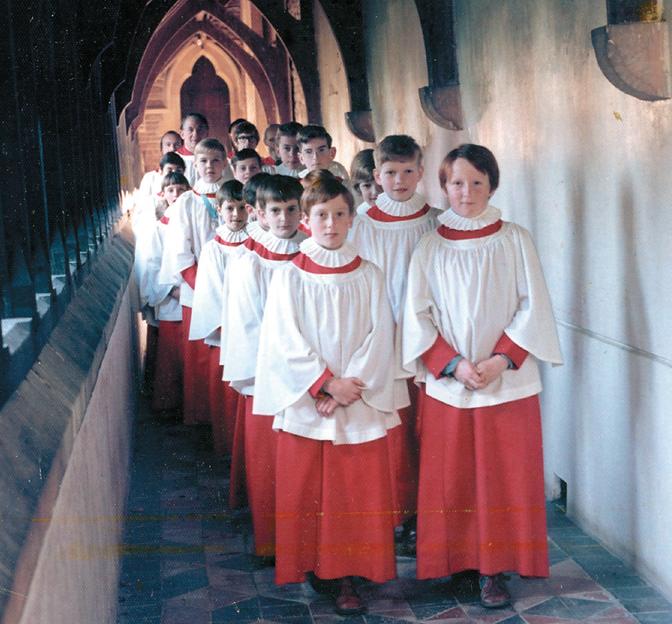
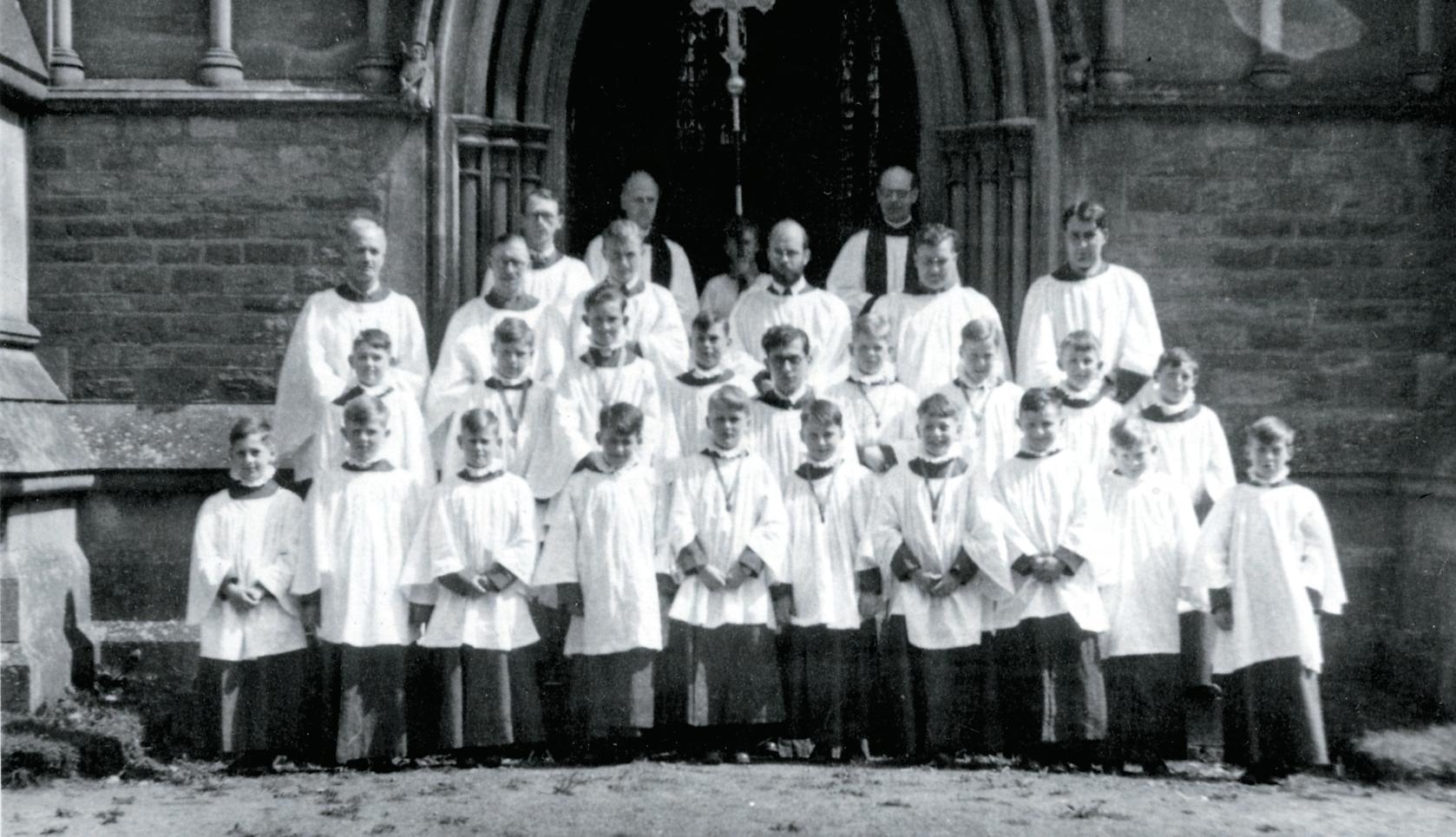
P3103 CM OCTOBER 06 27/10/06 14:01 Page 33
Photos supplied by Michael Hart
school fees to St James’s School, Grimsby and Wells Cathedral School, with smaller grants to parish churches for the purchase of music. St Michael’s Parish Church at Tenbury has received a yearly grant to assist with the costs of ‘Music at St Michaels’ an annual series of concerts, recitals and choral services sung by visiting choirs. A recent grant helped with repairs to the magnificent Father Willis organ. The Trust can be contacted at 127, Coleherne Court, London, SW5 0EB.
2006 Celebrations
The year 2006 represents a notable milestone in the life of St Michael’s. The Centenary of the St Michael’s College Society and the 150th Anniversary of the foundation of the college took place in September 2006. In July, the Choir of Clare College, Cambridge, gave a concert in St Michael’s Church, conducted by Christopher Robinson, (a St Michael’s Old Boy) and on September 16th, the celebrations really began. Hereford Cathedral Choir sang at a Choral Eucharist in the morning, followed by an organ recital by Roy Massey (a former Fellow of St Michael’s) in the afternoon and a Choral Evensong sung by the choir of Emmanuel Church, Sutton Coldfield. To round off these celebrations, after a gap of over twenty years, BBC Radio 3 broadcast a service of Choral Evensong on 27th September, sung by Tewkesbury Abbey Schola Cantorum.

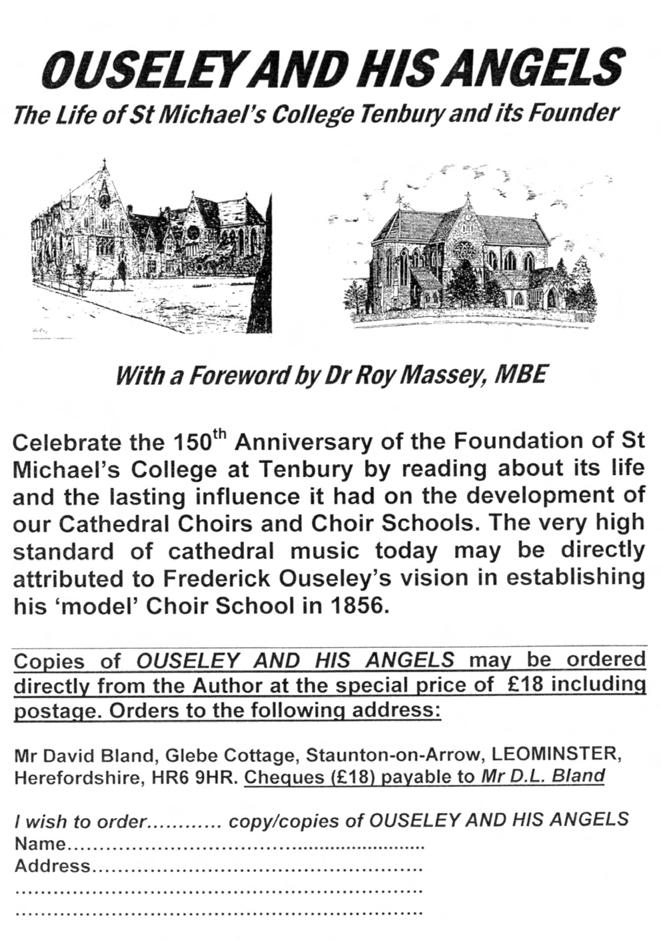
Despite the closure of the college, Ouseley’s vision and the heritage of St Michael’s remains alive, though perhaps not in a way he could have expected church and college are now separate entities but co-existing happily alongside each other. The college embodies a vision of international education and St Michael’s Church remains at the centre of parish and community life.
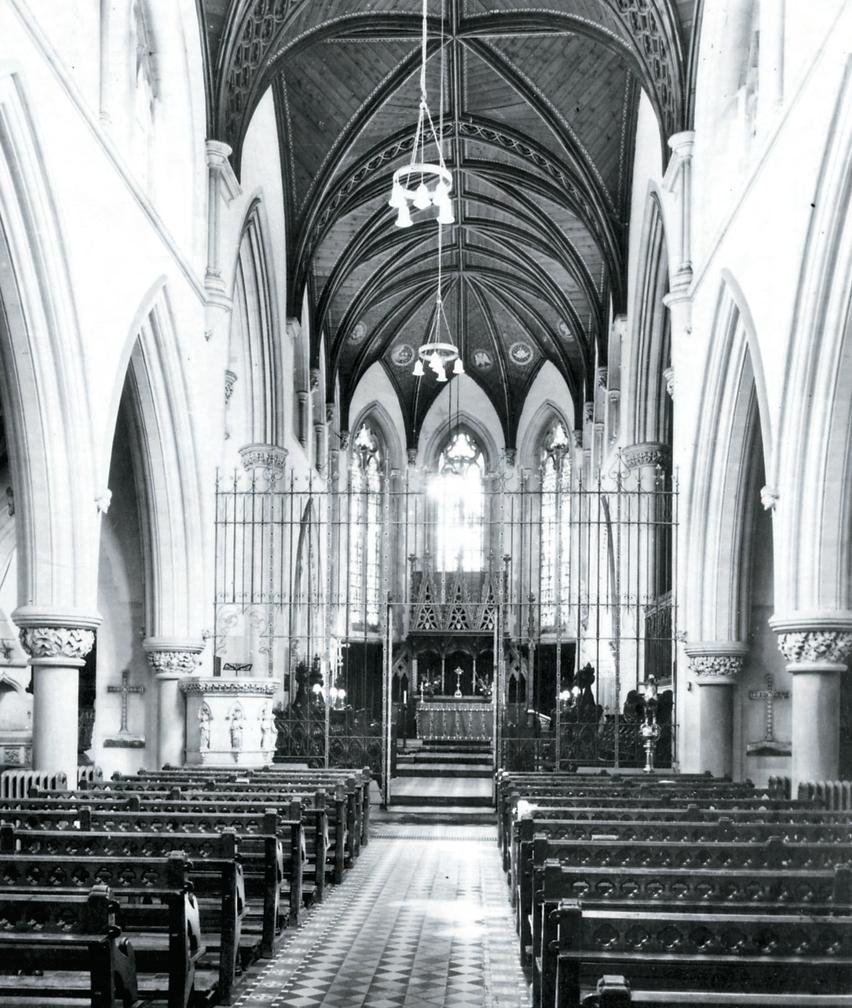
Cathedral Music 34
P3103 CM OCTOBER 06 27/10/06 14:01 Page 34
Photos of St Michael's College Tenbury and organ supplied by Michael Hart.
DERBY CATHEDRAL CHOIR RECEIVES £24,000 GRANT
Derby Cathedral is to spend its £24,000 FCM grant in two ways: £4,000 on the purchase of a new piano for the Song School and £20,000 for an investment fund for chorister instrumental training.
Peter Gould, Master of the Music at the Cathedral, said: “I am personally thrilled to receive the support that FCM has given Derby Cathedral Choir this year. We do not have great resources or a choir school in Derby and rely on willing volunteers to keep the choir running. The money will help to encourage the trebles to develop their instrumental technique and the playing, singing and reading of music will surely be of benefit to each other for the greater good.”
EX-CHORISTER STAR OF FILM FESTIVAL

Amy Carson, the youngest founder member of the girls’ choir at Salisbury Cathedral in 1991, was the belle of the ball at this year’s Venice Film Festival as the star of Kenneth Branagh’s new adaptation of Mozart’s opera The Magic Flute. It is due to be released in the UK in 2007. Amy, who was thrilled when Branagh chose her for the role of Pamina, received rave reviews for her ‘outstanding’ singing, acting and her ‘emotionally deep performance’. Amy said: “Becoming a chorister was a formative step in my musical career. The choir gave us confidence to perform as a unit and excel by combining our individual talents with strong discipline in musicianship. It also taught me professional standards, responsibility,
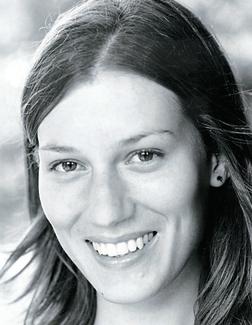
corporate and organising skills. My first memory of any opera whilst at the Cathedral School is Mozart’s Magic Flute and I formed a personal attachment to the role of Pamina then. Being a girl chorister was very special and gave me a strong sense of identity and inner confidence. Being in the first ever cathedral girls’ choir was very special because of its uniqueness. It gave me a strong sense of identity and inner confidence.”
ROCHESTER CATHEDRAL
A £30,000 cheque was presented by FCM Treasurer, Tim Rogerson, at the Sung Eucharist on Sunday 10 September to support Rochester Cathedral’s Music in Holy Week each year. The Dean of Rochester, the Very Revd Adrian Newman, said: “We are delighted with this wonderfully generous grant from the Friends of Cathedral Music, which will be used to fund the music for Holy Week and Easter services in the Cathedral in perpetuity. What a gift this represents – to ensure that services at such a central time of the Christian year will be enhanced by spiritual music that moves the spirit and touches the soul. I can’t think of a better legacy to pass on to future generations, and we are so grateful to FCM for this creative and wonderful expression of support.”
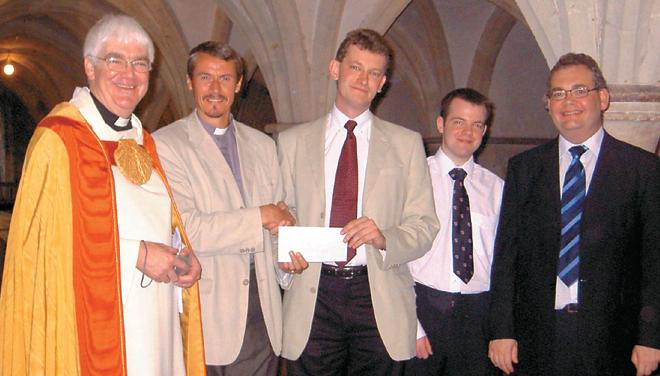
Cathedral Music 35
P3103 CM OCTOBER 06 27/10/06 14:01 Page 35
NEWSBITE News from Choirs and Places where they sing
Chants& Yet More Chant
Peter Kirk updates readers on his chants projects

Ihave been asked to write a short follow-up article on my National Archive of Anglican Chants. For the last eighteen months or so I have been working through the archives at the Colles Library at the RSCM until its move a few months ago. At least 50 new sources have been posted to me since January 2006. My collection must now be around 250 chant books, psalters, hymn-books and amazing hand-written chants, both ancient and modern.

On a cold February morning there was a large ‘thud’, a big jiffy bag had descended through the letterbox. Cats freaking out, guinea pigs panicking under a pile of wood shavings. Upon opening, there was a mammoth, hand-written, lifelong collection of chants by Dr Henry Thomas Pringuer 1852-1930. This was kindly sent by a relation of the late Dr Pringuer. Contained in this treasure were some previously unpublished chants and very good ones at that. I am reliably informed that Dr Pringuer died just before Choral Evensong, what a way to go! This volume pushed the number of chants to over 7000. Another milestone.
February was mostly spent copying out the 300 chants by William
Metcalfe 1834-1909, a lay clerk from Carlisle Cathedral. March was the month of rarities. The Cathedral Chants 1844, edited by Dr Edward Francis Rimbault 1816-1876;Cathedral Chants c1830, edited by Alfred William Bennett 1805-1830 and Dr William Marshall c1806-1875. The best (in my view) The Cambridge Collection of Chants 1845, edited by Dr Thomas Attwood Walmisley 1814-1856. These contained many wonderful chants and, some are seemingly not contained anywhere else. I can safely state now that the 18th to mid-19th century chants are my all-time favourites.
The major and minor doubles are still a unique feature in my collection. To write a good chant, then another in an ‘opposite key’ is quite an achievement. A good find this year was a pair of unpublished chants bySir C V Stanford 1852-1924in G major and G minor, probably from his days as Organist of Trinity College, Cambridge.
There is, hopefully, going to be a re-recording of the complete Psalms of David starting in 2007. I have been asked to supply all the chants but no previously recorded chants are to be included. That should be a culture shock to most of us! Watch out for new
Cathedral Music 36
P3103 CM OCTOBER 06 27/10/06 14:01 Page 36
or less well-known chants for Psalm 22 and Psalm 46. There are so many marvellous chants out there waiting to see the ‘light of day’ and performance.


Theo Saunders (Armagh Cathedral) recently visited us; after lunch he composed a sumptuous double chant in A minor (14 minutes). Another for the collection! I often wonder in what conditions James Turle 1802-1882 wrote his chants. Probably in the cold and austere setting of Westminster Abbey in a London ‘Peasouper’.
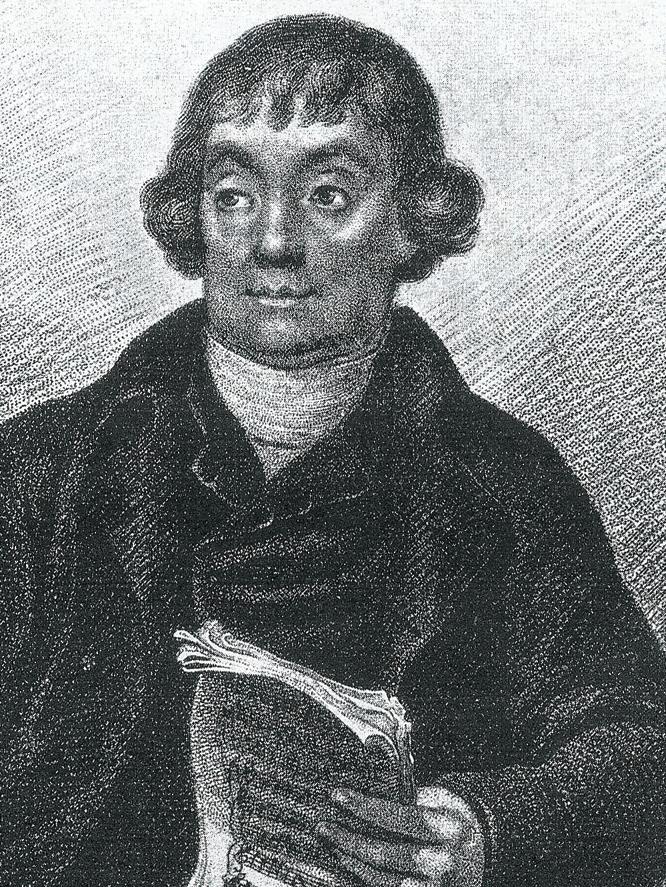
Our annual visit to Southwell Minsterover Holy Week resulted in the loan of some of Paul Hale’s chant books. After three months grafting, the collection rose to 8700. I then decided to do a grand count but found some more chant books up in the loft. In between attacking Paul’s collection, I started ploughing through these. They amounted to another 900 new chants. The music at Southwell is out of this world. If you have not visited this jewel in the wilds of Nottinghamshire you have missed out on some of the best choral and organ music in the country. Try the Good Friday Liturgy and bring the Kleenex (we are still recovering!).
The month-end tally appeared to be around 10,500. As I write this article (early August 2006), lying on the filing cabinet is another set of chants: an interesting Psalter where every chant is new to each psalm; No duplications, praise the Lord! This source is The Southwark Psalter and set to music by a Dr A Madeley Richardson, 1905. Not having completed this one I have an extra 55 chants to hand and I am only up to Psalm 40. Could there be nearly 200 new chants here?
The number of composers within this collection (as of 30th July 2006) amounts to 1676 but why only 10 women composers in that count? This last sentence should generate some letters to the editor!
I am always quite amazed by the ‘cleansing’ of chants over the decades. Amongst the chant books that I was brought up on in the early 1960s were the one, two and three star New Cathedral Psalters’, and very worthy collections they were. I have researched some very old books recently; what became very noticeable was the changes of harmony, especially in the alto and tenor lines. There are hundreds of such examples, so one wonders which the original version is? The chants above, by Jonathan Battishill 18381801 are a case in point. The samples are only thirty-one years apart, have things changed that quickly? I feel the direction to go is to be open-minded about the authenticity of the arrangements. Just enjoy whatever version is sung – it is still a mini masterpiece. My collection has around six doubles and nine singles, all of the highest merit by J Battishill. Are there anymore lurking in those dark, dingy vestries?
As ever, if any readers have access to chants, psalters or their own collections that I can use for research I would be very appreciative. (I should be on the way to getting the National Archive of Anglican Chants official.) There are three cathedral chant books out there, although very fragile I have been told that I can photograph them with a digital camera, so that is on the cards for the autumn. Could they make more than 10,500? So the project goes on.
Thanks to the Friends of Cathedral Music for your support over the last couple of years and all good wishes in this your special anniversary year. I can be contacted on 01252 314740 or tpkirk@halcyon291.fsnet.co.uk
Cathedral Music 37
Jonathan Battishill 1738-1801
P3103 CM OCTOBER 06 27/10/06 14:01 Page 37
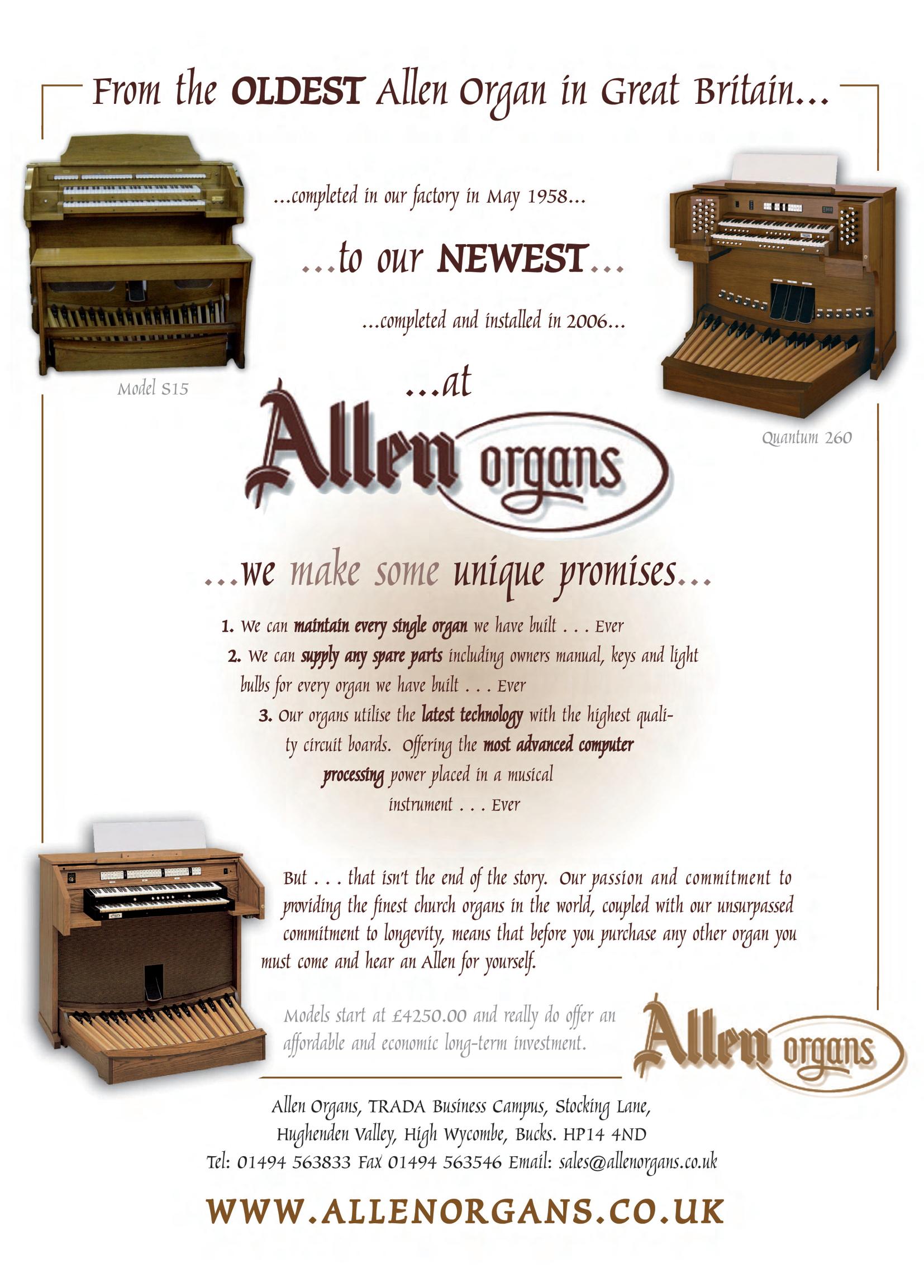
P3103 CM OCTOBER 06 27/10/06 14:01 Page 38
Take Me To The Bridge

When the visitor from the south approaches Newcastle upon Tyne either by road or rail, the first sight that he sees is often the fine 15th century lantern tower of Saint Nicholas’s Cathedral, only a stone’s throw from the imposing Norman keep and the high level bridge.
However, a gladdening landmark for the lay clerks, choral scholars and other personnel from the cathedral is the Bridge Hotel, neatly tucked in between the keep and the railway bridge that gives the pub its name. (Only a three minute dash from the song-school!)
The Bridge Hotel was built in 1901 by Sir John Fitzgerald Ltd, replacing an earlier hostelry. Soon, it became the ‘cornerstone of the High Level Bridge’, retaining its character over the years, though having been tastefully refurbished in recent times. Furthermore, there have been links between the ‘Bridge’ and the cathedral since the early 20th century, one way or the other, especially with the music department.
Some original stained glass remains inside the ‘Bridge’, one can also find secluded areas and comfortable ‘snugs’
to make socialisation more practical; very unlike many city bars which have fallen prey to plasticity and tasteless gimmickry to attract younger clientele! To enhance the ‘Bridge’s’ traditional image, live folk music has continued regularly in the upstairs function room since the 1960s.
After many a thirst-provoking evensong, the ‘back row’ wind their weary way to this venerable institution to partake of many quenching-waters, notably a varied selection of the amber flood. The real ales here are excellent and varied, though there is often an emphasis on local beers from breweries such as Mordue’s, Big Lamp, Hexamshire and Wylam. Geordies have long taken a pride in the quality of local ales, the cellars of the ‘Bridge’ testifying to this.
An apocryphal story relating to the lay clerks of a very bygone generation is told of how a cathedral canon tended to preach long-winded three-point sermons at evensong. To relieve the tedium of this, the lay clerks would process out at sermon-time (ostensibly to rehearse) discard their robes and
adjourn to the ‘Bridge’ for a pint! When the preacher had just started his ‘third point’, a loyal verger would dash down to the pub to warn the gentlemen to return in time for the last hymn! Nowadays however, teamwork is more civilised and professional.
The present-day lay clerks and choral scholars are pictured here outside the terrace of the ‘Bridge’ which affords fine views of the Quayside. If all the seats are taken, one may sit on some of the remaining bits of the old city walls, or view The Sage, Tyneside’s prestigious concert venue over the river. The full choir has given Christmas concerts at The Sage recently, whilst the choristers have participated in performances of Britten’s War Requiem and his St. Nicolas Cantata.
So, you will see that we are well placed for spiritual, cultural, and temporal refreshment. If you ever visit ‘The Toon’, we will be glad to see you at evensong and in the ‘Bridge’ afterwards – whether your tipple is ale, cola, G&T or ‘Newkey Broon’! Cheers, hinny! as we say in this part of the world…
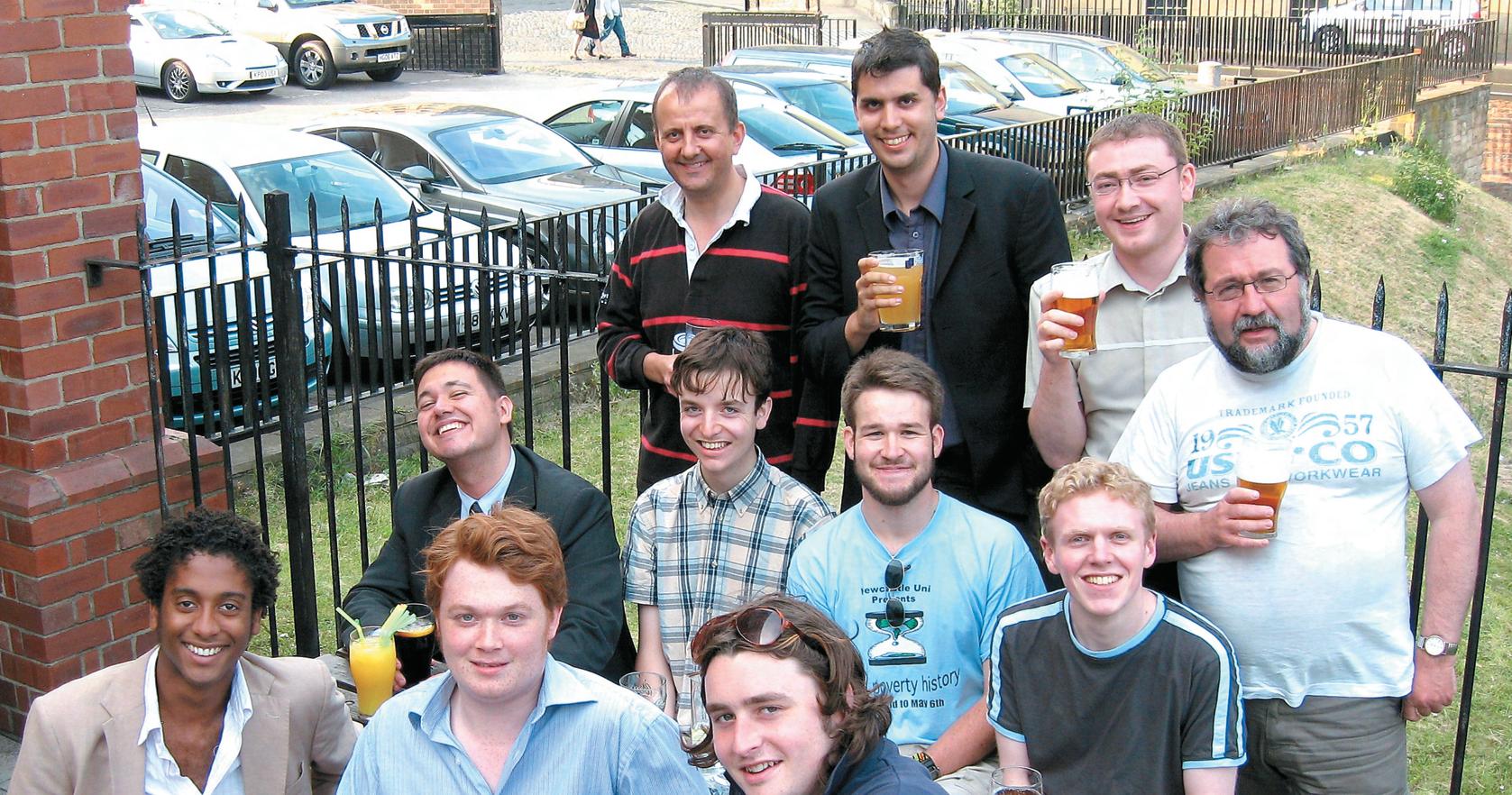
Cathedral Music 39
LAYCLERKS’
TALE
Where do lay clerks hang out in your part of the country? If your local hostelry is worth a mention drop the Editor a line along with a photo of the lay clerks partaking of a pint.
Chris Gardner, tenor lay clerk, St Nicholas’s Cathedral, takes us to The Bridge Hotel, Newcastle upon Tyne
P3103 CM OCTOBER 06 27/10/06 14:01 Page 39
Timothy Storey
DR HARRY BRAMMA
an appreciation
Why do you want to write about Harry Bramma? What has he done for CATHEDRAL MUSIC?’ I quickly informed our esteemed editor that there are three very good reasons for writing about Harry as he celebrates his seventieth birthday. He was Christopher Robinson’s assistant at Worcester Cathedral during the decade or so when the choir was among the very best in the country: he trained a succession of very able pupils at the King’s School, Worcester, several of whom are highly distinguished as organists, conductors or singers; and he rebuilt the traditional choir of men and boys at Southwark Cathedral when it seemed to be on the verge of extinction after some very difficult years.
Harry was born on Armistice Day 1936, and received his early training in the choir of St Paul’s, Shipley, a ‘good parish choir’ where he learnt the classics of English church music. He had lessons from Melville Cook at Leeds Parish Church and went up to Oxford as Organ Scholar of Pembroke College, reading both Music and Theology and coming under the influence of Bernard Rose, who became a life-long friend. Then came Retford Grammar School, where Harry

Cathedral Music 40
‘The Cathedral Choir had enjoyed a good reputation under David Willcocks and Douglas Guest, but it was soon to be in a class of its own.’
P3103 CM OCTOBER 06 27/10/06 14:01 Page 40
Worcester Cathedral. Photo: Adrian Lucas
established a rapport with some fairly tough customers, winning their respect and persuading them that there might be something in this classical music business after all. Cathedral choristers and public school ‘hearties’ held no terrors thereafter!
Meanwhile his near-contemporary Christopher Robinson, Organ Scholar of Christ Church, Oxford, had taught for three years at Oundle and had then been appointed Assistant Organist of Worcester Cathedral in 1962. When Douglas Guest left for Westminster Abbey the following year, Christopher was appointed to succeed him; it is a remarkable coincidence that another Christopher (Dearnley) had succeeded Guest in similar fashion at Salisbury, six years earlier. The resulting vacancy at the Cathedral was filled by Harry Bramma; and so began a most exciting partnership, broken by Robinson’s move to St George’s Chapel, Windsor in 1975. Harry also taught at the King’s School (which serves as Worcester’s choir school) and became its Director of Music two years later.
The Cathedral Choir had enjoyed a good reputation under David Willcocks and Douglas Guest, but it was soon to be in a class of its own. Christopher Robinson had been influenced by the choir-training of Meredith Davies at New College, Oxford; but more importantly, in Harry’s words, ‘he just had what it took’. The boys developed a bright, resonant tone, not ‘continental’ like the sound of the Westminster Cathedral or St John’s, Cambridge boys, but distinctive, flexible and powerful. There was a succession of ‘golden voices’ among the boys, and some colourful characters among the men, including Henry Sandon of Antiques Roadshow fame. An early
St George’s School Windsor Castle

Pre-Preparatory and Preparatory Day and Boarding School for Boys and Girls 3-13 years.
•High quality education and traditional values
•Co-educational policy within a prep school environment
•Opportunities for boy choristers to sing in StGeorge’s Chapel
•Five day academic week with flexible boarding arrangements
•Purpose built & equipped Nursery & Pre-Preparatory Dept
•Extensive playing fields and heated indoor swimming pool
•Secure environment for pupils within the Home Park
VOICE TRIALS
For Boys (7 1/2-91/2 years old)
Saturday March 3rd 2007
Open Auditions will be held for Choristerships (worth up to 50% of the school fees.)

Enquiries to the Registrar Rebecca Farha, J.Roger Jones,Head Master
St George’s School,Windsor Castle
Berkshire SL4 1QF
Tel:01753 865553Fax:01753 842093

e-mail:registrar@stgwindsor.co.uk
Website:www.stgwindsor.co.uk
recording for the Abbey company featured some outstanding treble soloists, and then came the memorable Elgar recording of 1969, with colourful organ accompaniments from Harry including the notorious semiquaver scale passage in Give unto the Lord. “I wasn’t a bad player then” he modestly says.
When Harry talks about those days, the overwhelming impression is of fun. There was a flourishing social life in the cathedral community, and the countryside around Worcester offers any number of good inns for an evening out. He certainly worked hard: it was also the Assistant’s task to run the Cathedral Voluntary Choir, (even now) a large body of men and boys which under Harry’s direction became good enough to take the Cathedral Choir’s place on occasion. Worcester is probably unique in still having two boys’ choirs. There was one never-to-be-forgotten Sunday when he played for the Parish Eucharist at 9.30, Mattins at 10.30 and Choral Eucharist at 11.30 with the Cathedral Choir, a special service at 2.30, the Cathedral Choir at 4.00, the Voluntary Choir at 6.30 and a school service at 8.00 – ‘the worst Sunday of my life!’ He helped to prepare the Worcester Chorus for the Three Choirs Festival, and latterly he also conducted the Kidderminster Choral Society.
School music had been in a somewhat parlous state, and Harry saw it as his mission to involve the whole school in musical performances. So successful was he that games practices had to give way to rehearsals of the Choral Society. Stephen Cleobury (King’s, Cambridge), Andrew Millington (Exeter Cathedral), Stephen Darlington (Christ Church, Oxford), Geoffrey Webber (Gonville and Caius, Cambridge) and Christopher Tolley (Winchester College) are eminent
Cathedral Music 41 ➤
I.A.P.S. C.S.A.
P3103 CM OCTOBER 06 27/10/06 14:40 Page 41
church musicians who were trained by Harry at the King’s School, to say nothing of academic musicians such as Peter Hewitt, the conductors Nicholas Cleobury, Jonathan Nott and Jonathan Darlington, and the internationally famous operatic tenor Richard Berkeley-Steele.

Harry’s work with the Worcester Cathedral Voluntary Choir made him the ideal candidate when Southwark Cathedral needed an organist in 1976. Under E T Cook the music at Southwark between the world wars had been highly regarded, but his style had seemed too esoteric for the cathedral’s post-war régime, and during the prime years of ‘South Bank theology’ the story had been one of an unhappy decline, with the musical content of Sunday services considerably reduced and the paid lay clerks dismissed, partly as a matter of principle and partly because the cathedral was in severe financial trouble. St Olave’s Grammar School, from which the boys had been drawn, had moved to Orpington, and local boys were hard to recruit and of poor quality. Harry inherited 14, of whom seven were useless and a thorough nuisance into the bargain; of the remaining seven, six were on the verge of retirement.
Provost Frankham did not mind what kind of choir his cathedral had, so long as it was good, but Harry was determined that a cathedral should have a traditional all-male choir. With the aid of former pupils in the musical world, and one or two sympathetic headmasters, he soon had a steady stream of recruits. He is particularly proud that the wife of a United Reformed minister personally escorted a promising recruit to and from the cathedral several times every week ‘because he was worth it’; and indeed there was a pronounced ecumenical aspect to the choir for many years. Several of the
boys were from ‘trendy Islington schools’ where teachers were addressed by their first names, and fairly soon he was ‘Harry’ rather than ‘Sir’ with no loss of respect or efficiency but a perceptible gain in family feeling. Sunday lunch for the choir became a popular institution, cooked by parents in turn and with Harry taking his place in the rota.
Within a couple of years the choir was fit to broadcast evensong on Radio Three, and by the end of Harry’s time at Southwark the quality of such broadcasts was outstanding, with more than a touch of the Worcester polish. He had two outstanding assistant organists, first John Scott (shared with St Paul’s) and then Andrew Lumsden. Money was found first for three paid lay clerks and then six, and on his move to the RSCM in 1989 Harry handed on to his successor, Peter Wright, a flourishing establishment which has been further developed to include girls’ and adults’ choirs. Another of Harry’s legacies was his work as organ adviser to the diocese, supervising the conservation of several notable instruments and overseeing the restoration of the cathedral’s notable Lewis organ, with the reversal of Henry Willis III’s ‘so-called’ improvements.
I asked Harry what might have happened had he not gone to the RSCM in 1989. He is sure that the time had come for a move from Southwark, because it was not the sort of job that one should do for too long. One or two cathedral chapters must surely wish that they had appointed him when they had the chance! He upset a few die-hards in the RSCM (and FCM) by offering a welcome to ‘informal musical styles’ and girls’ choirs, but some of the heat seems to have gone out of the argument with the passage of time. He certainly looks back on his years at Worcester and Southwark with great pleasure, and he must surely be said to have ‘made a difference’ to both places.
Cathedral Music 42
Dr Harry Bramma.
P3103 CM OCTOBER 06 27/10/06 14:01 Page 42
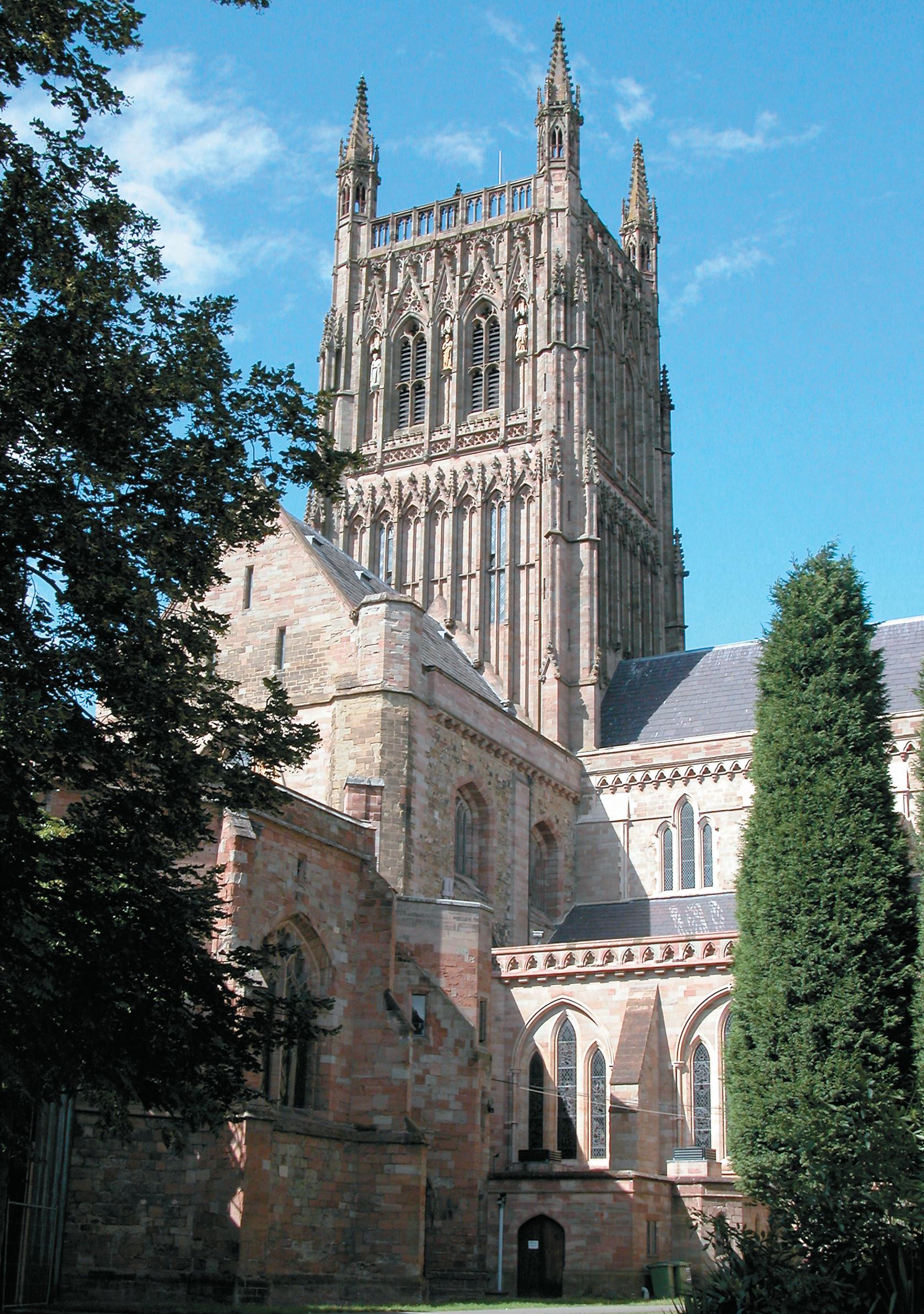
Cathedral Music 43
Worcester Cathedral. Photo: Philip Halling
P3103 CM OCTOBER 06 27/10/06 14:02 Page 43
‘He is particularly proud that the wife of a United Reformed Minister personally escorted a promising recruit to and from the cathedral several times every week ‘because he was worth it...’
Peterborough Cathedral
After the Fire
Andrew Reid - Director of Music
Peterborough Cathedral has never looked so good! A major restoration of the inside of the building has been completed during the past fifteen years, and since the fire of 2001 the interior has been re-cleaned. Some areas (particularly its chief treasure, the medieval painted wooden nave ceiling) have been cleaned both prior to and after the fire. New lighting shows the building off at its finest, and with new electrical systems and a restored organ the cathedral finds itself in an envious position with regard to the interior of the building.
It was a close run thing. The Fire Service calculated that the nave ceiling was within seven minutes of destruction when they intervened. The fire was started when a lit candle was placed on plastic chairs stacked behind the Choir Organ and choir stalls around the time the building was being locked after Evensong. It burned through the wind trunking for the organ and charred the Choir Organ case. There was considerable water damage to the Choir Organ in the aftermath, but mercifully the solid oak stalls and organ case were slow to combust, and the majority of the damage to the rest of the organ, and to the building, was the result of a thick black covering of oily grime from the burning plastic chairs.
Having already launched an appeal in 1996, Dean Michael Bunker could be forgiven for viewing the damage to the cathedral with some desperation! As the local paper began to
roll with news of the fire, however, donations came in thick and fast, and it became clear that the will of the city (population 160,000) was that the cathedral must be restored. This endorsement of the cathedral as a central beacon and icon for Peterborough may have been somewhat surprising. Peterborough as it is now, is no traditional green cathedral city, but rather a new town superimposed over the past forty years on a population the size of Ely. With insurance claims, some 5,000 individual gifts to the Emergency Appeal and some generous charitable grants, not to mention Michael Bunker’s leadership, the dedication of the team he headed, and the skill of local and national craftsmen, the restoration seen today was possible.
Although the fire was a great shock to the cathedral community, it became clear that it provided an opportunity to continue the work of restoration begun in the 1996 Appeal. Among the items which could be restored was the organ, last rebuilt in 1981. With other work going on in the cathedral after the fire it was important to clean, secure and remove those parts of the organ that were at risk. Some were taken to Durham, home of Harrison and Harrison, while others were stored in the north nave triforium. The restoration of the organ could not be finished for nearly four years, until other cleaning and repairs in the cathedral had been completed.

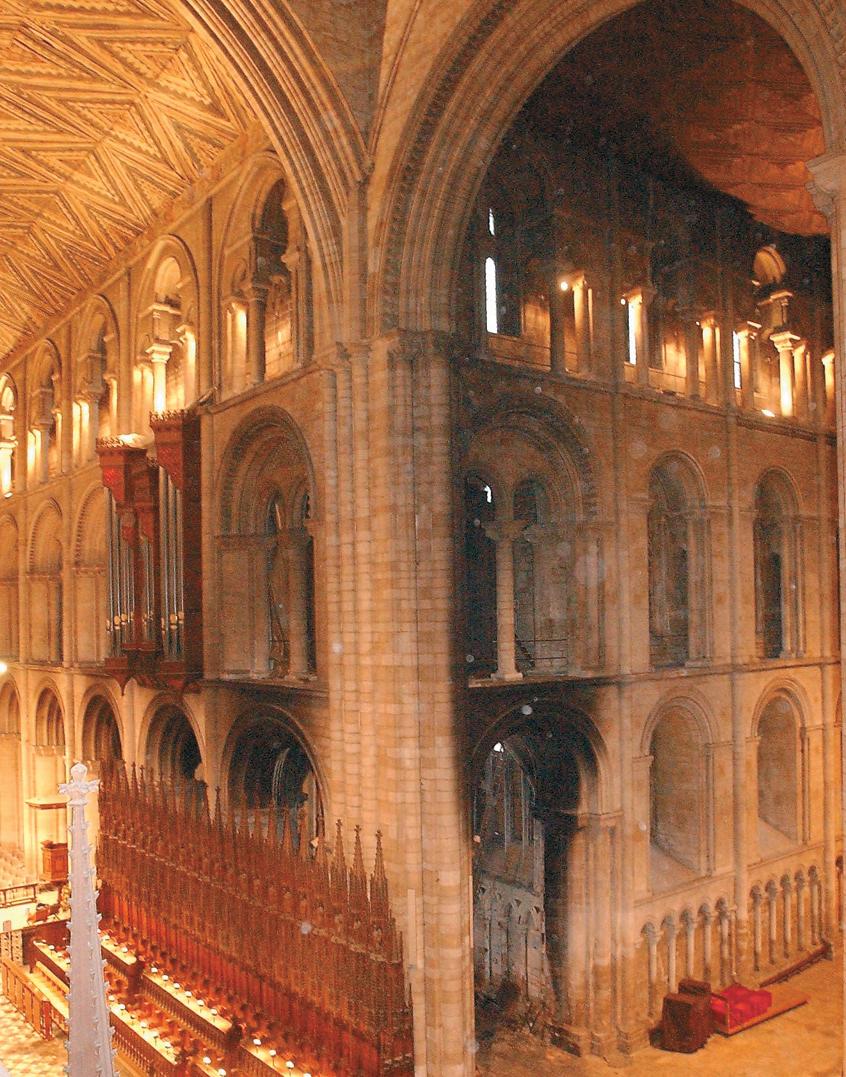
Cathedral Music 44
P3103 CM OCTOBER 06 27/10/06 14:02 Page 44
The organ was restored almost exactly to its 1981 state. The choir organ, which sits behind the choir stalls on the north side, was moved a bay further west. An up-to-date Solid State piston system was installed with many more channels and stepper buttons to take the organist through the general pistons in sequence. The console was remade and turned through 45 degrees so that the organist could communicate better with the choir conductor downstairs. The old cast iron spiral staircase to the console was reinstated. A second Tuba was prepared for (in the Hill style). In most other respects, however, it was a restoration rather than a rebuilding. This is unsurprising: it is a successful organ which projects well into the building, and has a large range of colours and well designed choruses. The team of advisors in 2001-2005, as well as the principal players at Harrison and Harrison, were those who had already made significant changes to the organ in 1981: the restored organ essentially represented their vision for the instrument, and that they did not require it to be changed after 2001 indicates the care that they took to get it right in 1981.
Rather less obvious was the question of the pitch of the organ. By 1894 Hill’s pitch for new instruments was ‘Old Philharmonic’ (approximately A = 454 Hz at average room temperature). The Hill organ at Lichfield is the other major cathedral organ retaining this pitch, slightly over a quarter tone sharp of modern concert pitch (A = 440 Hz), and considerably sharper than the unchanged original pitches at Durham and Salisbury. Over the years, as local pitch traditions became less important than international standards, many cathedrals altered the pitch of their organs in line with standard pitch, partly for choral reasons, and partly to allow the organ to play with orchestral instruments in services and concerts. Peterborough considered doing this, as is evident in the Chapter records of 1928, but the limited money available was spent instead on changing and augmenting the Hill organ to bring it into line with modern organ-building trends. The question was considered again during the time Stanley Vann was Master of the Music (in 1970), and the pitch might then have been changed but for lack of money. When Christopher Gower was appointed Master of the Music money was made available for a full rebuild but strongly held advice not to change the pitch emerged from one or two significant quarters, and so again no change was made. When pitch change was considered a necessity by the Chapter in 2002, in line with its commitment to restore the organ, the decision was no longer in its hands, and an application to the Cathedrals Fabric Commission for England was turned down. For as long as the arguments on each side of the debate continue to be live the question of pitch change still hangs in the air; but the 2005 restoration retains the sharp pitch of the instrument.
To what extent is the Peterborough organ still the 1894 Hill?
The most accurate answer is probably that the instrument retains the spirit of the Hill organ, and much of the physical pipework, though this is largely altered (and to some extent altered back as well). As early as 1912 Hill began revoicing the chorus reeds on a higher pressure. This process was continued by Hill, Norman and Beard in 1930, at which point all the high pressure Swell, Great and Pedal reeds were altered. The Great reeds were eventually replaced in 1981 with new pipework. The design of the Great and Swell Principal choruses originates with Hill, though some pipework dates back to 1868. In 1930 the Great second Open Diapason, Octave, Twelfth, Fifteenth and Mixture all appear to have been altered, as well as the Swell Principal and both Swell Mixtures,
a considerable majority of the chorus stops. The Hill Great Sharp Mixture was removed in 1930: the current stop dates from 1981, at which point the composition of the Great and Swell lower Mixtures was altered to brighten those ranks in some registers. A number of the orchestral colours, Great and Solo Flutes and the Swell Oboe were also changed in 1930 or 1981, and some of the remaining stops were resited in either or both rebuilds. In 1981 alone alterations were made to some 17 stops in total, some to restore the organ to its state prior to 1930, and some to develop it.
As well as significant changes to the 1894 Hill pipework there were notable additions. In 1930 8ft Open Diapasons on heavy pressure were added to the Great and Swell, several new Solo colours were created, and several additional stops (including a Dulciana chorus) were included throughout the organ, though some of this pipework was jettisoned in 1981. The majority of the Choir Organ was new in 1981, and there were further alterations and resitings, as well as the addition of some of the Pedal upperwork and the Great Cornet.
The current instrument is tonally a masterpiece, a testament both to the integrity of the 1894 instrument and to the process of evolution it has undergone since. Although much of the organ has been altered at one time or another, whether through revoicing, changes of wind pressure, removal and resiting of stops, and so forth, it undoubtedly feels like an instrument at unity in itself, and not, as with so many instruments that have undergone a similar process of change, as if fighting with itself over its true identity. It is now in excellent shape after restoration and most importantly it sounds well not only in the quire but also throughout the cathedral.
In September 2005 an organ festival was held to celebrate the restoration of the cathedral and its organ. The opening recital by Olivier Latry, of Notre Dame, Paris, demonstrated the instrument’s capabilities in a range of Romantic and modern French music, and in Liszt. Matt Edmundson from CBBC and theatre organist Richard Hills demonstrated the instrument to a young audience of 250, assisted by a video link-up to the console and to the tuners among the pipes. A range of British and German organ music, including orchestral transcriptions, was heard in the remaining programmes, featuring in particular James Vivian, now Organist of the Temple Church. The cathedral choir sang Patrick Gowers’s anthem Viri Galilaei and Britten’s Rejoice in the Lamb in concert, as well as music within the weekend services. At the festival Michael Bunker announced that, with the restoration and post-fire work completed, he would step down as Dean.
Cathedral Music 45 ➤
P3103 CM OCTOBER 06 27/10/06 14:02 Page 45
‘Having already launched an appeal in 1996, Dean Michael Bunker could be forgiven for viewing the damage to the cathedral with some desperation!’
It would be convenient to end the story with the restoration, a neatly completed chapter in the cathedral’s life. However, significant ongoing changes have accompanied the physical work in the cathedral. The Chapter has, during the past 18 months, rethought its priorities, and reshaped its budget in line with its desire to make ministry and mission, within which the choir is paramount, the future emphasis of the cathedral’s life. Restoration work continues (scaffolding will cover the west front for almost two years as decay to the stonework is
halted) and is a key part of the stewardship of the cathedral. Internally, major changes, not possible during the 1996 Appeal and the Emergency Appeal after the fire, have been implemented. Lay clerk salaries, two years ago the lowest for any ‘traditional’ cathedral, were raised by 90%, and terms renegotiated. A full team of six lay clerks is now in place where, in particular, there were previously no regular tenors. Recently three new assistant lay clerk posts were created, so that for the first time professional singers augment the back row for Sunday Eucharist and Evensong in addition to the supernumerary singers. Issues over the organists’ accommodation and conditions of employment have been addressed, bringing Peterborough into line with other cathedrals. Professional singing teaching for the choristers and lay clerks is now incorporated into the budget. The Cathedral Trust, through gifts from members of the Company of St Peter, continues to provide resources for additional choir activities, such as tours and recordings and has recently granted £13,000 to restock the choir library. The Friends of Peterborough Cathedral have recently pledged money over three years to enable the choir to reach out to churches in the Diocese. Plans are starting to form around creating a purposebuilt Choir House, replacing the choir’s temporary accommodation in Laurel Court. Peterborough Cathedral is not rich, but has turned a financial corner and managed to shape its budget around its priorities. Slightly over half the annual music budget is met from the Hastings Music Endowment Fund, to which the Friends of Cathedral Music have twice given generously in 1997 and 2002.
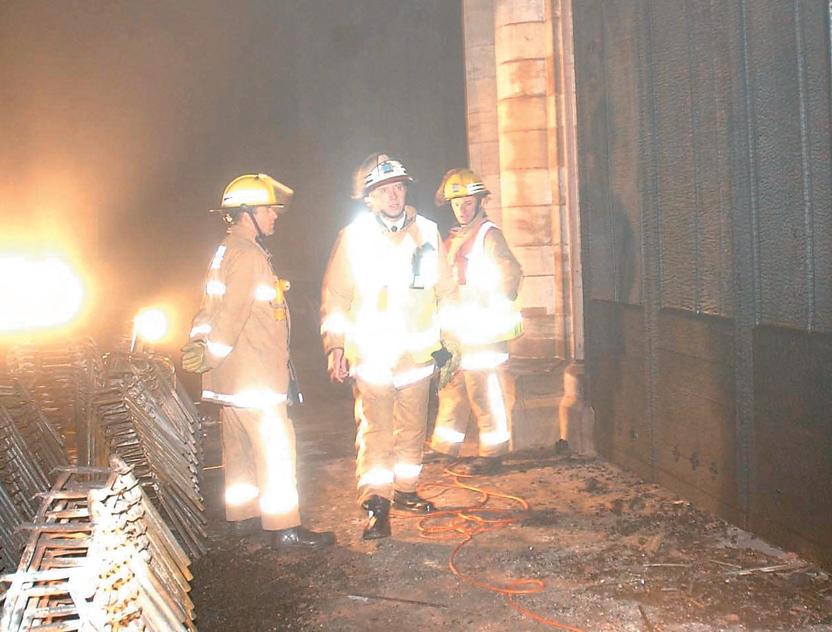
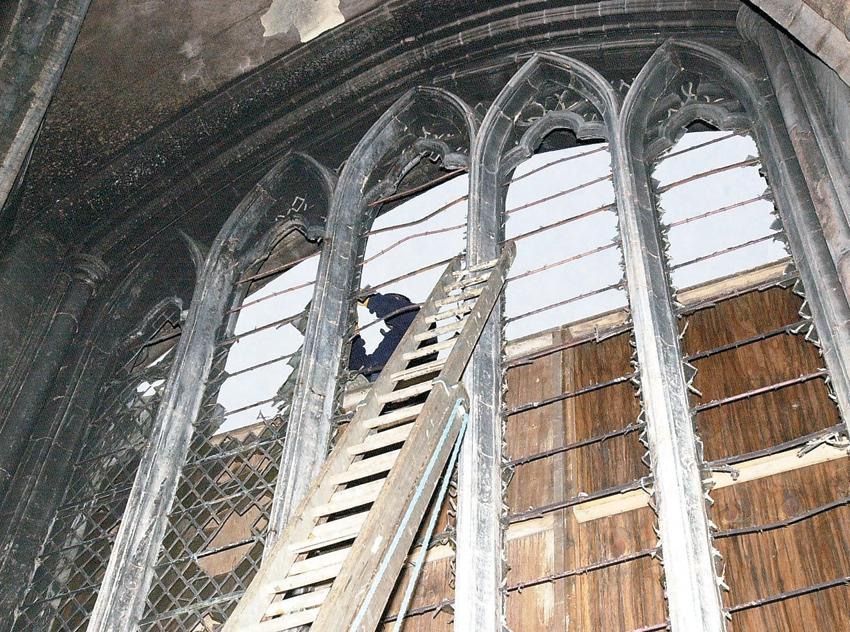
Such expenditure creates expectations, and it is important that the music, and the choir in particular, continue to grow in line with the emphasis and resourcing it has been given. With the organ restored, the music better resourced than previously and the cathedral hoping to welcome a new dean, things are moving which will enable this growth. The money will have been well spent if the worship increasingly helps to open visitors and the regular congregation alike to the grace of God. The vision of the Chapter at Peterborough is that cathedral music has a great role to play in drawing our hearts and minds to God. Music, like the cathedral building itself, is both a sacramental offering and a source of inspiration to aid others in worship.

Cathedral Music 46
P3103 CM OCTOBER 06 27/10/06 14:02 Page 46

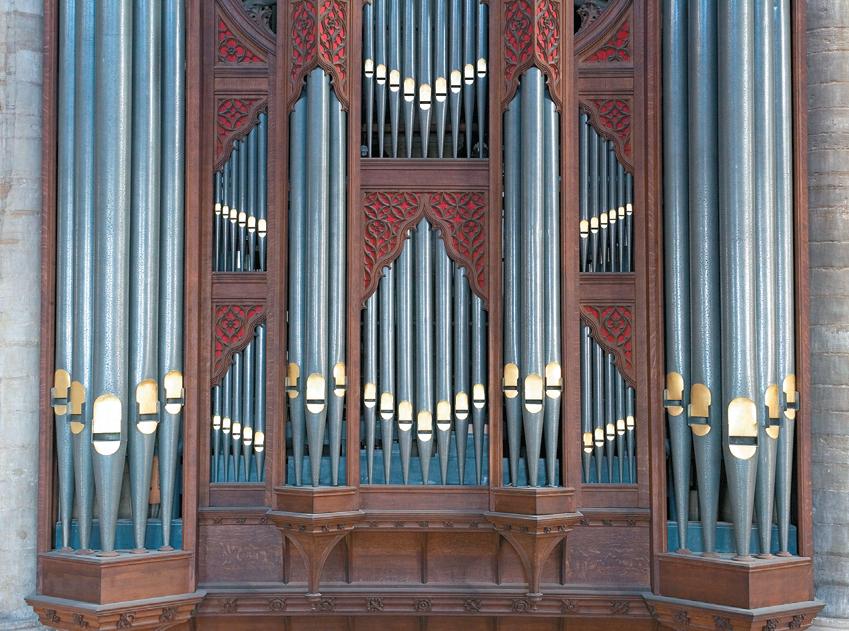

Cathedral Music 47
‘With the organ restored, the music better resourced than previously, and the cathedral hoping to welcome a new Dean, things are moving which will enable this growth.
P3103 CM OCTOBER 06 27/10/06 14:02 Page 47
’
2006 ReportFestivals Summer
It is heartening to report a common trend among the three festivals I attended, which amounts to a significant emphasis on the participation of young performers. To the members of organisations like FCM, largely funded by the grey pound, this has to be good news. In FCM there is great concern that we have an ageing membership, whose hair lacks colour or has disappeared!
Spitalfields Festival June 5th – 23rd
This hugely diverse and enterprising festival presented its 30th summer season. Jonathan Dove, the composer who has developed its eclectic programme for the last five years and taken it ever more out into the community, now stands down as artistic director. He leaves Spitalfields in very good shape: his own festival commission On Spital Fields, described as a ‘community cantata’, won the Royal Philharmonic Society’s Music Award for Education and the New Music Commission Fund is now two-thirds towards its target of £200.000. Under Dove, Spitalfields has continued and extended its policy of yearround outreach, involving children from schools across the borough of Tower Hamlets in musical performance, which makes it much more than a mere 19-day festival. Even so, the Festival itself offered 53 events in 11 venues and drew audiences totalling 8,000.
The festival was actually started to drive forward the restoration of Christ Church, Hawksmoor’s masterpiece in the centre of Spitalfields, which provides an inspiring setting for concerts, although fewer of these were actually held there in 2006 because, now the restoration is complete, the church has become more expensive to hire. However, it can now fulfil its primary function of presenting the opus Dei in a wonderful setting. One task remains: to restore the very fine Richard Bridge organ of 1735, reputedly his finest. Bridge was a builder highly esteemed by none other than Handel. Restoration is already underway in the workshops of William Drake of Plymouth.
This year I went to two concerts in Christ Church: the first was given a cappella by the Choir of Westminster Cathedral, under its director, Martin Baker. It was of exceptionally high quality, opening with Victoria’s Missa pro defunctis, a Requiem of great intensity, of the kind in which this choir excels. I noted the restrained intensity, subtly graded dynamics and carefully
moulded phrasing of the performance; no other choir has as much experience of singing Renaissance polyphony, and this shows in the style and authority of their singing. The second work was the Mass in G minor by Vaughan-Williams, rendered with the warmer, more lyrical English tone, that it calls for. The stylistic adjustment presented no problem to this virtuoso choir, now claiming it sings Choral Mass more often than any other in the world. The final work was Britten’s Hymn to St Cecilia sung in a notably more delicate style, giving full value to WH Auden’s incomparable words.
The other concert that drew me was the final one given, as last year, by the Baroque Orchestra and Chorus of the Royal Academy of Music, with a strong quartet of soloists. The work was Handel’s rarely done oratorio L’Allegro, il Penseroso ed il Moderato, its libretto based on two poems by John Milton. The work is quite long and complicated by the need to respond to the contrasting moods of each: jollity versus thoughtfulness, providing Handel with a formidable test of his inventive genius – the result was yet another of his musical masterpieces. William Christie controlled his semi-professional forces with a calm assurance and secured a very satisfying performance. There was some inequality in the vocal qualities of the soloists but there was fine coloratura from the two sopranos (one in duet with a brilliant obbligato flute), a stylish organ solo, nice string playing and overall solid ensemble. The use of a student company is another example of this festival giving young musicians opportunity, which was certainly vindicated here.
The incoming artistic director, Diana Burrell will present her first programme at the Winter Festival in December, which runs from 11th to 19th and includes a performance of Berlioz’s masterpiece L’Enfance du Christ. Full details from www.spitalfieldsfestival.org.uk
Southern Cathedrals Festival – Salisbury July 19th – 23rd
This festival rotates annually between Chichester, Winchester and Salisbury, which was the 2006 venue. Salisbury Cathedral’s new Director of Music, David Halls, was directing his first SCF and a glance at the programme indicated that he had seized the opportunity to provide a platform for young musicians at the festival. Having been at the cathedral since 1985, he has first-hand knowledge of the wealth of talented choristers who have passed through the Cathedral
School and found it possible to construct three concerts using home-grown performers for the Thursday, Friday and Saturday evenings. These were fitted in between Evensong and the main concert and given in the School’s elegant music room, with its coved ceiling providing ideal acoustics for chamber music.
The first featured four highly talented artists: the brilliant oboist Patrick Flanaghan (22), his sister Katie (19), plucking rich sonorities from her Aurora harp and the violinist Katie
Cathedral Music 48
Roger Tucker
P3103 CM OCTOBER 06 27/10/06 14:02 Page 48
Littlemore(17), who, together with the pianist, John Reid, gave a dazzling performance of the César Franck Sonata in A, which provided a fitting climax to the first of these exciting new events.
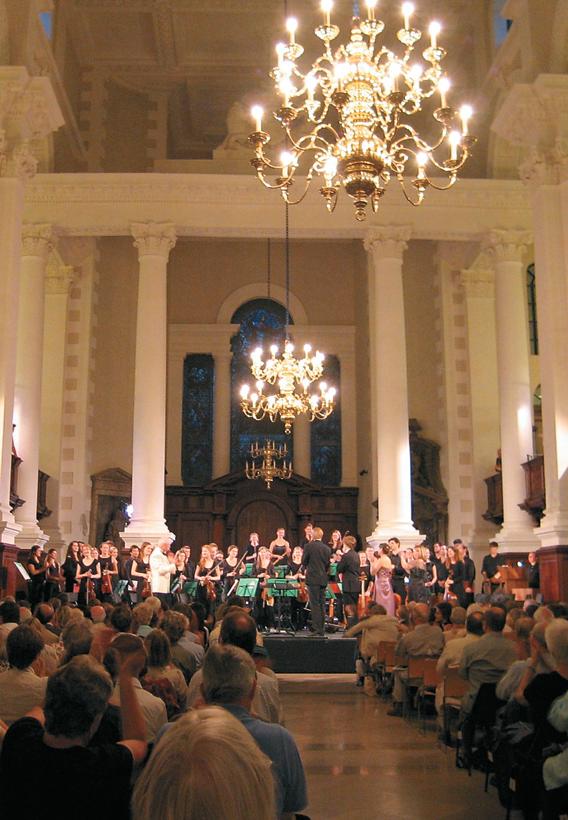
The second ‘Youth in Music’ concert featured Andrew Littlemore, horn, who displayed fine artistry in four works, including a Bach Suite, but seemed to be having embouchure problems. The last of the series was an excellent recital by Amy Carson (soprano) of songs by Schumann, Strauss and Mozart. Again the virtuosic John Reid (both ex-chorister and ex-organ scholar at the Cathedral) accompanied. His rendering of the very diverse piano parts in all three concerts was a hugely impressive tour de force. He deserves a recital to himself.
The first of the evening concerts in the Cathedral on Wednesday night was another testament to the talent nurtured by this musical power house in the middle of Salisbury Plain. It was given by Sarum Voices, a local adult choir, which was first convened to replace a visiting choir that cancelled its appearance and after this ad hoc start it has gone from strength to strength. The opening work, Bernstein’s Chichester Psalms, was premiered at the 1965 SCF in Chichester, having been commissioned by that cathedral’s legendary dean and patron of the arts, Walter Hussey. The version used at this concert had organ accompaniment (Cathy Lamb), with harp (Katie Flanaghan) and percussion (Richard Baker). The harp also featured in Janácek’s Otce nás, again with organ, a later version of this setting of the Lord’s Prayer provided with a wonderfully colourful accompaniment. The last work, the Requiem by Sam Hanson, was written in memory of his teacher Alan Harwood, who died in 2003. Sam was Organ Scholar of Salisbury Cathedral in 2004/5 and completed the work by the end of his term there. He declares both the Faure and Durufle Requiems to have been his inspirational models for composing a highly original work, which has been very well received. It is in a powerfully idiomatic style, with an exciting organ accompaniment, played by the composer at this second performance.
The third concert on Thursday A Glorious Tradition was in the afternoon and offered an inspired sequence of choral music by Finzi, Bainton, Hadley, Byrd, Palestrina, Purcell, Weelkes, Brahms, Howells, Bruckner and Stanford, all splendidly sung by the boy choristers and lay vicars of the three cathedrals, conducted in turn by their three directors. I did not attend David Briggs’s organ concert in the evening but heard many enthusiastic reports of it. On Friday night, under the evocative title Far Beyond the Stars, there was another Meditation in words
and music in the Salisbury manner. This is very much the creation of the Precentor, Jeremy Davies, who, together with Sonia Woolley spoke the wonderful selection of prose and poetry that interspersed the music: anthems and motets by Parry, Bull, Gibbons, Stanford, Bairstow, Harris and finally a Holst setting of the Nunc Dimittis. The girl choristers of Salisbury and Winchester provided the top line with the lay vicars of the three cathedrals making up the choir. Daniel Cook also played two Messiaen organ interludes. I was quite transported by the timeless tranquillity of the whole sequence, which to my amazement had lasted 1hr 30mins; it could have run much longer for me, it was quite spell-binding.
One extramural event, not to be missed, which I attended in St Martin’s Church, was a Choral Masterclass given by the inimitable Barry Rose with Salisbury and Chichester boy choristers. Exactly forty-five years since he formed the new cathedral choir at Guildford, Barry is more refreshingly candid than ever. His uniquely direct style of training boys to sing is fascinating and infectious, involving the audience as well.
The final concert was given by the boy choristers and lay vicars of all three cathedrals, with the splendid Sarum Orchestra, conducted in turn by the three directors of music. Alan Thurlow (Chichester) obtained a majestic rendering of Handel’s coronation anthem Zadok the Priest, notable for the strong attack of the choir and fine orchestral support. David Halls also drew a magical opening from the players in the Alto Rhapsody by Brahms. Notably golden was the tone of Andrew Knight’s oboe solo. Susan Mackenzie-Park sang the solo part with great insight, achieving a confident serenity at the entry of the chorus. A second Handel Coronation Anthem My heart is inditing , conducted by Andrew Lumsden (Winchester), received a highly expressive rendition, crowned by two excellent Salisbury treble soloists. The finale to the concert and indeed the festival, was a vibrant performance of Mozart’s Requiem conducted by David Halls. In a year when so many mixed adult choirs have sung K626 it was a joy to hear it done by traditional cathedral forces, with a superb top line of boy trebles. (I was to hear another such performance at the Three Choirs Festival in Hereford) The soloists were assured and well-projected, as was the chorus. The Sarum Orchestra gave very polished instrumental support throughout, the brass being notably sonorous.
What sets the seal on Salisbury Cathedral as a musical powerhouse is that its bishop, David Stancliffe, is an accomplished musician, who directed his own Consort in St
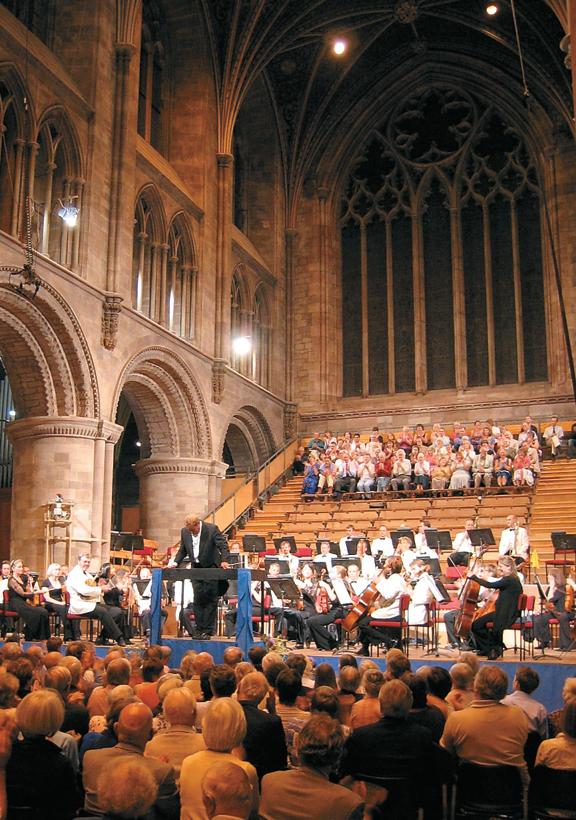

Cathedral Music 49
P3103 CM OCTOBER 06 27/10/06 14:02 Page 49
left to right: Katie Littlemore, John Reid, Patrick Flanaghan, Katie Flanaghan, Andrew Littlemore)
Martin’s Church on Saturday morning, performing three Bach Cantatas: Nos. 182, 150 and 131.
I have no space to evaluate the ten choral services I attended in the Cathedral but the daily offices provide the sequence which illuminates the SCF spiritually and makes it so special: always sung to the highest standards and conducted by confident clergy, who confirm the links between liturgy and music in the Anglican tradition, with an input from French and other Catholic church
music. As there was no late-night Fringe revue this year the lay clerks were free to sing Compline in the great candle-lit space of the cathedral on two evenings, which I prefer as an ending to the day at a festival of this kind. It certainly has a growing international reputation as one of the leading festivals of cathedral music, with visitors from far and wide, who return each year and are full of praise for the performance standards. David Halls and the Salisbury team deserve the highest praise for SCF 2006.
The 279th Three Choirs Festival – Hereford August 4th – 11th
Not all aficionados appreciate that the three phases of this festival vary in length by one day: The longest is Gloucester, with eight days, Worcester has seven and Hereford has six. This means that the 2006 festival is, on the calendar, the shortest but, thanks to the planning of the Festival Committee, in particular Artistic Director Geraint Bowen and Administrator Philip Dickinson, fifty events were fitted in. It is interesting to note the new chairman of the Hereford festival, Jeremy Wilding, was a chorister at the Cathedral thirty years ago. He speaks of the thrill of that experience and is now able to pay back in a very tangible way; he certainly circulated and talked to people, which helped create the most friendly atmosphere I can remember at any festival.
So what about the programme? It is clearly impossible to cover fifty events, so I will only look at the concerts in the Cathedral. It was a masterstroke to choose Elgar’s final oratorio
The Kingdom for the opening concert on the Sunday evening. Geraint Bowen drew from the Philharmonia Orchestra (in residence for the whole week) a powerful and confident sound in the Prelude and in each chorus entry.
The soloists have a crucial role, which was well realised, as was the all-important integration with the Festival Chorus in their role as ‘The People’. It cannot be denied that this is a flawed work, with a lack of development in its thematic material, bland cadence figures and unadventurous harmony but there is no doubt that when the work is delivered with the conviction and musical mastery we heard on this occasion it becomes a very powerful and moving experience, above all, enjoyable. On the Monday night, the Philharmonia and the Festival Chorus were conducted by Adrian Lucas, opening with Kodály’s Budavári Te Deum, a richly inventive and dramatic work.This very English festival chorus captured its highly idiomatic, Hungarian spirit brilliantly. John McCabe’s orchestral song cycle Notturni ed Alba was commissioned for the 1970 Hereford Three Choirs Festival and emerged as a darkly evocative work, which left me wanting to hear it again. The Schubert Mass in A flat, not one of his greatest, was given a most persuasive rendering, with four wellmatched soloists delivering their parts with great finesse.
I took time out of the Cathedral to hear Adrian Partington’s illustrated talk about Elgar performance styles, which contrasted today’s approach with the composer’s own. The best known being the Edwardian use of portamento in the string playing. This drew a very large audience and was fascinating stuff. Tuesday night’s concert offered a significant novelty: Schumann’s Das Paradies und die Peri, a secular oratorio based on a poem of Thomas Moore. This is the kind of exotic, quasi-religious theme, which leaves me as cold as the kindred Arabian Nights tales but I recognise that it inspired Schumann to produce a very beautiful score of considerable length, which Richard Hickox persuaded us, right from its mysterious, lyrical introduction was a work worth doing. The idiom was rather bland but full of colour, with its seven soloists and a really stunning performance, which made an overpowering impression. I made notes: ‘glittering’, ‘superbly confident chorus’, ‘exultant, full-hearted, heroic’, ‘strongly radiant’.etc. It is a long work, in three parts, with twenty-six numbers –not one to sit through often live but nice to have on CD.
On Wednesday afternoon came a Mozart concert, given by the Three Cathedral Choirs and the Cheltenham-based Corelli Orchestra, which uses period instruments. The ‘Figaro’ overture and Symphony No 40 in G minor were sympathetically conducted by founder-director Warwick Cole, then came the Requiem directed by Geraint Bowen. I was initially gripped by the harddriven tempo and waited for a contrast but when it didn’t come, for me the reading acquired a relentless quality, lacking in majesty and awe in the right places. The soloists were very fine, except for the soprano sounding ill-at-ease at the start. The combined choirs made a wonderful sound and their singing was an absolute delight, especially the boy trebles, who have a very demanding part to sustain right to the end.
There was an even greater contribution from young musicians on Thursday morning when the National Youth Orchestra of Wales blew in from Cardiff to give a magnificent performance of Mahler’s Symphony No 5. Again I wrote: ‘stupendously heroic brass, high quality from the fiddles’, then ‘horns lost it in final allegro giocoso’. The NYOW’s conductor, Owain Arwel Hughes, should be justly proud of his players’ overall brilliance, but his is the credit for the masterly interpretation. The evening concert under Andrew Nethsingha offered a delightful mix of Finzi and Vaughan Williams. The latter’s Dives and Lazarus and Mystical Songs came off well. Finzi‘s God is gone up always makes a stirring opener, as on this occasion but his masterpiece Dies Natalis, needs a soloist with an artless, unforced style, which expresses the child’s innocent wonder at the strangeness of the world into which he has been born. James Gilchrist’s tense, operatic style was quite unsympathetic to the delicacy of Thomas Traherne’s poetry, failing to project its tenderness and rapture, the inspiration for the music.
Friday morning put the cathedral organ in the spotlight, in the hands of Ben van Oosten from the Hague, with a programme of Mozart, Schumann and Franck’s masterpiece Grande Pièce Symphonique. The playing was impeccable and so musical, the organ just magnificent. The final concert, directed by Geraint Bowen was full of vitality, with four early twentieth century works: Ravel’s Mother Goose Suite was delicately controlled and sparkling, as was Stravinsky’s Pulcinella Suite. The choral finale, Walton’s Belshazzar’s Feast was a great choice to ring down the festival curtain but it was not driven hard enough to achieve the customary opening dramatic impact. Otherwise a great rendition to end a concert, which broke away from the traditional Three Choirs pattern of doing a single large-scale sacred work as the finale.
For me this was one of the most satisfying festivals encountered anywhere, achieving a very high quality of both performance and planning. Again, I have not space to do justice to the wonderful sequence of choral services, always so uplifting at Three Choirs but I must single out the Festival Opening Service, with the Festival Chorus and the Philharmonia Orchestra enriching Stanford in A and Ireland’s Greater Love, the three meditations and underpinning it all the superb playing of Peter Dyke at the organ, as throughout the festival. His was a major contribution to its success but always as part of the so-professional teamwork.
Cathedral Music 50
P3103 CM OCTOBER 06 27/10/06 14:02 Page 50
&NotesQueries
Stephen Green of Ryde in the Isle of Wight asks: ‘The BCP prescribes two alternatives to the Magnificat and Nunc Dimittis. They are beautiful canticles, Cantate Domino and Deus Misereatur. Why are they so seldom sung these days?’
C ATHEDRAL M USIC asked regular contributor Revd James Saunders to give the answer.
The BCP allows Cantate Domino (Psalm 98) and Deus Misereatur (Psalm 67) to be used in place of the more familiar Magnificat and Nunc Dimittis at Evensong. The parish church where I sang as a boy chorister used the alternatives on Sundays in Lent, but your correspondent is right: very few churches now do so.
There is no ‘official’ reason for the neglect; in fact, the reprint of BCP Evening Prayer in Common Worship retains the original rubrics which permit their use. The real question is why so few places take up the rubrics’ permission. A few ideas follow below, of which the first two are probably the most significant.
People stick to what is familiar. The ‘Mag and Nunc’ are so well-known and well-loved that for many people “it wouldn’t be Evensong without them”! Alongside a congregation’s love of the familiar, sits the unfamiliarity of many clergy, readers and directors of music with the BCP. Training in its use and possibilities is minimal, and few of us read liturgical rubrics for a hobby! Many parish priests and organists will be unaware that Cantate Domino or Deus Misereatur are possibilities.
There are very few choral settings of Cantate Domino and Deus Misereatur, in comparison with the Magnificat and Nunc Dimittis. This makes it hard for cathedrals and parishes with a choral tradition to use them regularly as part of their cycle of worship. Plainchant or Anglican chant might be used but many people would feel that cathedral evensong lost something without fully choral Canticles.
Magnificat and Nunc Dimittis reflect the liturgical origins of Evening Prayer better than their alternatives. Magnificat was an integral element of most orders of the Evening Office in the early centuries of the Western Church. Nunc Dimittis, similarly, became an almost universal feature of the last Office of the day, there being an obvious link between Simeon’s praise of God as he prepared to die and the praise of worshippers preparing for sleep. When Thomas Cranmer composed BCP Evening Prayer, he drew heavily on the Roman Catholic offices which had inherited this ancient Western tradition. He took Magnificat from Vespers and Nunc Dimittis from Compline. Some people will appreciate both the link with ancient tradition and the ecumenical significance of praying the same Canticles as the Roman Catholic Church.
Some editions of the BCP do not print Cantate Domino and Deus Misereatur in the main text of Evening Prayer – just the rubric referring people to Psalms 98 and 67. Having to turn backwards and forwards in the book does not encourage their use. Some people may even grumble that they have sung the psalm already, and ask why they have to sing two more!
Readers of this column who would like to see Cantate Domino and Deus Misereatur undergo a revival might like to write in with details of any choral settings they have come across.
Stephen Darlington on why he chose to commission a setting of the CANTATE DOMINO from Robert Saxton for Christ Church, Oxford
A glance at publishers’ newsletters and magazine reviews reveals that church music is a popular field for contemporary composers. It is encouraging to see such lively activity across a wide range of styles, not least amongst the large group of excellent young composers emerging from colleges and universities. Over the past twenty-five years I have been in the fortunate position of being involved in commissioning music from many wonderful composers including John Tavener, William Mathias, Edward Harper, Judith Weir, Howard Goodall, Francis Grier and younger composers such as Gabriel Jackson. Imagine my delight when Robert Saxton arrived as tutorial fellow and university lecturer at Worcester College, Oxford in 1999 and expressed enthusiasm to work closely with the choir at Christ Church on a series of commissioned works over a period of several years.
The idea of building up a relationship with a composer by commissioning more than a single work has been very successful in the fields of orchestral and chamber music, and there are various composer-in-residence schemes which have enabled composers to explore their creativity in a supportive environment. Of course, in cathedrals there are many cathedral organists who are also accomplished composers, particularly adept at producing Gebrauchsmusik, perfectly suited to the choirs they know so well. The attraction of working with Robert Saxton lay in his multi-faceted background, not to mention the large body of wonderful music he has already written. Here is a composer who is uncompromising in his pursuit of truth: he is a profoundly spiritual person with strong Jewish roots, and with a staggering intellectual curiosity. He explores the disciplines of philosophy and mathematics in his music, creating a unique musical language capable of extraordinary expressive power. As a composer known for opera, orchestral and chamber music, Robert has written relatively little choral music on a small scale, hence his own excitement about the Christ Church project.
Amongst all the texts we discussed, Robert was particularly drawn to the Alternative Canticles. The 1662 Prayer Book provides for alternatives to the Magnificat and Nunc Dimittis: the Cantate Domino (Psalm 98) and Deus Misereatur (Psalm 67). There are memorable settings of these texts by Henry Purcell, sung regularly at Christ Church. Throughout the gestation of the pieces, Robert kept me in touch with sketches and came to hear the choir on several occasions, even experimenting with different timbres in rehearsal. The dry and revealing acoustic at Christ Church is particularly suited to the music of Taverner, Tallis and Byrd, and Robert’s affinity with this type of music is striking in the final composition.
The settings were first performed together last November and recorded by the BBC. They are a cappella works, scored for fivepart choir with divided trebles. The musical language is linear with closely overlapping parts, governed by imaginative, concise structures. By using such economy of means, the composer achieves remarkable transparency, striking to the heart of the simplicity of the psalmist’s message. Robert wears his technical skill with an almost breathtaking lightness of touch and these are marvellous pieces. They are already firmly established in the Christ Church repertoire and I can’t wait until our next collaboration which starts this year.
Cathedral Music 51
Robert Saxton’s Alternative Canticles are published by University of York Music Press. Tel. 01904-432434]
P3103 CM OCTOBER 06 27/10/06 14:02 Page 51
All readers whose letters are published will receive a copy of FCM CD O How Glorious a compilation of cathedral music from the Priory Records catalogue. Letters may be shortened for publication.
Letters
Edward Gill, Cardiff.
Dear Sir: Although for most of my life, I have been a dedicated enthusiast of all church music from the humble village church to our most majestic cathedrals, I am only a recent subscriber to CATHEDRAL MUSIC. How, I wonder, could we have avoided each other for so many years? As a new subscriber I feel I should perhaps digest a few more copies of this excellent magazine before venturing into its correspondence columns. But perhaps I might dare to think that my long love affair with church music is such as to qualify me to write a few lines.
I was prompted to do this by BBC Radio3’s programme The Choir on 23rd September, which celebrated eighty years of broadcasting Choral Evensong In this celebratory programme, Aled Jones, Barry Rose and Stephen Shipley recalled some of the vintage
transmissions as well as a few of the unforeseen pitfalls that can sometimes await the production team. How unfortunate it was that Dr Bernard Rose’s final broadcast before retiring from Magdalen College, Oxford, had to be abandoned due to technical problems.
There was also the dispute with the Musicians’ Union in 1962 that caused the BBC to substitute a commercial recording of Evensong made in the 1950s by the choir of King’s College, Cambridge, directed by Boris Ord. Having listened to a brief excerpt of this recording in The Choir, I was grateful for the Musicians’ Union’s militancy in forcing its use. The choir, the organ and baritone John Walker’s singing of the Nunc Dimittis from Stanford’s Evening Service were quite sublime and I look forward to hearing it broadcast in full on the 25th October as part of the 80th Anniversary commemorations. This prompted me to recall my own special memory of a broadcast of Choral Evensong some years ago, not of a technical problem but of an announcer’s faux pas when he or she informed us that the service would be sung to “Plain Bird Song”.
Dr Karl Moyer, Lancaster PA, USA
Dear Sir: Thanks for your article on The English Hymnal. In my humble opinion, of the more amazing items therein is No. 313, Holy God, We Show Forth Here with music from the opening scene of Richard Wagner’s Die Meistersinger von Nürnberg and text by Percy Dearmer himself.
I’ve wondered how often this hymn is used, whether as choir or as congregational fare. In particular do I wonder if anyone sees fit to make it into what, in Bach repertoire, one sometimes calls an ‘extended chorale,’ using Wagner’s interludes with all their Leitmotive in the manner of Bach’s interludes between chorale phrases.
All general points and comments welcomed. Please send letters by March 1st 2007 to:
The Editor, 21 Belle Vue Terrace, RIPON, North Yorkshire HG4 2QS Fax: 08700 941 819
ajpalmer@lineone.net
the chair of St Augustine at Canterbury. David, the longest-serving cathedral organist in the UK, is making good progress in recovering from a stroke. Together with Hazel they have run an exhaustive programme of music at Brecon. CATHEDRAL MUSIC offers its congratulations on the presentation of this prestigious award to this well-loved couple.
GOOD NEWS FOR TEWKESBURY ABBEY
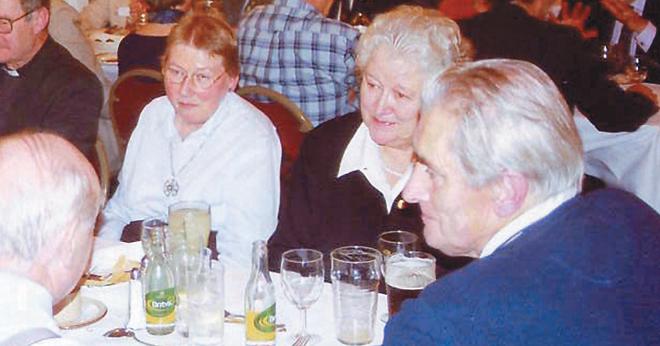
‘WELL DONE, GOOD AND FAITHFUL SERVANTS’
Husband and wife team at Brecon Cathedral, David and Hazel Gedge, who are both in their 40th year as Organist & Choirmaster and Assistant Organist respectively, have both been awarded the Cross of St Augustine. They received the awards from The Archbishop of Canterbury, Dr Rowan Williams, at a ceremony in the Chapel at Lambeth Palace on 31st October. The award, is the gift of the Archbishop, to those who have rendered outstanding service to the Church and the wider community and numbers only 10 or 12 recipients each year. The Cross takes the form of a circular medallion bearing a replica of the 8th century Cross of Canterbury and on the reverse is an engraving of
Following the report in the last edition of CATHEDRAL MUSIC it is heartening to hear that Tewkesbury Abbey has had some good news, although arising out of the sad death of former organist Michael Peterson. Mr Peterson left a large bequest: his Tewkesbury farmhouse, garden and a surrounding apple orchard worth £305,000 in total to the Abbey. He also left £400,000 to the Abbey School Choral Scholarship Fund. We understand that according to Mr Peterson’s will, the proceeds from the sale of his property must go towards the maintenance and upkeep of the musical needs of the abbey, including its organs, organists or choir. The former Abbey School Choir choristers have been rescued and found places at Dean Close Preparatory School, Cheltenham, and will be known as the Tewkesbury Abbey Scholar Cantorum. Benjamin Nicholas will remain the director of the choir, which will continue to sing Evensong in the Abbey initially on Monday, Tuesday and Thursday at the new time of 5:30pm. See advertisement on page 35.
Cathedral Music 52
NEWSBITE News from Choirs and Places where they sing P3103 CM OCTOBER 06 27/10/06 14:02 Page 52

P3103 CM OCTOBER 06 27/10/06 14:02 Page 53
Book & Music Reviews SHEET MUSIC
CHICHESTER SERVICE (EVENING CANTICLES IN F)
Stanley Vann
SATB (div.) & Organ
Banks Music Publications ECS 465 £2.10
One of the finest cathedral choirs by reputation has a fine new setting of the evening canticles from the pen of former Peterborough organist Stanley Vann. There are divisions in vocal parts at various points (the Magnificat opens with SSAA) as well as some unison passages and some interesting grace notes in the organ part. A solo reed (eg Tuba) is required. It is very well typeset by Laser Music Ltd.
I WILL LIFT UP MINE EYES UNTO THE HILLS
Ian Hare
SATB & Organ
Banks Music Publications ECS 475 £1.45
Ian Hare has written an easy and effective setting of Psalm 121 for his choral society in Keswick. Scored for SATB (no divisions) and organ, it begins with a lilting melody for the sopranos and features widely spaced chords later in the piece as well as a short passage for ATB. It is 54 bars long.
THE ROAD THEY TRAVELLED
Nicholas Simpson
SATB unaccompanied
Banks Music Publications ECS 464 £1.20
Nicholas Simpson’s setting of the carol The road they travelled (recalling Mary and Joseph’s journey to Bethlehem) has no time signature due to the frequent change to the number of quavers in the bar. There doesn’t seem to be a pattern to this, which could make learning it trickier for some choirs. Each of the three verses has different harmonies for added interest, the tune always being in the soprano.
THE SHEPHERDS’ CRADLE SONG
Vernon Hoyle
SATB & accompaniment
Banks Music Publications ECS 473 £1.45
This is a good tune and a simple setting of a German lullaby in 3/4 time which would be suitable for many parish choirs.
A CAROL OF GIFTS
Christopher Rathbone
SATB & Organ
Banks Music Publications ECS 469 £1.45
Christopher Rathbone’s music is never dull. He has an inventive harmonic and melodic style. Rhythm is also key, and this particular setting might challenge some choirs in this respect but persistence will be rewarded. Once you’ve got the hang of the style, the rest is easy. The organ accompaniment is one to practice before the day, but worth it overall! Very clear typesetting is by Barry Jordan.
SILENT NIGHT Arr. David Sanger
SATB unaccompanied
Banks Music Publications ECS 480 60p
David Sanger is well-known for teaching generations of star quality organists but he is also making a name for himself as a composer and arranger. This is a simple arrangement of Franz Gruber’s immortal carol with an unusual coda to verse three, whereby the basses leap from bottom F to the E a seventh above, so the tenors, who have the tune can end on the tonic (C).
SIXTH SONATA FOR ORGAN
Francis Jackson
Banks Music Publications 14047 £8.50
Dr Jackson’s Op 148 was first performed by Graham Barber at St Bartholomew’s Armley, in May 2004. I was glad to be present, and even more so when the score landed on my doorstep! It is a concise work consisting of three movements in 31 pages, with, as always, plenty of interest for the performer (lots for the left hand) and the listener. I would like to hear it again, which says a great deal for the quality of the work. Perhaps a recording is imminent?
Stephen Power
BOOK REVIEWS
A COUNTRY CATHEDRAL ORGANIST LOOKS BACK
David Gedge. Serendipity ISBN 1-84394-186-6 281pp
£12.95 plus £2.95 p&p available from the author Garth Cottage, 29 Pendre, Brecon LD3 9EA
The country cathedral referred to in the title is Brecon, where David Gedge has been Organist and Choir Master since 1966. The son of a clergyman, he was brought up in a tough area in the diocese of Southwark and as a chorister at the Cathedral it became his second home. He sang in Westminster Abbey at the Coronation of Queen Elizabeth II. As a young man he joined the London Junior Orchestra as a viola player where non other than Gerard Hoffnung played the tuba which guaranteed countless laughs at rehearsals. David became organist of Primrose Hill, North London and at the Royal Academy of Music was taught by C. H. Trevor, who, he says, “was a teacher second-to-none”. Among others with whom he rubbed shoulders were Simon Preston, Barry Rose and David Robinson, and he numbered Richard Marlow of Trinity College Cambridge, among his childhood friends. He moved to Selby Abbey, having been interviewed for the job by no less a person than Dr Francis Jackson, who commented on his playing of Buxtehude’s Prelude, Fugue and Chaconne in such a warm way. This, says David, showed why he is so greatly loved and revered. David eventually moved to Brecon Cathedral where, at the time, he was the youngest cathedral organist in England and Wales and where he now also has the distinction of being the longest-serving organist in one cathedral. Next year will see him retire along with his wife Hazel, Assistant Organist at Brecon. A man with a great social conscience, his book is written in a style to be expected from one with the warmth and genuine humility of David Gedge, and is full of humour and amusing anecdotes. It is worth reading simply for the number of well-known, fascinating and sometimes eccentric characters he has mixed with during his long musical career many of whom have gone on to great things. This book takes us from the year of his birth, 1939 to 1978 and a second volume is due out soon.
Trevor Godfrey
BENJAMIN BRITTEN THE SPIRITUAL DIMENSION
Graham Elliott. Oxford Studies in British Church Music. ISBN 0-19-816258-8
Originally the author’s doctoral thesis, this book sets out to prove that the ‘spiritual dimension’ of the title is specifically Christian, and that it is as formative an influence on the music of Britten as the more frequently
Cathedral Music 54
P3103 CM OCTOBER 06 27/10/06 14:02 Page 54
instanced ones of homosexuality and pacifism. A quotation from Peter Pears that Britten was ‘an agnostic with a great love of Jesus Christ’ is given as the impetus for writing both the thesis and the book. Because of its origin there are multiple cross-references all meticulously attributed, which makes for a first class thesis but slightly inhibits the flow of a book. The musical examples however, which are often unusual choices, maintain their place both as part of the argument and in themselves. Of particular interest are the plainsong related melodic lines so central to the composer’s music, although one might question this as evidence of specifically Christian conviction rather than musical invention. Chapter 7 is concerned with the Liturgical Music where revelations include the unknown setting of Venite, harbinger of an unfulfilled set of service settings with psalm chants. Unfortunately the chapter is flawed by no less than seven wrongly attributed music examples which should have been corrected at proofreading.
Dr Elliott’s unquestionable musical perception illuminates the whole volume most compellingly in the descriptions of the actual music where our attention is drawn to a multitude of wonderful detail, and it is the music which one remembers and wants to hear again that is the justification in itself for writing yet another book about Britten’s inspirational ethos. Read it.
Peter Moorse
STRENGTHEN FOR SERVICE
100 years of the English Hymnal 1906 -2006.
Edited Alan Luff. Canterbury Press ISBN 1-85311-662-9 £19.99
Following on from Dean Tavinor’s excellent article in the last edition of this magazine charting the centenary of the English Hymnal, I am delighted to review this book for CATHEDRAL MUSIC. The editor, Alan Luff, has drawn together some excellent contributors to commemorate a century of one of the great landmarks on both the history of hymnody and the worship of the Church of England. No book on the subject would be complete without mention of Percy Dearmer, English Hymnal’s general editor and of course, Ralph Vaughan Williams, whose role was Music Editor. Donald Gray kicks off this retrospective with a look at the birth and background of the English Hymnal in a captivating account. He mentions how difficult it was to publish the book and how several diocesan bishops prohibited it and there are fascinating snippets from correspondence. This is a really interesting account of why the hymn-book was created (response to poor standard of Victorian hymns and a disastrous revision of Hymns Ancient and Modern in 1904.) Along the way there is a chapter by Alan Luff on the American contribution.
The stories will enthral many in these absorbing accounts. Ian Bradley, a writer on hymns, looks at Vaughan Williams’s chamber of horrors and changing attitudes towards Victorian hymns. Michael Tavinor writes the introduction in which he says the title of the book Strengthen for Service powerfully makes the link between worship and daily life. ‘It is a title’, he writes, ‘which we hope not only characterises the way in which The English Hymnal has sought to serve church and liturgy during the past century but also expresses the hope that its contents will continue to serve, nourish and enrich the church of the future’. Hear! Hear! The Archbishop of Canterbury sums up The English Hymnal in his foreword ‘I hope that the vision that motivated it – a vision that felt pretty risky and unconventional at the time to many people – will go on stirring Anglican Christians for a good few centuries more.’A good read for all those who love hymns and a fine addition to the bookshelf.
Patrick Mayhew
NEW ENGLISH PRAISE A supplement to the New English Hymnal Full music edition Canterbury Press Full
ISBN 1-85311-724-2 £15; Melody ISBN1-85311-730-7 £9
music
This year sees the centenary of the English Hymnal as detailed by Dean Michael Tavinor in the last edition of CATHEDRAL MUSIC. In fact Dean Tavinor’s tune Tewkesbury Abbey appears at 617. This a supplement hence the hymns begin at number 600. I am glad to see that Lift high the cross is included.This supplement contains some great new hymns such as John Barnard’s tune Guiting Power (although lacking his descant) to Christ triumphant and Francis Jackson’s East Acklam and Martin How’s arrangement for Be Still for the presence of the Lord. Interesting tunes also appear from Canon Anthony Caesar and John Scott and words from Dean Robert Willis and Hilary Greenwood, There are hymns in this edition which can double up as small anthems for parish church choirs such as Hurford’s Litany to the Holy Spirit and Vaughan Williams’s The Call and Fairest Lord Jesus. Also contained in the pages of this book is a setting of the music for the Eucharist and a number of responsorial psalms and canticles which will be very useful for music ideas throughout the liturgical year. Of course, no review can pass without mention of one of the editors, Michael Fleming, whose contribution to hymnody is considerable – this edition is dedicated to his memory. In essence this hymn-book contains the best of the bunch from recent composers’ offerings. Many will find this book useful and indeed it is.
Ian Morgan
CD Reviews CHORAL
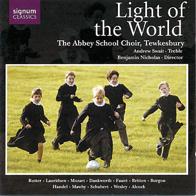
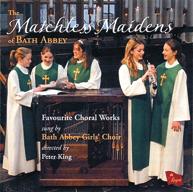
THE MATCHLESS MAIDENS OF BATH ABBEY
Bath Abbey Girls’ Choir.
Director: Peter King. Organ: Marcus Sealy. Harris King of Glory; Ireland Ex ore innocentium; Poulenc Litanies à la Vierge Noire; Fauré Tantum ergo; Franck Panis Angelicus; Mozart Agnus Dei (Krönungs Messe); Cornelius The Three Kings; Mendelssohn Laudate pueri;Lift thine eyes; Bach Seufzer Tränen; Handel Let the bright seraphim; Schubert Gott ist mein Hirt; Byrd An earthly tree; Britten Missa Brevis; Stanford A song of wisdom.
REGENT REGCD229 TT 69:55
There is just too much music for upper voices on this disc to comfortably listen from start to finish in one sitting. The singing has much to commend it to the public, and there are some lovely touches, such as the piano accompaniment in the Schubert Psalm 23, and the inclusion of other instruments in the accompaniment, which may make this recording stand out from others in this market. The choir lets itself down in the inconsistency of its pronunciation, which is particularly noticeable where the voices split into three parts in the Britten Missa Brevis. Confidence, however, is not lacking and the enjoyment heard in their voices is a blessing to those who support FCM and similar foundations. Marcus Sealy deserves a biographical note in the booklet, as his accompaniments on the Abbey organs and the piano are incredibly supportive (not to drown the voices!) and colourful – the sort of accompaniments all organists aspire to produce.
Stephen Power
LIGHT OF THE WORLD
The Abbey School Choir, Tewkesbury.
Director: Benjamin Nicholas, Organ: Carleton Etherington.
Treble: Andrew Swait.
Handel Eternal source of light;How beautiful are the feet; Alcock Sanctus; Burgon Nunc Dimittis; Dankworth Light of the world; Mendelssohn I waited for the Lord; Wesley Blessed be the God and Father; Schubert Ave Maria; Schumann The Angels’ Goodnight; Parry Long since in Egypt’s plenteous land; Britten Balulalow; This little babe; Rutter The Lord bless you and keep you; Fauré Pie Jesu; Mawby Ave verum corpus; Mozart Ave verum; Lauridsen Ubi caritas et amor; Rutter A Gaelic Blessing.

SIGNUM CLASSICS SIGCD068 TT 74:08
HEAVEN SENT
The Abbey School Choir, Tewkesbury.
Director: Benjamin Nicholas, Organ Carleton Etherington.
Bairstow Blessed City; Tallis Mihi autem nimis; Sheppard Libera Nos; Bainton And I saw a new heaven; Macmillan A New Song; Mendelssohn Hear my prayer; Geistliches Lied; Byrd Sing joyfully; Brahms How lovely are thy dwellings; Fauré Pie Jesu; Howells Te Deum; Stanford The Blue Bird.
REGENT REGCD177 TT 67:19
These two CDs are issued at a time when Tewkesbury Abbey choristers need
Cathedral Music 55
P3103 CM OCTOBER 06 27/10/06 14:02 Page 55
our support. Light of the World contains some evergreens, a number of which are sung by treble Andrew Swait, who is the soloist on no fewer than 13 out of a total of 21 tracks. Swait has a nice voice although he needs to control breathing. It was a mistake to end the disc with a solo boy singing Amazing Grace. A track of the full choir singing Wesley’s Blessed be the God and Father would have been a better choice rather than leaving it at track 7. Generally the programme needs to contain something with spark and not just more of the same. As to Heaven Sent there are some gems on this CD such as Howells’s Collegium Regale Te Deum, which is competently accompanied with good dynamics and sensitively sung. This choir sings with musicality, which is not always perfect but the repertoire is great.
Patrick Mayhew.
O HOW GLORIOUS IS THE KINGDOM
Director: Timothy Byram-Wigfield.
Organ: Roger Judd.
The Choir of St George’s Chapel, Windsor Castle. Parry I was glad; Brahms How lovely is thy dwelling place; Ouseley O saviour of the world; Balfour Gardiner Evening Hymn; Tallis O sacrum convivum; Bach Jesu Joy; Tye Salve Regina; Bairstow Blessed City; Franck Panis angelicus; Britten Jubilate Deo; Mendelssohn For he shall give his angels charge over thee; Rutter A Gaelic Blessing; Wood Hail gladdening light; Parratt The Whirlwind; Sheppard Libera nos; Harwood O how glorious is the Kingdom.
DELPHIAN DCD34048 TT 69:42
There’s a potpouri of cathedral music classics on this splendid disc which is well recorded by the engineers from the new label Delphian – a company to watch. The opening track, Parry’s perennial favourite I was glad, is given a full-bodied performance and sung with gusto. Roger Judd’s accompaniments are spirited in all the big favourites, such as Gardiner’s wonderful Evening Hymn and Bairstow’s great Blessed City. Intermingled are gems from Tallis and Tye, unaccompanied short anthems in which Timothy Bryam-Wigfield gets well-balanced singing from the men and a good tone from the boys. When I looked at the playlist I wondered if this disc of repertoire that has been recorded many, many times, would hold my attention. In fact it did and I enjoyed the performances from all musicians involved especially hearing one of my all time favourites Harwood’s O how glorious. There are two pieces on the disc which were written for the Chapel choir: Britten’s Jubilate and Parratt’s Whirlwind, sung at the quarterly Obit service when the Benefactors of the College of St George are remembered. On September 11 2006 the choir sang the piece at the British Memorial Garden in New York as part of the 5th anniversary commemorations of 9/11. The CD cover says ‘...a sumptuous programme of jewels from the anthem tradition …Under the luminous direction of Timothy ByramWigfield… and in the luxurious resonance of the ...Chapel, the choir resounds with exhilarating energy…’
Andrew Palmer
GOD SO LOVED THE WORLD A Passiontide Sequence.
The Chapel Choir of University College, Durham.
Director: David Jackson. Organ: Oliver Bond. Recorded in York Minster.
Stainer God so loved the world; Leighton Drop, drop slow tears; Bairstow The Lamentation; Jesus, grant me this, I pray; Farrant Call to remembrance; Duruflé Ubi caritas; Howells Like as the Hart; Tallis Salvator mundi; Bruckner Christus factus est; Sanders The Reproaches; Shephard Never weather beaten sail; Lotti Crucifixus; Brahms Geistliches Lied; Darke O brother man. LAMMAS LAMM 193D TT 60:37
A solo quartet begins ‘God so Loved the World’ from Stainer’s Crucifixion This particular group of young singers have issues with intonation, and the placement of the microphone seems to favour the tenors. The effect produced by the whole choir entering at the reprise is striking, however, I suspect the director should have erred on the side of caution and begun it with full choir. The tempo chosen for Call to remembrance is too much like a dirge, (this piece works at twice the speed) and there are ensemble issues in Ubi Caritas; the female altos in this work don’t do it for me I’m afraid. Sharp singing is evident in the soprano part in Salvator Mundi. It is a shame that these intonation and ensemble issues never really go away, and so, what
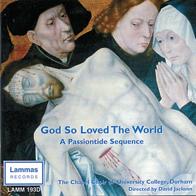
could have been a very special recording doesn’t really hit the spot. I did, however, enjoy O brother man by Harold Darke, which is a neglected work. Oliver Bond provides sensitive accompaniment on three tracks, and direction is by David Jackson, a former chorister at York Minster, where this recording has been made. The acoustics of this huge building can be problematic with singers trying too hard to fill the space, thus spoiling the blend. The concept and the programming should be commended, but I fear there are better recordings of many of these works already out there.
Stephen Power
RUTTER:
MASS OF THE CHILDREN
The Choir of Clare College, Cambridge. Farnham Youth Choir. Director: Timothy Brown. Soprano: Angharad Gruffydd-Jones. Baritone: Jeremy Huw Williams. Mass of the Children; Shadows; Wedding Canticle. NAXOS 8.557922 TT 66:45
The main piece on this recording is Rutter’s Mass of the Children, composed in 2002 and here for chamber ensemble and organ, mixed choir, children’s choir, soprano and baritone soloists. Timothy Brown conducts this unmistakable Rutter piece getting the best out of the singers with some decisive and accurate singing which has been prepared meticulously and thus brings a fresh spirit to this appealing work. There are two couplings Shadows a song cycle for baritone and guitar was written in 1979 and Welsh baritone Jeremy Huw Williams sings the songs well capturing the soul of the words. The final work is a Wedding Canticle composed as a present for Tim Brown in 2004 to mark his 25th anniversary as Director of Music at Clare College. It is unusual in that it is scored for choir, flute and guitar. The flute’s contribution weaving in and out of the singing is quite hypnotic along with the guitar accompaniment. Overall a well-recorded CD with much to commend.
 Cathryn Fogg
Cathryn Fogg
ETON CLOSE UP
Close Harmony with The Incognitos
Cole Porter Let’s do it (let’s fall in love);Ev’ry time we say goodbye; Gershwin I’ve got rhythm; They can’t take that away from me; Erskine Hawkins Tuxedo Junction; Lindsell Fever; Kern The way you look tonight; Underwood Misty; Armstrong What a wonderful world; Newman Short People; Gilkyson The bare necessities; Bartholomew Little innocent lamb;De animals; Trad Deep River; Aka Tombo; Joel And so it goes; Love/Wilson Good Vibrations
HERALD HAVPCS 317
In an attractively presented disc of close harmony classics from Eton College, the eight-piece all male vocal ensemble under their recently acquired title The Incognitos delight the ear with their advanced musicality and sheer sense of style. For a school vocal group their blend and ensemble are pretty nearly faultless, (although their intonation in Aka tombo is disappointing), and while some individual sounds are occasionally a little embryonic (but will no doubt improve with age) they are to be congratulated for their professional approach to the superb arrangements that they tackle. Highlights include I got rhythm, What a wonderful world and Good vibrations.
 David Truslove
David Truslove
INSPIRATION
The Choir of Canterbury Cathedral. Director: David Flood. Organ: Robert Patterson. Rodney Bennett Missa Brevis; Lauridsen Ubi caritas et Amor; Macmillan To my successor; Dove I am the day; Harris Bring us O Lord God; Strengthen ye the weak hands; Martin Justorum Animae; Ridout Litany; Tippett Plebs Angelica; Chilcott Irish Blessing

YORK AMBISONIC YORK CD 192 TT 61:06
This aptly named new release provides a broad snapshot of pieces that have been commissioned by the Cathedral (Plebs Angelica) or simply inspired by its grandeur (Ridout’s Litany). There is much fine singing from the choir (mostly unaccompanied), with quality of sound seldom in doubt. However, a little of Richard Rodney Bennett’s Missa Brevis goes a long way with its all-too-similar textures and a performance not helped by an unvarying
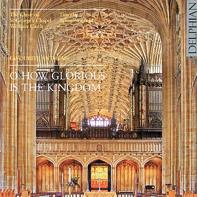
Cathedral Music 56
P3103 CM OCTOBER 06 27/10/06 14:02 Page 56
vocal dynamic. More rewarding, and equally contemporary repertoire, is James Macmillan’s atmospheric To my successor and Jonathan Dove’s more rhythmically agile Advent carol I am the day. It is however William Harris’s two wonderful pieces (and a superb tenor soloist) which will prompt repeated listening.
David Truslove
WALKING IN A GARDEN
The Choir of St Davids Cathedral.
Director: Timothy Noon. Organ: Simon Pearce. Tallis In ieiunio et fletu; Morley Nolo mortem peccatoris; Bairstow The Lamentation; Pergolesi Stabat mater dolorosa; Allegri Miserere; Ireland Ex ore imnocentium; Palestrina Exultate Deo; Handel I know that my Redeemer liveth; Bach Awake thou wintry earth;Christus der uns selig macht (organ solo); Howells Saraband for the morning of Easter (organ solo); Stanford Ye choirs of new Jerusalem; Irish Trad Walking in a Garden; Lindley Now the green blade riseth; Wesley Blessed be the God and Father YORK AMBISONIC YORK CD 195 TT 75:01

Timothy Noon takes the choir of St Davids Cathedral on a varied and well constructed musical journey from Lent to Easter Day encompassing many well known pieces that include Allegri’s Miserere, Bairstow’s Lamentations and Wesley’s Blessed be the God and Father. This last is particularly rewarding not least because of the very able treble soloist and the opportunity of hearing the organ in ‘full flight’ played by Simon Pearce. Unaccompanied singing from the full choir (in Tallis, Morley and Palestrina) is mostly secure and whilst the bright tone of the girls occasionally dominates they can be heard to great advantage in Ireland’s classic motet and Timothy Noon’s own Walking in a Garden.
David Truslove
TOWARDS THE LIGHT
Choral works of Peter Klatzow.
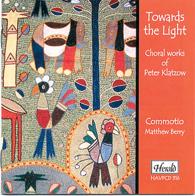
Commotio.
Director: Matthew Berry. Organ: Henry Parkes. Three Spiritual Nocturnes; Towards the light; How brightly these glorious spirits shine; Magnificat & Nunc Dimittis; A fisherman’s song of praise; The living flame of love; And thou, most kind and gentle death; Prayers and Dances of Praise from Africa.
HERALD HAVPCD 316 TT 68:46
This is a fabulous disc: Commotio’s debut CD is testament to this exciting, vibrant young choir under their conductor Matthew Berry. The music featured is well worth getting to know. Prize-winning South African composer, Peter Klatzow (and two short works by two of his pupils), blends together native African sound-worlds and conventional Western idioms. His Magnificat and Nunc dimittis is given a spirited performance and the larger-scale pieces Towards the light and Prayers and Dances of Praise from Africa are particularly effective, especially the interplay with the marimbas. The texts and translations are available to download from Herald’s website, but the choir’s diction is so good you probably won’t need them! Highly recommended.
Julian Thomas
FINZI
Bournemouth Symphony Chorus and Orchestra.
Director: David Hill. Tenor: James Gilchrist. Intimations of Immortality; For St Cecilia.

NAXOS 8.557863 TT 55:35
This year marks the fiftieth anniversary of Gerald Finzi’s death and this excellent recording of two odes is one of several tributes (another being the recently published biography by Diana McVeagh). Finzi’s reputation as a composer rested, at first, on his accomplishments as a song-writer. He developed a feeling for words as a result of reading extensively. This enabled him to set, with a firm touch, poems which could well have daunted others. Indeed, to choose to set the famous words of Wordsworth’s Ode: Intimations of Immortality was a bold act which caused controversy at the first performance in 1950 at the Three Choirs’ Festival. (Finzi also omitted two of Wordsworth’s stanzas.) He answered his critics in the Cree
Lectures which he gave at the RCM in 1955, justifying his own position. Posterity has vindicated him. As one listens to this music the old question arises as to what makes this music so redolent of the English countryside? After all, Finzi was born in London and came from Italian-Jewish stock. One can hear Elgar, Vaughan Williams and Holst in the background and the third stanza would not sound out of place alongside Walton’s Belshazzar’s Feast, especially in the exuberance of its orchestration. Finzi’s word-setting is all his own, however. It is syllabic rather than melismatic which gives it a directness of expression in contrast to some of his contemporaries. In setting Edmund Blunden’s ode For St Cecilia Finzi had the rare opportunity to collaborate with the poet, whose work he had long admired, and he was able to make suggestions of his own. The ode was commissioned for the 1947 St Cecilia’s Day Festival in London. David Hill draws some resplendent sounds from the chorus and incisive playing from the orchestra while James Gilchrist sings with intensity and stylistic fervour. Again, NAXOS have produced a first-class CD at an affordable price without compromising on quality.
Alan Spedding
MASS IN BLUE
Vasari Singers .
Director: Jeremy Backhouse.
Piano: William Todd. Soprano: Bethany Halliday. Will Todd Mass in Blue;Christus est stella; The ChristChild; Ave verum; None other Lamb; The Rose; Lead me Lord; Lighting the way; Every stone shall cry.
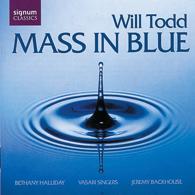
SIGNUM, SIGCD083 TT 64:19
Please excuse the pun, but this Mass isn’t ordinary! Written in the jazz idiom, it would sound out of place in a liturgical performance. The execution is extremely tight, various groups of the above musicians recorded their bits at different locations and were mixed together later. The choral writing is simple in the main, and may suit a school choir performance with enthusiastic staff and peripatetic instrumental teachers willing to get involved with a performance. Good instrumentalists and a proficient soprano soloist, such as those listed above, are a requirement. In a way the long choral lines get in the way of the jazz, but the words are pretty important! There are faster sections for the choir, and they get a chance to sing some juicy chords too. The other compositions featured are also very individual works which would certainly appeal to a wide audience. The choir, as one has grown to expect from the Vasari Singers, is brilliant. I think this disc is, on balance, a ‘must have’.
Stephen Power
PARADISI PORTAS
Music from 17th-century Portugal
The Choir of the Queen’s College, Oxford. Director: Owen Rees. Organ: Tom Wilkinson. Lobo Audivi vocem de cælo;Pater peccavi; Cardoso Missa Paradisi portas;Paradisi portas;Sitivit anima mea; Aviles Tract;Adjuva nos; Bruna Tiento de 1°tono de mano derecha; Brito Heu, Domine; Aranda Quomodo sedet sola; Morago Jesu redemptor, suscipe illam. GUILD GMCD 7296 TT 63:08
This is a superbly researched and musically convincing disc. It takes its title from the Missa Paradisi portas by Manuel Cardoso, which forms the backbone of this programme of 17th century Portuguese music. Owen Rees is clearly an expert in this field, both in his scholarly essay in the CD booklet, and also in his sensitive direction of these youthful voices. The singers respond well to this repertoire with a fresh and vibrant sound, even in the longer Mass movements which so often prove the stumbling block to less capable musicians. Duarte Lobo’s Audivi vocem de cælo, with which the disc opens, and the Cardoso Sanctus are to my ears the real highlights. My only slight criticism is that there is an occasional tendency towards slightly sharp singing in the odd phrase which, however brief, does stand out against the otherwise impeccable tuning. Tom Wilkinson’s four short organ solos are an excellent addition to the programme both for the contrast with the vocal music and for the stylish playing, especially in Pablo Bruna’s lively Tiento de 1º tono de mano derecha. This is an excellent disc and one well worth exploring.
 Julian Thomas
Julian Thomas
Cathedral Music 57
P3103 CM OCTOBER 06 27/10/06 14:02 Page 57
St JOHN’s COLLEGE, CAMBRIDGE CHORISTER VOICE TRIALS
CHORISTER VOICE TRIALS
Formal Voice Trials for boys aged 6 – 9 years old, who are interested in admission to St John’s College Choir, are held in spring and autumn each year.
For further details please contact Mr Alex Loria at St John’s College School on 01223 353652 or by sending an e-mail to admissions@sjcs.co.uk
ST JOHN THE BAPTIST
The Choir of St John’s College, Oxford.
Directors: Ryan Wigglesworth, Duncan Whitmore. Organ: Peter Buisseret. Purcell I was glad;Lord, how long wilt thou be angry?; Remember not, Lord, our offences; Jehova, qua, multi sunt hostes mei; Byrd Benedictus (Short Service); Wigglesworth
Collect for St John the Baptist; Isaac Introit for the Nativity of St John; O’Regan De sancto ioanne Baptista; East As they departed; Pärt Anthem of St John the Baptist; Gibbons
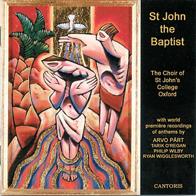
This is the record of John; Wilby Proclamation; Palestrina Fuit homo missus a deo.
CANTORIS CRCD6080 TT 69:38
This is a well thought-out disc with much to delight. The programming is brave: for example sandwiching Gibbons’s This is the Record of John (with a tenor soloist, rather than counter-tenor) between two commissioned works by Philip Wilby and Arvo Pärt, but it works extremely well. There are some stylish solos (both in the Purcell anthems and, indeed, conductor Ryan Wigglesworth’s plainsong intonations) and, on the whole, the choral singing is well blended. There are just a few moments where youthful enthusiasm leads to untidiness: vowel sounds stick out a little (e.g. sopranos in Byrd Benedictus), and intonation wanders (particularly in Michael East’s As they departed), but this is nevertheless an interesting programme and worth discovering.
Julian Thomas
BRITISH CHURCH COMPOSER SERIES – 4

Thomas Morley
Ferdinand’s Consort.
Director: Stephen Bullamore.
Organ: Edmund Aldhouse.
The First Service; How long wilt thou forget me?; Burial Service; De profundis clamavi; Eheu, sustulerunt Domine; Domine, non est exaltatum cor meum; Domin; Domine, Dominus Noster; O amica mea; PRIORY PRCD 834 TT 73:25
Thomas Morley’s moving Burial Service is given a sensitive performance here, and the five movements of the expansive First Service are brought to life with engaging singing. For the most part, the choral sound is good with some particularly effective antiphonal singing, and excellent diction throughout. Sadly, the shorter anthems feel slightly less secure and there are several lapses in tuning (for example in How long wilt thou forget me?). Bullamore’s policy of using a large number of different soloists from the choir is understandable, but I found the inconsistency of vocal timbres a little off-putting, particularly in the soprano section, where some voices were quite ‘boy-ish’ while others were more full-toned and with lots of vibrato. I would have liked a bit more dynamic variety in some pieces as well. These are minor quibbles though, and this is generally a good, solid performance of excellent repertoire.
Julian Thomas
BRITISH CHURCH COMPOSER SERIES – 6

Basil Harwood.
The Vivace Singers.
Director: Adrian Partington. Organ: Jane Watts. Te Deum, Benedictus in A flat; Agnus Dei Op 2; O how glorious; O salutaris; This is the day; Draw nigh to God; Magnificat & Nunc Dimittis in E minor; All my heart this day rejoices; O sacred banquet; Let the people praise thee; Sing and rejoice; O how plentiful.
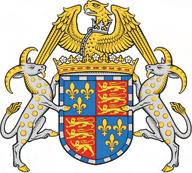
PRIORY PRCD 836 TT 74:13
Born in 1859, Harwood studied at Oxford and Leipzig before being appointed organist of St Barnabas, Pimlico, Ely Cathedral and finally Christ Church Cathedral, Oxford, from which post he retired in 1909 to manage the family estates in Gloucestershire. A prolific composer, he is remembered today chiefly for his Service in A flat and the anthem O how glorious is the kingdom. This recording is therefore to be welcomed, and is worth the attention of students of cathedral music for the opportunity it presents to hear not only those familiar warhorses but also the E minor Evening Service and a selection of anthems including the largescale O how plentiful is thy goodness. Sadly, I cannot be so enthusiastic about the performances. The Vivace Singers, drawn from students at the Royal Welsh College of Music and Drama, are hardly ideal for this repertoire and several of the soloists sound half frightened to death. Matters are made worse by a highly eccentric interpretation of O how glorious, with the opening taken so fast that the usually admirable Jane Watts can barely play the accompaniment, the quieter

Cathedral Music 58
P3103 CM OCTOBER 06 27/10/06 14:02 Page 58
sections by contrast painfully slow and the music’s flow and cohesion interrupted by gratuitous pauses. The performance on the old Anthems from Kings recording (directed by David Willcocks) is a model of how it should be done – a sensible speed, allowing every note of the organ part to be crystal clear, with the disparate sections held together by a common pulse. Several of our provincial cathedral choirs could have done far better than the Vivace Singers, and the results would have been more suitable and (blessed word) authentic.
Timothy Storey
IT IS A THING MOST WONDERFUL
Southwell Minster Choir. Director: Paul Hale.

Organ: Simon Bell.
Mendelssohn Hear my prayer; S S Wesley The Wilderness; Weelkes Hosanna to the son of David; Elgar Ave Verum; Duruflé Ubi caritas et amor; Allegri
Miserere Mei; Leighton Drop, drop slow tears; Ireland Ex ore innocentium; Howells Like as the hart; Taverner Dum transisset sabbatum; Stanford Ye choirs of new Jerusalem; Holst This have I done; Tournemire Choral-Improvisation sur le ‘Victimæ Paschali’.
CANTORIS CRCD6082 TT 75:46
This is a well-chosen anthology of music for Lent, Passiontide and Easter, which also sets out to celebrate the abilities of some good solo boys including Ben[edict] Inman who together with two colleagues from Ely has achieved considerable fame as one of ‘The Choirboys’. There are the inevitable and apparently obligatory Hear my prayer (Mendelssohn) and Miserere mei, Deus (Allegri) – choirmasters, can we please have at least ten years’ break from both when you plan your next recordings? – but of greater interest are The Wilderness (S. S. Wesley) and the incomparable, magical This have I done for my true love (Holst). It would be worth buying the disc for the latter alone, but there are many other good things to enjoy and this recording is a great credit to Paul Hale and his team. Recommended.
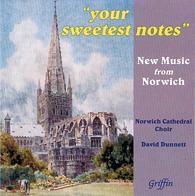

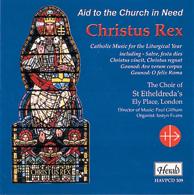 Timothy Storey
Timothy Storey
YOUR SWEETEST NOTES
New music from Norwich.
Norwich Cathedral Choir.
Director: David Dunnett. Organ: Julian Thomas. Stanford Ye Choirs of new Jerusalem; Byrd Prevent us, O Lord; Cooper Come my way; Hadley My beloved spake; Nicholas A Song of Hosea; Rutti St Peter & St Paul; Aston How lovely is thy dwelling place; Cann Psalm 121; Bairstow If the Lord had not helped me; Mitchell O Sacrum convivium; Statham Ye that know that the Lord is gracious; Bainton And I saw a new heaven; Lauridsen O magnum mysterium; Simpson Dixit Dominus.
GRIFFIN GCCD 4055 TT 65:47
The title is, to say the least, misleading. There are indeed new works by Professor Peter Aston, Matthew Cann (former lay clerk), Morten Lauridsen (the familiar and in this reviewer’s opinion over-rated O magnum mysterium) Carl Rıtti, Spencer Mitchell (lay clerk), Andrew Simpson and the Cathedral’s former organists David Cooper and Michael Nicholas; but the balance is rather oddly made up with old favourites by Byrd, Bainton, Bairstow, Hadley, Howells, Stanford and Statham. That said, performances are good, and the new music is on the whole well-crafted and interesting. I must, though, enter a protest against the assertion in the accompanying notes that Bairstow’s occasional tendency to bring the Minster choir to order by increasing the volume of the organ accompaniment somehow made him eccentric – quick-tempered, yes, but hardly eccentric compared with several of his contemporaries!
Timothy Storey
J S BACH: SACRED CANTATAS FOR ALTO Nos 54, 169, 170 and 200.
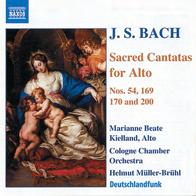
Cologne Bach Choir, Cologne Chamber Orchestra.
Director: Helmut Müller-Brühl.
Alto: Marianne Beate Kielland.
NAXOS 8.557621 TT 62:40
This is a thoroughly delightful recording of music which may well be new to many readers. Bach’s inventive powers are ever fresh and new in these attractive solo cantatas, though it may be sensible to listen by installments
rather than tackling the full sixty-two minutes at one attempt. The performances are full of vitality, and the soloist’s somewhat countertenorlike tone is perfectly suited to task in hand. Strongly recommended.
Timothy Storey.
CHRISTUS REX
Catholic Music for the Liturgical Year.
The choir of St Etheldreda’s, Ely Place.
Director: Paul Gillham. Organ: Iestyn Evans. Perosi Tu es Petrus; Elgar Ave Maria; Ave maris stella; Gounod Ave verum corpus; O felix Roma; Victoria Q quam gloriosum;Senex puerum portabat; Nanino Requiem Gradual & Tract; Mendelssohn Beati mortui; Palestrina Exaltabo te, Domine;Vere languores; Turner Ascendit Deus; Donizetti Ave Maria.
HERALD HAVPCD 309 TT 64:07
St Etheldreda’s is hidden away in Ely Place, a private street off Holborn Circus in London. In mediaeval times the church was part of the London palace of the Bishops of Ely, and it passed through a succession of owners before being bought by the Institute of Charity (the Rosminians) in the nineteenth century. It claims to be the oldest Catholic church in London, though that claim has to be qualified but at all events it is a most beautiful building. The fourteen professional singers on this recording make a robust, mature and colourful sound, perhaps a little overblown at times but generally well adjusted to the music which includes Corelli, Donizetti, Gounod, Mendelssohn, Perosi (‘the Italian Stanford’) and John Egbert Turner alongside more usual Catholic fare; Palestrina and Victoria come off surprisingly well, as does the plainchant. It is certainly a varied programme, unusually interesting and enjoyable.
Timothy Storey
CD Reviews CHRISTMAS
CHRISTMAS AT ST JOHN’S COLLEGE CAMBRIDGE Antipons and hymns.
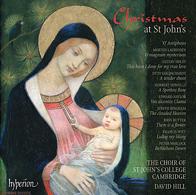
St John’s College Choir.
Director: David Hill. Organ: Paul Provost. Goldschmidt A tender shoot; Howells A spotless rose; Naylor Vox dicentis:Clama; Bingham The Clouded Heaven; Rutter There is a flower; Holst This have I done for my true love; Pott Lullay my liking; Warlock Bethlehem Down; Lauridsen O magnum mysterium.
HYPERION CDA67576 TT 74:41
A sequence of music leading from the darkness of Advent to the blazing light of Christmas, Epiphany and beyond.
ADVENT IN WINCHESTER
Winchester Cathedral Choir.
Director: Andrew Lumsden.
Organ: Sarah Baldock.
Advent Prose; Byrd Vigilate; Manz E’en so, Lord Jesus, quickly come; Bach Wachet auf; Nun komm, der Heiden Heiland (organ); Weelkes Hosanna to the son of David; Macmillan Laudi alla vergine; Howells A spotless rose; Biebl Ave Maria; Gowers Ad te levavi; Naylor Vox dicentis; Stanford Benedictus in C; Brahms Es is ein’ Ros’ entsprungen (organ).
GRIFFIN GCCD 4052 TT 66:48
St John’s seem unfortunate with competition. Their most recent Hyperion disc of Mendelssohn was matched by an almost identical programme from another Cambridge College (where the most significant difference was the sex of the top line, The Gramophone on balance preferring female voices for Mendelssohn). Now their predominantly Advent programme – entitled ‘Christmas’ by the marketing men – is rivalled by David Hill’s old choir. At least on this occasion there are only two duplicated items and the target audiences are probably different. There is little to choose between performance quality, though the
Cathedral Music 59
P3103 CM OCTOBER 06 27/10/06 14:02 Page 59
Hyperion disc has to my mind a slightly warmer sound and I did wonder whether Winchester’s first item (the Advent Prose) was actually recorded in procession, and if so where the microphones were placed. If you want all the Advent antiphons you may well go for the John’s recording. You will not be disappointed, with some lovely singing in other items as more than a bonus. Goldschmidt’s A Tender Shoot is for me a particular gem, while Lo, Hecomes is a particularly fine example of hymn performance. Warlock’s Bethlehem Down is also not to be missed. Of the newer items Lauridsen’s O Magnum Mysterium is fast becoming a favourite with competent choirs and is here given an exemplary performance. The overlapping items are Howells’s A spotless rose and E W Naylor’s Vox Dicentis. If you do not know this majestic piece, get one of these CDs. The John’s performance seems a little more spacious (indeed it takes a whole 11 seconds longer according to the playlist) while the Winchester choir, under Hill’s successor, Andrew Lumsden, capture the urgency of the text just that bit better. Winchester’s disc has some interesting finds. I particularly enjoyed Paul Manz’s E’en so, Lord Jesus, quickly come and Franz Biebl’s Ave Maria. James Macmillan’s powerful setting of words by Dante was a special commission and received its Italian premiere by the Winchester choir in their twinned cathedral of Florence. It needs more than one hearing, I am fortunate to have acquired both. Be guided by your loyalties or the respective programmes. Both discs can be highly recommended.
Richard Osmond
CHRISTMAS AT RIPON CATHEDRAL
The Choirs of Ripon Cathedral. Director: Andrew Bryden. Organ: Thomas Leech. Mathias Wassail Carol; Piccolo Jesus Christ the apple tree; arr Hemingway People look East; arr Carter I wonder as I wander; Karg-Elert Vom Himmel hoch da komm ich her; The Angel Gabriel (arr Lloyd); Dalby Mater salutaris; Joys Seven (arr Cleobury); Warlock Balulalow; The Sycamore Tree; Bryden Seek him out; Hendrie As I outrode this enderes night; Langlais La Nativité; Lauridsen O magnum mysterium; Jamieson The Burning Babe; Rutter Candlelight Carol; Carter Hodie Christus natus est. YORK AMBISONIC YORK CD 191 TT 64:46

Another Christmas collection! The singing on this disc is good. Bryden’s delightful piece is well-suited for girls’ voices. An unknown composer to me, Alasdair Jamieson, has a particularly fine composition in Burning Babe. The Bryden descants to the well-known carols are a change and very good but for me, and I am sure for many, Willcocks still reigns and makes Christmas. Those negatives aside, this is a good CD to have representing some interesting repertoire from the period and Thomas Leech’s accompaniments and two solos make a fine contribution to this disc.
Andrew Barnes.
A COTSWOLD CHRISTMAS
The Abbey School Choir, Tewkesbury.
Director: Benjamin Nicholas
Organ: Carleton Etherington
REGENT REGCD219 TT 68:52
Of the twenty-two tracks on this recent Christmas disc from the Abbey School Choir, Tewkesbury there are about half a dozen relatively unfamiliar carols which other choirs may well want to explore. Notable amongst these are attractive carol arrangements by Michael Nicholas (particularly Today maiden Mary and Infant Holy) and Herbert Howells’ moving O mortal man, as well as three original carol settings; the atmospheric O, do not move (John Tavener), the lively Nova! Nova! (John Scott) and the beautiful Shepherd’s Carol (Bob Chilcott). The boys are especially noteworthy who sing with conviction and full throated tone, most memorably in Scheidt’s A Child is born in Bethlehem. This CD definitely bears repeated listening!
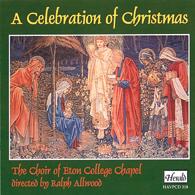
 David Truslove
David Truslove
CHRISTMAS VESPERS AT WESTMINSTER CATHEDRAL
The Choir of Westminster Cathedral
Director: Martin Baker.
Organ: Matthew Martin.
HYPERION CDA67522 TT 68:12
In the Roman Catholic tradition, most major feasts have two celebrations of Vespers, the first on the eve of the feast and the second on the actual day.
On this CD we hear an expanded version of Vespers as we might hear it were we fortunate enough to be present in Westminster Cathedral on Christmas Eve. Thus the chosen music looks forward from the Advent message of the Introit, Sweelinck’s Gaudete et laetare, Jerusalem, through the plainsong psalms set for the office, Tallis’s Magnificat á 5 and Victoria’s Alma redemptoris mater, on to the dawn of Christmas itself with Schütz’s jubilant Hodie Christus natus est. Connecting these great compositions is the timeless thread of plainsong in various manifestations; psalms, antiphons and responsories.

Matthew Martin uses the organ sensitively in accompanying, and imaginatively in the improvisations between the five psalms, before bursting forth in the splendour of the final voluntary, Fête by Langlais. Martin Baker inspires the high standard we have come to expect from his excellent choir. Andrew Carwood’s informative programme note sets the service in historical context and the whole production is a further enhancement to Hyperion’s catalogue.
Alan Spedding
MUSIC FROM MIDNIGHT MASS AT LIVERPOOL METROPOLITAN CATHEDRAL

Cathedral Choir and Brass Ensemble.
Director: Terrence Duffy. Organ: Richard Lea.
Organ: Improvisation on ‘The Darkest Midnight’; Willocks Prelude on Irby;Postlude on Hark! the herald; Liszt Shepherds at the manger; Malcolm Missa ad Praesepe; Poston Jesus Christ the apple tree; Darke In the bleak mid winter; Choral and organ In dulci jubilo; Lauridsen O magnum mysterium.
HERALD HAVPCD 326 TT 69:52
This is a delight and has made me want to visit the Cathedral for Midnight Mass. The idea of two organ pieces leading immediately into choir pieces creates a mosaic of sound pictures which are highly effective. George Malcolm’s Mass setting was written in the 1950s. As the notes say it is not a triumphant setting, much more of a pastoral style with the shepherds’ pipes heard in the Kyrie creating the effect of gentle calm which would not disturb the new born babe. It works very well indeed. The choir singing is of the high standard one has come to expect from this cathedral choir, once again under the direction of Terence Duffy and the organ accompaniments are excellent. Tracks 15 to 22 are the choir singing a verse of In dulci jubilo interspersed with organ chorale preludes by Zachau, Dupré, J M Bach and J S Bach and just adds to the enchantment that the music creates on this CD. It really does bring to life the Christmas story. Archbishop Kelly writes in a letter to the listener that ‘I am certain this music, recorded in a city which often knew dark days , will bring joy and inspiration to all those who receive this gift of praise of the Son of God born of Mary of Nazareth.’ What makes this disc work so well is summed up by misquoting Monty Python – it is something completely different.
Patrick Mayhew.
A CELEBRATION OF CHRISTMAS
The Choir of Eton College Chapel. Director: Ralph Allwood. Organ: Robert Quinney. Howells A spotless rose; Ord Adam lay y-bounden; Warlock Bethlehem Down; Balulalow; Weir Illuminare; Gibbons Thus angels sang; Hussain Illuminare Jerusaelm; Wood Ding dong!; Leighton Lulla lullay; Organ: Bach Chorale Prelude In ducli jubilo;Wachet auf; Langlais La nativité; Messiaen Dieu parmi nous. HERALD HAVPCD 318 TT 68:09
The majority of this CD is unaccompanied music and is superbly sung as one would expect from a choir directed by Ralph Allwood. The organ is used for the hymns/ carols (O come all ye faithful; O come, O come Emmanuel; O little Town, Hark the Herald) and the solo pieces are skilfully played. The mixture of repertoire balances well and of particular delight are the Warlock pieces and Leo Hussain’s Illuminare Jerusalem. Hussain was a boy at Eton and this piece was written in 1994 when the music was recorded for a limited distribution. At the time Robert Quinney, was a music scholar at the College – now Sub-Organist of Westminster Abbey. Ralph Allwood creates a musical delight of finely tuned singing and achieves very high standards. A worthy re-release.
Sarah Samuelson
Cathedral Music 60
P3103 CM OCTOBER 06 27/10/06 14:02 Page 60
CD Reviews RE-RELEASES
GREAT TUDOR ANTHEMS
Worcester Cathedral Choir.
Director: Donald Hunt. Organ: Raymond Johnston. Weelkes Hosanna to the son of David; When David heard; Gloria in excelsis Deo; Taverner Dum transisset Sabbatum; Blitheman In Pace; Mundy O Lord the maker; White O Praise God; Tomkins My beloved spake; O sing unto the Lord; Almighty God; When David heard; Byrd Laudibus in sanctis; Justorum animae; Teach me, O Lord; Cantate Domino; Ave verum; Sing joyfully; Tallis Salvator mundi; Gibbons O Lord in thy wrath; Hosanna to the Son of David.
GRIFFIN GCCD 4053 TT 75:05
Recorded in 1992 and 1993 these recordings bear the stamp of Donald Hunt when he was at Worcester with some finely tuned unaccompanied singing and a choir that responds with feeling to these gems from the English choral tradition. The choir has no problem in delivering fine performances of the choral writing from composers of the Tudor period. I enjoyed these historic recordings because they have so much to offer. Griffin is making a fine contribution to the catalogues and may it long continue.
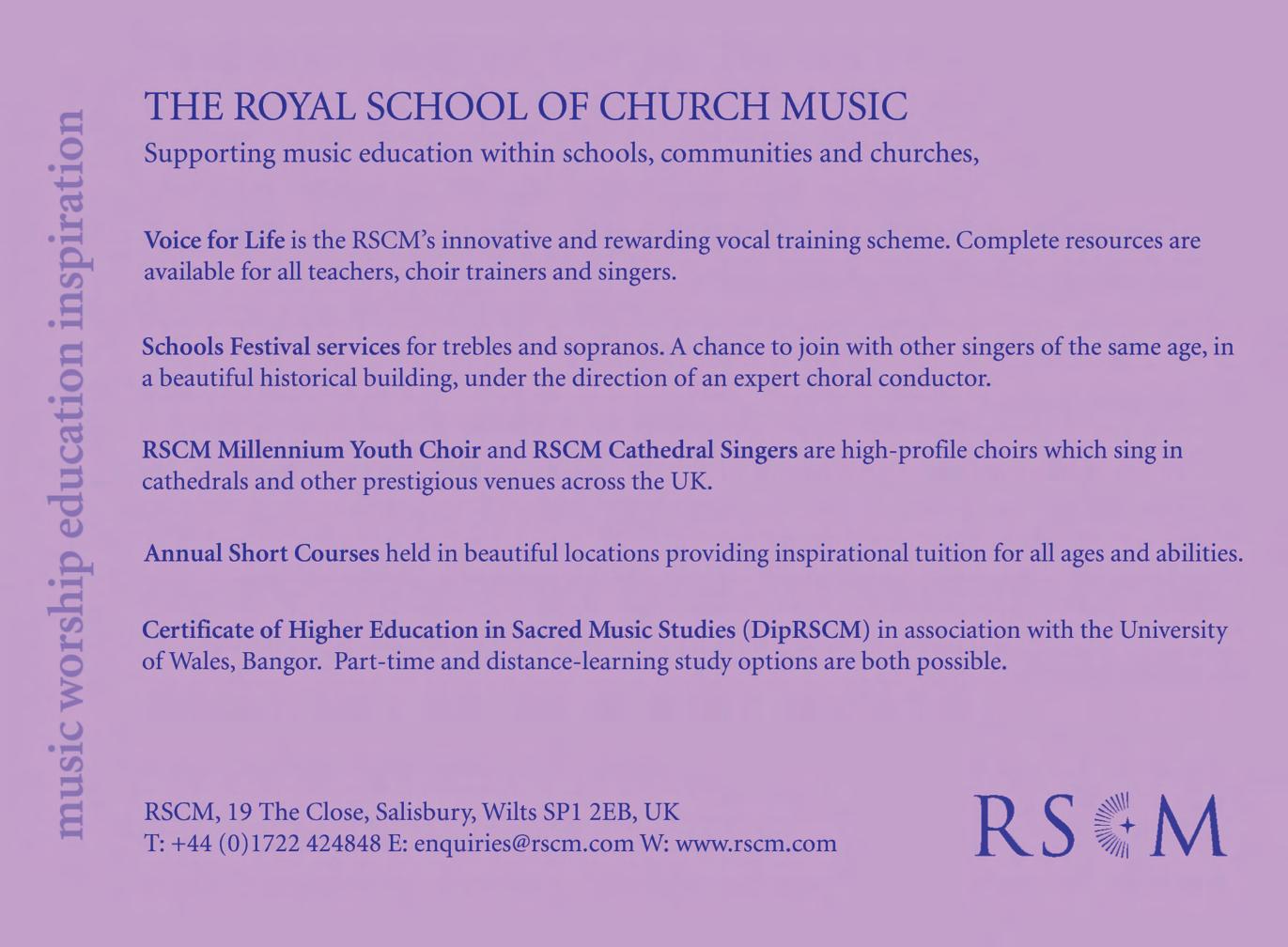
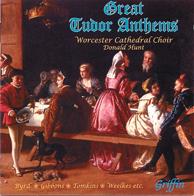 Andrew Barnes
Andrew Barnes
JOHN BLOW ANTHEMS
Winchester Cathedral Choir.
Director: David Hill. The Parley of Instruments. CD1 God spake sometime in visions; How doth the city sit solitary; The Lord is my shepherd; God is our hope and strength; I beheld and lo a great multitude; Turn thee unto me; Blessed is the man that hath not walked.
CD2 Lift up your heads; O Lord I have sinned; O give thanks unto the Lord; O Lord, thou hast searched me out and known me; Cry aloud and spare not; Lord, who shall dwell in thy tabernacle? I said in the cutting off of my days.
HYPERION CDD22055 TT 116:28
When it comes to re-releases this is a great buy. Two discs of Blow’s music sung by the David Hill’s choir when he was at Winchester Cathedral, accompanied by the Parley of Instruments. Blow’s music is well-worth the time investment. He was unquestionably the leading church musician of the Restoration period and one of the original group of children recruited for the Chapel Royal in 1660. This is an excellent vintage recording with Robin Blaze and Stephen Varcoe, just a couple of singers amongst a considerable feast of talent. The sound produced here is fabulous and the singing wonderful with crisp, rhythmic playing from Peter Holman’s instrumental group.
 Ian Morgan
Ian Morgan
ORGAN MUSIC BY MARCEL DUPRÉ
John Scott plays the organ of St Paul’s Cathedral. Prelude & Fugue in B major; F minor; G minor; Choral et Fugue; Esquisse in C major; E minor; B flat minor; Placare Christe servulis Te lucis ante terminum; Variations sur un vieux Noël; Symphonie-Passion; Cortège et Litanie; Deuxième Symphonie; Allegro deciso from Évocation.
HYPERION 2 COMPACT DISCS CDD22059 TT 120:58,
This is a thrilling encounter with John Scott and Dupré. From the opening Prelude and Fugue in B major, one knows that there is a big treat in store. A feast on 2 CDs recorded between March 1986 and January 1998. Scott is the master of the St Paul’s organ, getting some wonderful sounds. The Esquisses are delightful gems which deserve a wider hearing. Quite simply the recording quality is terrific and the recordings deserve another good airing. Anyone interested in French organ music should have these two CDs. This is one of those rare recordings when you know that if you lend it to a friend you may never get it back. A wonderful treat.
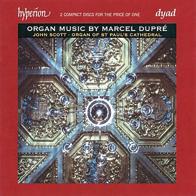 Ian Morgan
Ian Morgan
Cathedral Music 61
P3103 CM OCTOBER 06 27/10/06 14:02 Page 61
CD Reviews
DIETRICH BUXTEHUDE Complete Works for Organ Vol 4
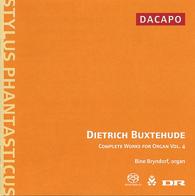
ORGAN
Bine Bryndorf plays the organ of ‘Düben Organ’, St Gertrud, German Church, Stockholm, Sweden. Toccata in F; Gelobet seist du; Nun lob, mein Seel, den Herren; Praeludium in G & F; Canzonetta in C, G & D min; Magnificat 1; Nun Freut euch Lieben Christen G’mein à 2 Clav; ich ruf zu dir, Herr Jesu Christ; Wie schön leuchtet der Morgenstern; Toccata in D minor; DACAPO 6.220514 TT 65:29
For too long Buxtehude was pigeon-holed by music historians into a role subservient to J S Bach. The story of the young J S B trekking to Lübeck to imbibe the heady mix of musical treats created by Buxtehude and his musicians is well known. Buxtehude was at the centre of musical life in the thriving Hanse port, not only as organist of the Marienkirche but as director of the renowned Abendmusik concerts. More organists are discovering the joys of Buxtehude and this CD is the fourth in the latest complete recording of his organ works. The varied collection shows the range of his achievement from majestic Toccatas and Praeludia, through Chorale Fantasias to the delightful Canzonas in which the composer’s contrapuntal skills are exploited to entertaining effect – a case of art concealing art. Bine Bryndorf displays to the full the effects of the Düben organ and its colourful, pure quarter-comma meantone tuning – a system widely used in Buxtehude’s North Germany. The organ’s fascinating provenance is described fully in the sleeve notes together with an exhaustive and useful list of the registrations used in each piece. Organ and organist are well matched in sparkling performances. Highly recommended.
Alan Spedding
RHAPSODY

Timothy Noon plays the organ of St Davids Cathedral. Howells Rhapsody in C sharp minor; Hakim Expressions Nos 16 & 17; Couperin Offertoire et Élévation; Bach Prelude & Fugue in C; Duruflé Prélude et Fugue sur le nom D’Alain; Saint Saëns Le Cygne; Whitlock The Plymouth Suite. YORK AMBISONIC YORK CD 198 TT 66:43
This recording demonstrates the versatility of the modern cathedral organ to great effect. The programme gives us a taste of music not only from our own shores but also from France and Germany. The appeal for this disc will spread beyond St Davids Cathedral’s gift shop.
Stephen Power
ORGAN FIREWORKS XI
Christopher Herrick plays the Lay Family Concert Organ in Dallas, Texas.
Copland Preamble (for a Solemn Occasion); Lemare Marche moderne; Janácek Organ Solo Glagolitic Mass; Langlais Battle Hymn of the Republicl; Behnke Go tell it on the mountain; German Festive Trumpet Tune; Nagel Danke-Swingfülein; Gigout Grand Chœur dialogué; Guilmant Choral et Fugue; Takle Festmusik; Widor Marche américaine; Farrington Fast Dance; Kiefer Blues Chorale:‘Die ganze Welt hast du uns überlassen’; Jongen Sonata Eroïca.
HYPERION CDA67577 TT 67:35
The Organ Fireworks series started over 20 years ago at Westminster Abbey, where Christopher Herrick was Sub-organist, and has since then moved all over the world, arriving in Dallas for this eleventh recording in the series. Those readers who, like the reviewer, leave buying their fireworks until after 5pm on 5th November will be aware that by that time there are only usually two types of box left. The first is usually a prohibitively expensive all-in-one

display, which is too large for the average garden, whilst the second offering contains a small selection of uninteresting sounding items, which do not promise to make for an interesting display. Thankfully, those who buy Christopher Herrick’s eleventh box of organ fireworks need not fear that his offering is too much for the average listener or that he only has uninteresting items left. Like all good displays there are a few rockets (by Langlais, German, Farrington, Widor and Takle), some sparklers (by Behnke, Nagel, Kiefer), a few longer and more colourful devices (by Jongen, Lemare, Gigout and Guilmant) and a work by Aaron Copland. As we have come to expect from Christopher Herrick and Hyperion everything is done to the highest standard. The varied and exciting programme is convincingly played, making full use of the extensive tonal spread of the organ, whilst the accompanying programme notes are both comprehensive and interesting. Organ aficionados will be interested in the disposition of the four-manual instrument (built by C B Fisk Inc), which comprises six divisions. There is a ‘classical core’ of Pedal, Positive, Great and Swell with additional Tuba and Résonance sections so that it aims to enable it to ‘showcase as much of the organ repertoire as possible’, a claim which is borne out by the music on this recording. Another fine organ firework display, which I’m certain readers will enjoy.
Stephen Power
THE GLORY OF GROSVENOR
Richard Hobson plays the organ of Grosvenor Chapel. Russell Voluntary in G minor;Voluntary in C; Walond Voluntary in D minor & major Op 1 No 3 and No4; Gladwin Sonata No 6; Keeble Voluntary in F (III); Voluntary in G (I); Attwood Dirge (for the burial of Lord Viscount Nelson); Bennett Voluntary in F.
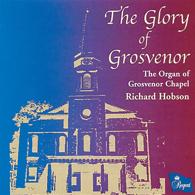
REGENT REGCD234 TT 65:14
The organ in Grosvenor Chapel was built in 1991 by William Drake using a case which is thought to date from 1732 and which originally housed an organ built for the Chapel by Abraham Jordan. The current organ was conceived as an historical reproduction of an 18th century instrument (with a few concessions to modern requirements) largely as a result of the enthusiasm and conviction of Richard Hobson, Organist at the Chapel since 1981. The music played is typical of the period and encompasses a wide range of colours and moods, giving the player the opportunity to exploit the colourful tonal resources of the instrument to the full. Richard Hobson provides comprehensive programme notes, which include full details of the registration used in the music, and through his well-controlled playing makes a convincing case for this music from a much-neglected era of English music. I have two small criticisms (both characteristics of other organs of the period that I have heard): occasionally the accompaniment to Cornet solos sounds slightly behind the melody; and the prominent fifth harmonic produced by the organ became rather tiring by the end of the CD. These are subjective personal opinions - a constructive conclusion would be to suggest that the playing, the slightly ‘off the beaten track’ repertoire and the interesting instrument together combine to make this disc worth buying.
Stephen Power
ROYAL ALBERT HALL ORGAN RESTORED
Simon Preston plays the RAH organ. Mendelssohn Overture to the Oratorio ‘St Paul’; Schumann Six Fugues on BACH; Bolcom Free Fantasia on ‘O Zion Haste’ and ‘How Firm a Foundation’; Gershwin The Brothers Gershwin; KargElert Valse Mignonne; Jongen Sonata Eroïca.
SIGNUM RECORDS SIGCD084 TT 74:29
This, I suspect, will become the definitive recording of the revitalised Royal Albert Hall Organ. We might be seeing a number of recordings by different performers on this instrument, but the high quality and craftsmanship in the production of this disc should put it at the top of the list. W. T. Best performed his own arrangement of Mendessohn’s Overture to St Paul at the opening concert in 1871. Simon Preston links this to the symphonic nature of the Schumann Fugues (which should appeal to all classical music lovers
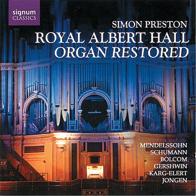
Cathedral Music 62
P3103 CM OCTOBER 06 27/10/06 14:02 Page 62
not just organists), and to the Jongen Sonata heard at the end. These works are presented alongside a variety of lighter pieces with good tunes (inspired by Gershwin and Sprituals). Simon Preston’s playing has clarity and manages to project the phrases with vigour throughout the huge space. The diversity of colour in the registration of this colossal instrument is refreshing too, with combinations of stops used in the Gershwin reminiscent of the theatre organ soundworld. Listen, and hear for yourself.
Stephen Power
WORKS FOR ORGAN & ORCHESTRA
The Georgian Chamber Orchestra, Ingolstadt. Director: Markus Poschner. Organ: Franz Hauk. Paër Concerto in D; Langlais Choral médiéval for three trumpets, trombones & organs;Thème, Variations et Final; Bach Wir danken dir, Gott’ Cantata 29; Schneider Echo Concerto; Widor Salvum fac populum tuum for three trumpets and trombones.
GUILD GMCD 7264 TT 70:53
I felt strangely disappointed by this latest offering in Guild’s Works for Organ & Orchestra series. The playing is commendable from organist and orchestra alike (except a few intonation lapses from the brass in the Langlais Choral and Widor), but the acoustic endlessly smudges the effect too much for my liking. The programme is decidedly eclectic, from the famous Sinfonia to Bach’s Cantata 29 to Ferdinando Paër’s Mozartian three-movement Concerto, Widor’s triumphalist Salvum fac populum tuum to German film-music composer, Enjott Schneider’s intriguing Echo Concerto. In some ways Schneider’s Concerto is one of the most effective pieces because of the clarity of the smaller forces in the bath-like acoustics of the Liebfrauenmünster in Ingolstadt. There’s no doubt the 1977 Klais organ is a match for the demands of both such a varied repertoire and the orchestral resources it faces but it just doesn’t quite add up to a wholly satisfying CD for me.
Julian Thomas
J S BACH
Margaret Phillips plays the 1734-37 Christoph Treutmann Organ of Klosterkirche, Grauhof, Germany.
The ‘Eighteen’ Chorale Preludes BWV 651-668; Canonic Variations on Von Himmel hoch BWV 769a; The ‘Schübler’ Chorale Preludes BWV 645-650 REGENT REGCD232 TT 117:29 (2 CDs)

The organ sounds joyful and bright as organs built before 1860 nearly always do. Margaret Phillips’ adopts a straightforward approach in her performance of these important works by Bach, which is always musical and has clearly been meticulously prepared. Her programme notes are also informative with the bonus that details of the registration used for each piece are given. Another recording of much-recorded works, but worth having.
Tim Rogerson
THE ORGAN MUSIC OF PETR EBEN – 5
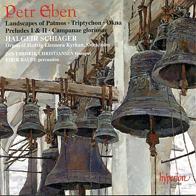
Halgeir Schiager plays the 1975-6 Grönlunds Orgelbyggeri organ of Hedvig Eleonora Kyrkam, Stockholm. Percussion: Eirik Raude.
Trumpet: Jan Fredrik Christiansen.
Landscape of Patmos (with organ and percussion); Prelude
1; Gloria; Triptychon; Campanae gloriosae; Okna (Windows) (trumpet and organ)
HYPERION CDA 67198 TT 71:49
The fifth disc in this Eben series is as good as its predecessors. The two main works featured Landscapes of Patmos (for organ and percussion) and Okna (for organ and trumpet) are vibrant and stylish. The five Landscapes feature different percusiion colours representing images from Revelations; and colour is again the theme in Okna, with four of the twelve stained glass windows each representing one of the tribes of Israel. Four more recent works for solo organ make up the rest of the programme. Eben’s style is always engaging and these pieces are masterful additions to 21st century repertoire, given persuasive performances here. As always, the recorded sound and the balance between instruments are excellent.
Julian Thomas
THE ENGLISH CATHEDRAL SERIES VOLUME XIII
Roger Sayer plays the organ of Rochester Cathedral.

Dupré Deuxiéme Symphonie; Prelude and Fugue in A flat major; Heiller Tanz-Toccata; Whitlock Plymouth Suite; Ayres Exite Fidelis; Duruflé Suite Op 5.

REGENT
REGCD227 TT 73:39
For the thirteenth issue in this series, Roger Sayer (Organist and Director of Music at Rochester since 1994 and Assistant Organist for five years prior to that) demonstrates the Cathedral’s Walker/Mander organ with a programme of both familiar and unfamiliar music from the 20th century. The disc opens with Dupré’s Deuxième Symphonie, which comprises three movements, the third of which is an exciting toccata. This is followed by the Prelude and Fugue in A flat major by the same composer. Whilst the three Opus 7 Preludes and Fugues are often heard in our cathedrals, the Opus 36 set of which this forms a part is less well-known. Both Prelude and Fugue are exciting; the Fugue especially so, exploring two themes separately before working them together to a thrilling conclusion, with a short coda somewhat reminiscent of Reger’s music. Heiller’s Tanz-Toccata, written in 1970, is a restless and frenzied work, which comes to a sudden end, having explored some of the farthest reaches of the Rochester organ’s varied tonal resources along the way. Percy Whitlock was a chorister and later Assistant Organist at Rochester, before moving to Bournemouth in 1930 and so it is appropriate that his Plymouth Suite is included on this disc. This work was written after Whitlock had attended the Conference of the Incorporated Association of Organists in 1937. After a slightly hurried rendition of the opening Allegro Risoluto, Lantana, Chanty and Salix follow, all of which are played in a manner, that draws out the individual character of each movement, before a virtuosic performance of the Toccata brings the Suite to a close. Paul Ayres’s Exite Fidelis, as the title suggests, is a jazz style reworking of the hymn tune Adeste Fidelis, which exudes the energetic excitement of a small group of jazz players improvising together around the theme at first in a fairly restrained manner before getting carried away by their music and coming to a sudden end. Duruflé’s Suite is one of the great works of the French Romantic repertoire. Roger Sayer gives a magisterial and convincing account of the sombre Prélude and the vigorous Toccata. Curiously the organ disappoints slightly in the middle movement, Sicilienne, where action noise is heard and some of the sounds are a little too “English” to create the right atmosphere for the work. Thanks are due to Roger Sayer and Regent Records for bringing another innovative and exciting programme of music from an English Cathedral to the market, and what better way of expressing thanks than by buying your own copy of the disc!
Tim Rogerson
WIDOR
Colin Walsh plays Widor on the organ of Lincoln Cathedral.
Organ Symphony No 5, Organ Symphony No 6. GUILD GMCD 7305 TT 79:16
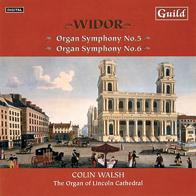
Colin Walsh has a wide knowledge of the way the French symphonic organ works. He also knows and plays his cathedral organ like no other. The musicality of Walsh’s phrasing is incredible. Two of Widor’s best known organ works are very well recorded; the microphones are placed at the right distance from the organ to gain from the cathedral’s acoustics, whilst retaining every detail and every one of the many nuances which are so expertly judged. Just occasionally, the flute stops don’t have enough bloom on them as one might expect from a French organ, and the reeds are far too polite. There is a poor edit or perhaps just a noisy stop change in the Scherzo of the 6th, (or perhaps I’m listening too close to the speaker!) but this does little to detract from the overall enjoyment of a disc which will hopefully promote the high standards of music making at Lincoln Cathedral to a wider public. The extensive booklet notes are in English and German.
Stephen Power
Cathedral Music 63
P3103 CM OCTOBER 06 27/10/06 14:02 Page 63
HERBERT HOWELLS
Organ Music
Robert Costin plays the organ of Dunedin Town Hall, New Zealand.
Rhapsody in E flat minor; Sonata (No2); Intrada (No 2); Partita.
ATOLL ACD 606www.atollcd.comTT 73:49
Distributor: Allegro Music 43 The Hop Pocket Craft Centre, New House Farm, Bishops Frome, Worcester WR6 5BT
SOUNDS ATMOSPHERIC
Organ music of Herbert Howells played by Christopher Stokes on the organ of Manchester Cathedral.
Psalm Prelude Set 1 No1 and No2; Set 2 No 1; Rhapsody No 3 in C sharp minor; Sarabande For the morning of Easter; Master Tallis’s Testament; Sarabande In modo elegiaco; Partita.
LAMMAS LAMM 192D TT 67:29
Reviewing two recordings of the organ works of Herbert Howells is, as you might expect, quite heavy going, and I am afraid I cannot really give a definitive verdict as to which one I favour more. Both players have a good understanding of the works they are performing and the high standard of playing reflects this. This having been said, the interpretations of the one work common to both discs, Partita, differ quite considerably. The organ of Dunedin Town Hall sounds good in the space it fills, and the tempi are suited to the size of the building. The Manchester Cathedral organ on the other hand has been recorded too close and therefore, the valid fast tempi, which may be suited to ‘live’ performance, make the overall sound muddy. Perhaps this is the forfeit for getting the desired general effect. The second Rhapsody on the Dunedin disc doesn’t seem to have enough guts, (something that the organ at Manchester has in abundance) to do the climaxes of this piece justice. The Sonata fares better than the Rhapsody and the Intrada is an interesting work, and, as the notes written by Costin say, ‘deserves to be heard’. As to the other works on the Manchester disc, these are more successful than Partita (though
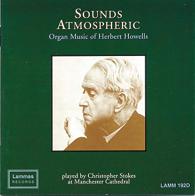

I do like the solo oboe at the start of the Partita’s Interlude). All the works listed above have been recorded for Priory Records in three volumes (PRCD 480, 524 & 547) which, I fear, will be played more often in my CD player than either of these latest additions, despite the many positive aspects for which I can commend them. Neither of the instruments has been recorded much in the past, so perhaps that will be enough to entice some readers to have a listen.
Stephen Power
ORGAN SPECTACULAR
Huw Williams at the organ of St Paul’s Cathedral. Lefébure-Wély Sortie in E flat; Vaughan-Williams Rhosymedre; Dubois Toccata; Praetorius Ballet des Matelots; Thalben-Ball Elegy; Guilmant Interlude; Ireland Capriccio; Meyerbeer Coronation March; Howells Master Tallis’s Testament; Bairstow Scherzo –Sonata in E flat; Bovet Hamburg (Prelude 3); Whitlock Folk Tune; Gigout Scherzo; Murrill Carillon; Purcell Rondeau ‘Abdelazar’; Mathias Processional; Clarke Trumpet Voluntary; Elgar Nimrod; Widor Toccata. GUILD GMCD 7304 TT 73:44

This wonderful instrument is about to undergo the first major overhaul for thirty years. From the sound it makes on this new recording, made on the last day before work commences, it is hard to believe that it needs one! As it is in daily use, and, with such high profile events taking place there, it is easy to understand, however, that they want the work done before the organ becomes unreliable. This CD is a wonderful example, to put it crudely, of the varying degrees of ‘Full Organ’ possible at St Paul’s. Lovers of the fine solo reeds will not be disappointed either! The sound of this instrument makes the hairs on the back of my neck stand up. There are also moments of repose (Master Tallis’s Testament, Folk Tune and Nimrod) as well as perky little numbers with more than a hint of humour and more than a hint of organ colour (Capriccio, Hamburger Totentanz and Processional). This CD would suit someone as an introduction to organ music, as many of the tracks are popular. Huw Williams’s superb playing is captured well by Guild.
Stephen Power
SALISBURY CATHEDRAL
VOICE TRIALS 2007
Saturday 20 January – boys
Saturday 3 February – girls
Do you know a child in Year 3 or 4 who loves singing and would like to be in Salisbury Cathedral Choir?
A fantastic opportunity for children in a spectacular setting
BACFAD
Salisbury Cathedral Choir’s open day
Saturday 11 November 2006
There will also be a special workshop for prospective voice trial candidates and their parents on Saturday 9 December
The Director of Music, David Halls, is always happy to meet prospective choristers and their parents and advise on how best to prepare for voice trial
For further details about any of the above please telephone
01722 555148
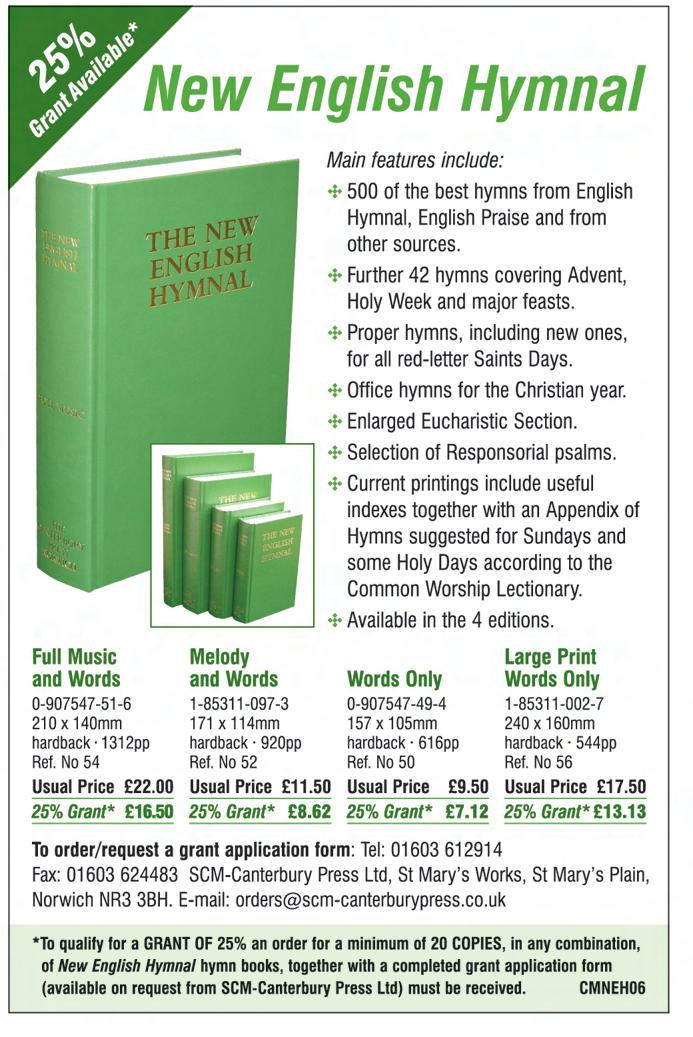
Cathedral Music 64
P3103 CM OCTOBER 06 27/10/06 14:02 Page 64
A MALVERN MIXTURE
Andrew Wilson plays the Nicholson organ of Great Malvern Priory.
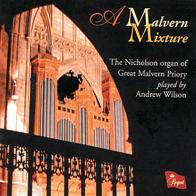
Handel Overture to the ‘Occasional Oratorio’; Lemare Andantino in D flat; Whitlock Plymouth Suite; Bizet arr Lemare Suite from ‘Carmen’; Maxim Toccata Nuptiale; Buxtehude Prelude, Fugue and Chaconne in C; Gardonyi Prelude on ‘Be thou my vision’; Rawsthorne Hornpipe Humoresque; Elgar Chanson de Nuit; Hollins Concert Overture in C major.
REGENT. REGCD233 TT 69:39
As a disc clearly designed to showcase the newly-restored organ of Great Malvern Priory, this is a clever choice of repertoire and generally well-executed. The Handel Overture (Wilson’s own arrangement) is an excellent opener, but it is undoubtedly in the lighter pieces (Bizet Carmen Suite, Lemare Andantino, Rawsthorne Hornpipe Humoresque, and Zsolt Gardonyi Prelude on ‘Be thou my vision’ – a jazzy little number) that Wilson really relaxes into his performances.
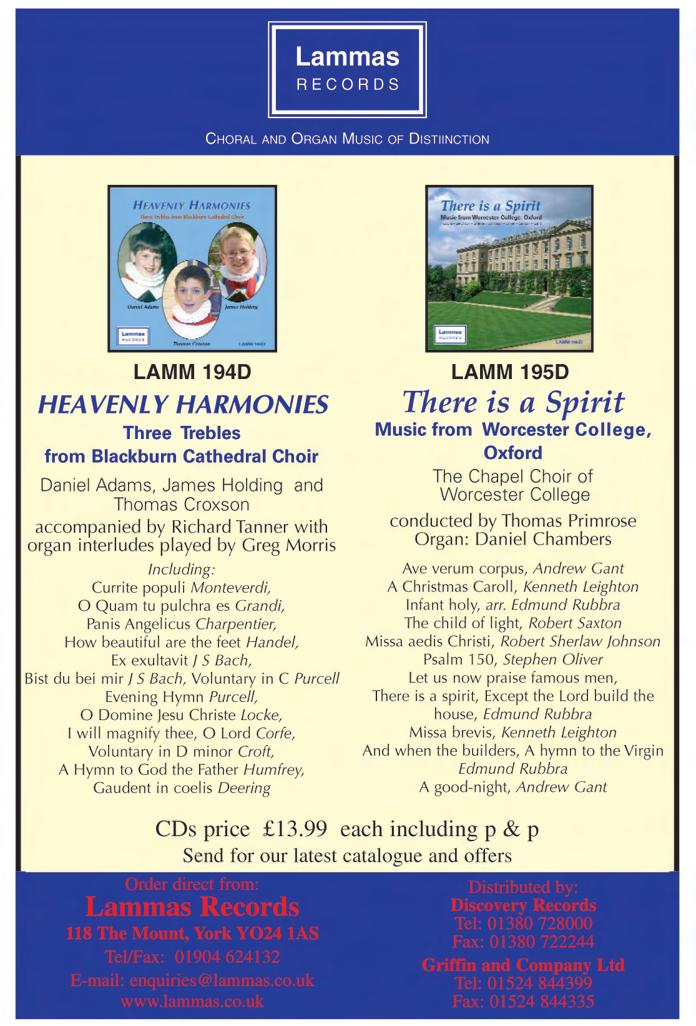
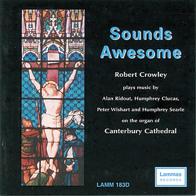
Percy Whitlock’s Plymouth Suite is a hard piece to bring off and I must admit I was not sold on this performance but, that said, it certainly does not spoil the disc either. If you buy this recording you will have 70 minutes of challenge-free listening on a sensitively rebuilt organ – just what the disc sets out to be.
Julian Thomas
SOUNDS AWESOME
Robert Crowley plays the organ of Canterbury Cathedral.
Ridout Reredos; Paean’ Prelude on ‘ St Thomas Honour We’; Epithalamium; The Seven Last Words; Clucas Psalm Prelude; Symphony for organ; Searle Cyprus Dances; Wishart Pastorale and Fughetta.
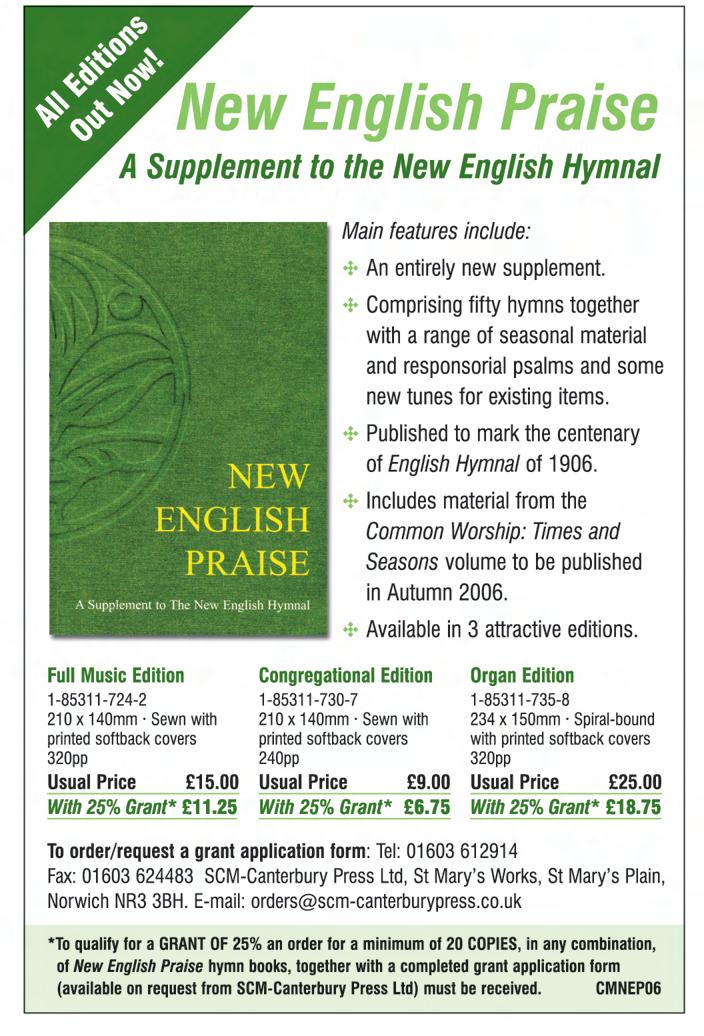
LAMMAS LAMM 183D TT 70:17
Robert Crowley continues his advocacy of 20th and 21st century British organ music in this disc. Alan Ridout’s Seven Last Words is preceded by a number of his smaller works (notably a joyful Paean). The Seven Last Words are bold and atmospheric with hints of Messiaen in the writing and, as
Crowley writes in the notes, Ridout’s response to the text is “deeply felt and imaginative.” The softer colours in Verily I say unto thee and the pedal-only movement It is finished are particularly effective. Humphrey Clucas’s Psalm Prelude and larger-scale Symphony for Organ (written for Crowley in 2004) with its B-A-C-H references and Passion chorale variations are given convincing performances. The disc is completed with Humphrey Searle’s Cyprus Dances and Peter Wishart’s jaunty Pastorale and Fughetta. The Canterbury organ sounds well in Crowley’s hands, though it occasionally lacks the raw passion that the music requires.
Julian Thomas
GILLIAN WEIR ON STAGE
At the Royal Festival Hall, London. Ives Variations on ‘America’; Dandrieu Three Noëls; Bach Praeludium et Fuga in C; Grison Toccata; Reger Fantasie und Fugue in D moll; Dupré Variations sur un Noël; Bovet Trios Préludes Hambourgeois. PRIORY PRCD 866 TT 79:58
Calling a disc Gillian Weir On Stage sets up the expectation of a concert performance and (although this is not a live recording) it certainly does not disappoint. It is an interesting mix of repertoire – Ives, Dandrieu, Bach, Grison, Reger, Dupré and Bovet – which shows off both instrument and performer to good effect. There is no attempt to disguise or mellow the “up-front” sound of the RFH organ; indeed, this carefully chosen programme benefits from the clarity which is so often lacking in more resonant buildings, particularly in the rich textures of Reger’s magnificent Fantasie und Fugue D moll and Dupré’s colourful Noël Variations. It is nice to hear some French Classical music included for variety, and the Guy Bovet Hamburger Preludes are great fun; in the hands of Dame Gillian, these quasi-improvisatory dances are even made to sound deceptively simple! An informative article in the CD booklet by South Bank Centre organ curator, William McVicker, details the plans for the refurbishment of the RFH and the organ, which is interesting in itself, but what better way to celebrate the end of an era in the life of the hall than this most enjoyable disc?
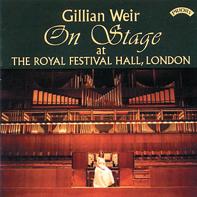 Julian Thomas
Julian Thomas
Cathedral Music 65
P3103 CM OCTOBER 06 27/10/06 14:02 Page 65
Cathedral
Allen Organs ................................................................38
Allegro Music ................................................................20
Christ Church Cathedral School ................................15
Common Praise ............................................................58
Dean Close Preparatory School ..................................35
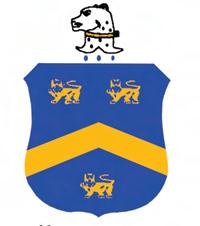
Dulwich College ............................................................21
George Sixsmith Organs ..............................................66
Harrison & Harrison ....................................................23
King’s School Gloucester ............................................67
Lammas ........................................................................65
LCM Examinations ......................................................41
Leeds Parish Church ....................................................27
Makin Organs ................................................................2
MUSIC Cathedral MUSIC George
Fax:01457 835 439
Advertisers and Supporters
New English Hymnal ....................................................64
New English Praise ......................................................65
Queen Elizabeth Hall ....................................................8
Regent Records ............................................................67
Royal College of Organists ..........................................46
Royal School of Church Music ....................................61

Salisbury Cathedral Voice Trials ..................................64
St George’s School, Windsor ......................................41
St John’s College Choir ................................................58
St Paul’s Cathedral ......................................................67
Trinity Guildhall Exams ..............................................53
Viscount Classical Organs............................................36
Westminster Abbey Choir ............................................66
Cathedral Music 66
Organ Builders We provide all types of new instruments New Organs Restoration Rebuilding Tuning Maintenance We can give unbiased advice for all your requirements Hillside Organ Works
Sixsmith &Son Ltd
Carrhill Road,Mossley,Lancashire OL5 0SE Tel:01457 833 009
P3103 CM OCTOBER 06 27/10/06 14:02 Page 66
St.Pauls Cathedral St.Pauls Cathedral
The Advent Procession
3 December at 1800
One of the year's most dramatic services as the procession moves from darkness to light. Words and music focus on the Advent themes of life and death, heaven and hell, time and eternity, judgement and healing
Handel's Messiah
6 December at 1830
St Paul's Cathedral Choir and Chorus with the City of London Sinfonia. Conducted by Malcolm Archer Ceremony of Carols by Benjamin Britten
11 December at 1700
The ever-popular work for boys' voices and harp, performed in candlelight by the choristers of St Paul's, with seasonal readings.
A Celebration of Christmas
14 December at 1830
Sponsored by Lloyds TSB, featuring the Choir of St Paul's Cathedral, City of London Sinfonia and celebrity readers
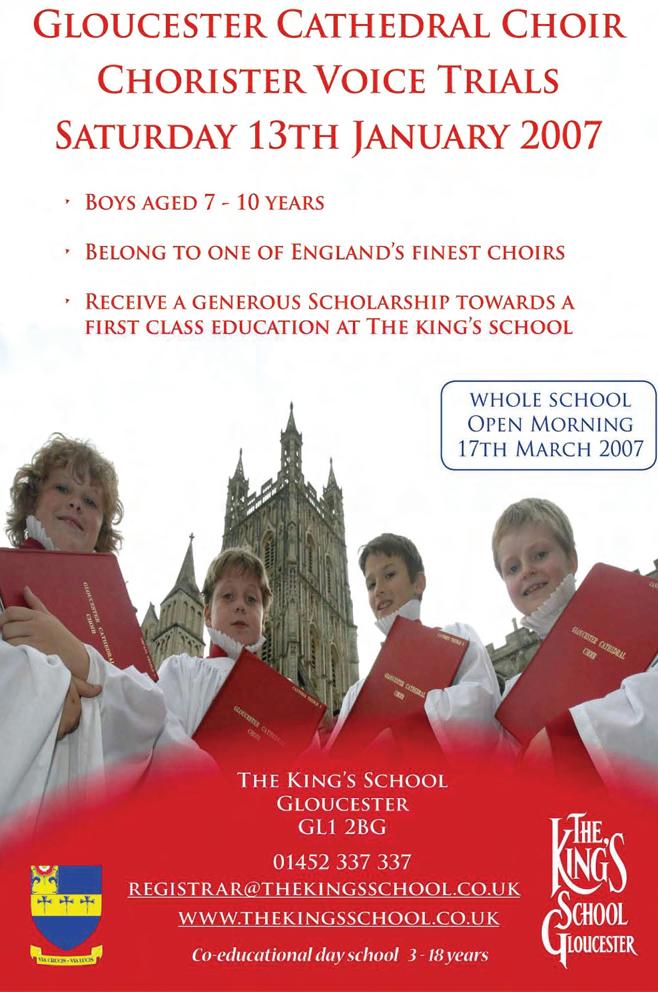
Christmas Carol Services
24 December at 1300 and 1600
Two atmospheric Christmas Eve services sung by the Cathedral choir For more information about any of these events please call 020 7236 4128 or visit www.stpauls.co.uk
Organ Spectacular CD featuring Widor's Toccata, Clarke's Trumpet Voluntary, Dubois' Toccata, Elgar's Nimrod and Whitlock's Folk Tune played by Huw Williams, SubOrganist of St Paul's. The last recording of the St Paul's Grand Organ featuring the famous royal trumpets before the 2007/8 rebuild. To purchase a copy tel:0207 248 0340

Cathedral Music 67
P3103 CM OCTOBER 06 27/10/06 14:02 Page 67
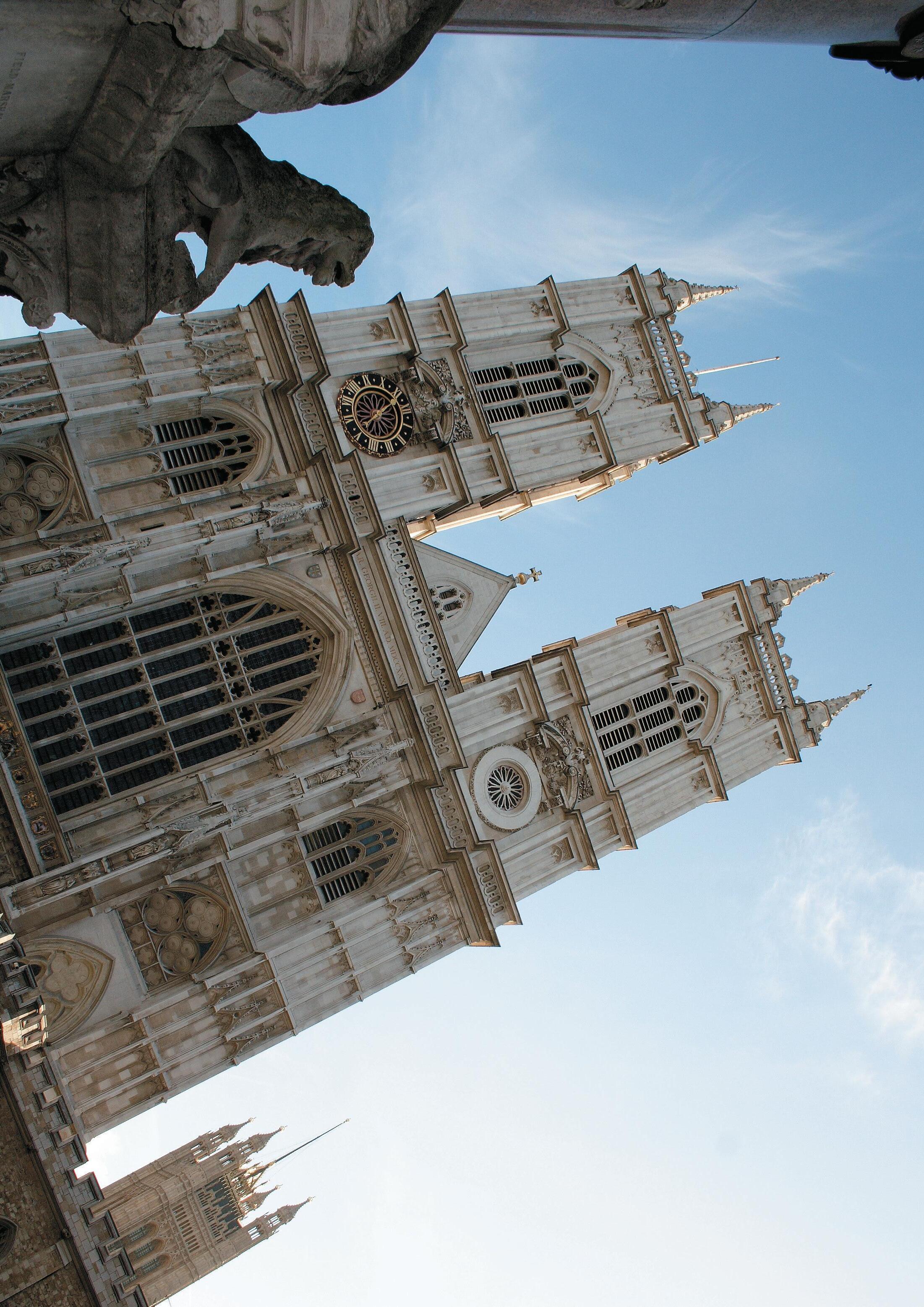
P3103 CM cover FINAL 27/10/06 14:11 Page 1


























































































 Cathryn Fogg
Cathryn Fogg
 David Truslove
David Truslove






 Julian Thomas
Julian Thomas








 Timothy Storey
Timothy Storey




 David Truslove
David Truslove



 Andrew Barnes
Andrew Barnes
 Ian Morgan
Ian Morgan
 Ian Morgan
Ian Morgan


















 Julian Thomas
Julian Thomas




